














Ah, Thetis Island. Those who have been there know what makes it such a special place. There are the lovely country roads winding around the island, the pastoral Capernwray Bible Camp with its rustic cemetery overlooking Preedy Harbour and there are two unique, well-protected marinas. If you have never stuck your bow into Telegraph Harbour, give Cherie Thiessen’s article on page 28 a read, and then go visit this Salish Sea favourite.
I go back to Thetis every few years and I’ve stayed at both marinas multiple times. Like Cherie, I am drawn to the ice cream and warm water swimming at Telegraph Harbour Marina, but also to the pub and deck at Thetis Island Marina—thankfully the two are within walking distance so there’s no need to make sacrifices.
I remember an autumn trip I took to Thetis in the early days of smartphones. Three friends and I left Ladysmith Fisherman’s Wharf early in the day with clear skies overhead and a light wind promising a lovely day of sailing. Unfortunately, not long after leaving Ladysmith Harbour a thick pea soup fog filled Stuart Channel and visibility became zero. So much for our lovely sail.
While the fog was eerie, there was no panic on board. We were in no rush and the winds were, of course, calm. But this was an autumn trip and daylight wouldn’t last forever so we didn’t want to bob in Stuart Channel all day. At that time, we had no fancy chart plotter or even a GPS aboard our little sailboat. But one of us did have a smart phone with google maps—a novelty at the time. (We had a compass and paper charts as well). Thankfully, the map app on the smart phone was detailed enough to guide us around the reef off the southern tip of Hudson Island and north into Telegraph Harbour where the fog lessened and visibility increased enough so we could see where we were going.
For the novice boaters aboard this was quite the adventure. Even for the more experienced among us it provided some tense moments and questioning of the forecast. But despite the unease, it never felt like we were in any danger. Nevertheless, we were all thankful to arrive at our destination. On this occasion we chose Thetis Island Marina where a hearty pub meal was a welcome restorative after our blind wandering off the coast of Chemainus.
There was no swimming on this trip, but the crisp fall days made for charming walks along the island roads and over the Capernwray grounds.
So, whether you decide to risk the fog and cruise to Thetis this fall or you wait until brighter days in the spring, add this classic Gulf Islands destination to your cruising itinerary. There’s comfort awaiting.
–Sam BurkhartTHE AFTERGUARD
EDITOR Sam Burkhart editor@pacificyachting.com

ART DIRECTOR Arran Yates
COPY EDITOR Dale Miller
AD COORDINATOR Rob Benac
DIRECTOR OF SALES
Tyrone Stelzenmuller 604-620-0031 tyrones@pacificyachting.com
ACCOUNT MANAGER (VAN. ISLE) Kathy Moore 250-748-6416 kathy@pacificyachting.com
ACCOUNT MANAGER Meena Mann 604-559-9052 meena@pacificyachting.com
PUBLISHER / PRESIDENT Mark Yelic MARKETING MANAGER Desiree Miller GROUP CONTROLLER Anthea Williams ACCOUNTING Elizabeth Williams
CONSUMER MARKETING Craig Sweetman CIRCULATION & CUSTOMER SERVICE Roxanne Davies, Lauren McCabe, Marissa Miller DIGITAL
Mark

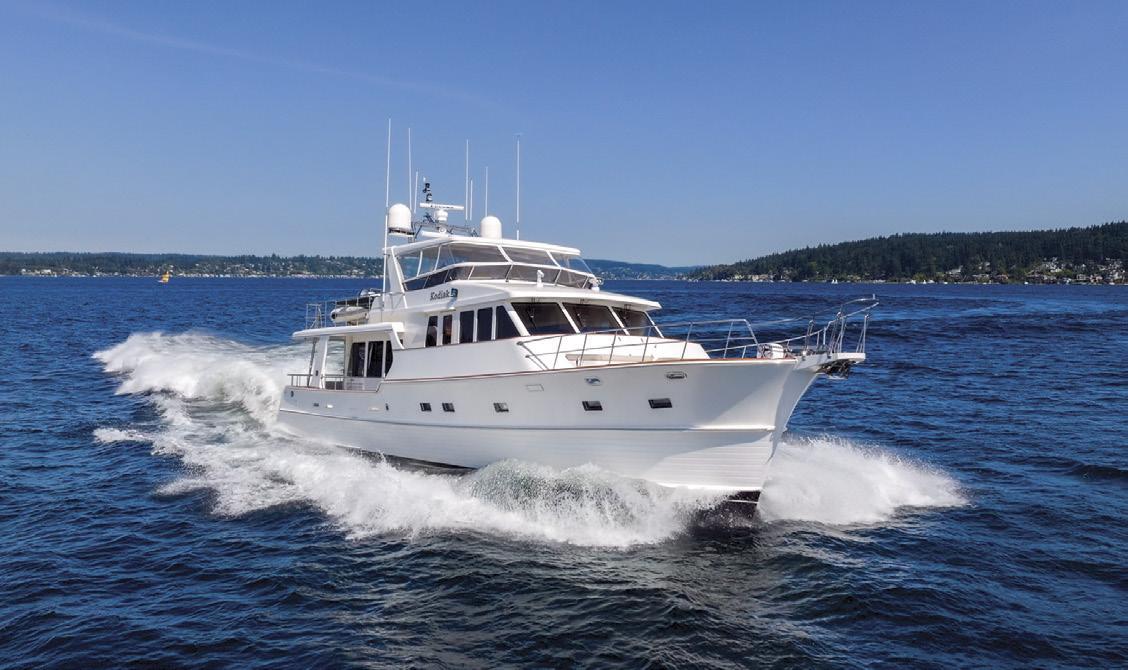





As many of your readers know, the Halibut Bank weather station provides valuable wind and wave data to inform boaters about what to expect in real time when planning to cross the Strait of Georgia. Forecasting tools
are helpful as well, but the weather stations are a very important aid for a safe crossing, especially for those operating smaller boats including our 32-foot Camano Troll. This weather station has been out of service for

several months and I am unable to find out when we can expect service to return. I have posted the question on a couple of forums and received messages that there are several other stations on the West Coast that have also been out of service for years. My reason for writing is to inquire whether Pacific Yachting could research and report on the matter and, in doing so as the voice of the boating community, inform the relevant authorities of our concerns.
—Richard HelmRichard,
We reached out to Weather Canada and received this response:
Thank you for sending your message to Environment and Climate Change Canada. The Halibut Bank buoy remains offline due to damage to the sensors and cables which may have been caused by sea lions. The buoy’s equipment failed to the extent that the buoy might need to be retrieved from its moored location. Environment Canada and Climate Change partners with the Canadian Coast Guard to service, retrieve and deploy buoys off the western coast of Canada. Earlier this year our scheduled spring service trip was postponed and later cancelled due to limited availability of ship personnel qualified to perform buoy retrievals at sea. It is currently scheduled to be visited during the last week of September.
—Bernard Duguay Weather Information SpecialistMy wife and I have enjoyed boating in these wonderful waters for the last 25 years. One of our favorite destinations is Plumper Cove on Keats Island which offers moorage as well as an opportunity to do a little hiking on the nearby trails. Unfortunately, the foot bridge at the north end of the Cove was destroyed three years ago and has not been replaced. Instead, boaters have replaced the bridge with random planks laid across the creek, hazardous to say the least. We are both senior and think it foolhardy to attempt crossing. The result is that the loop trail as well as the trail to Barnabas are no longer available to us. I have twice written to BC Parks who acknowledge my letters, but nothing is being done. Indeed, we offered to donate to create a fund to replace the bridge. Three years is too long to be without the full use of this area. We hope that fellow boaters and Pacific Yachting will add their voices to a speedy resolution.



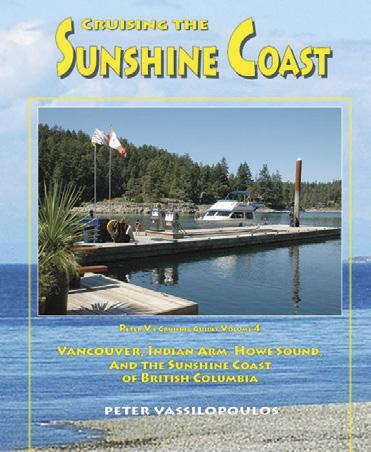
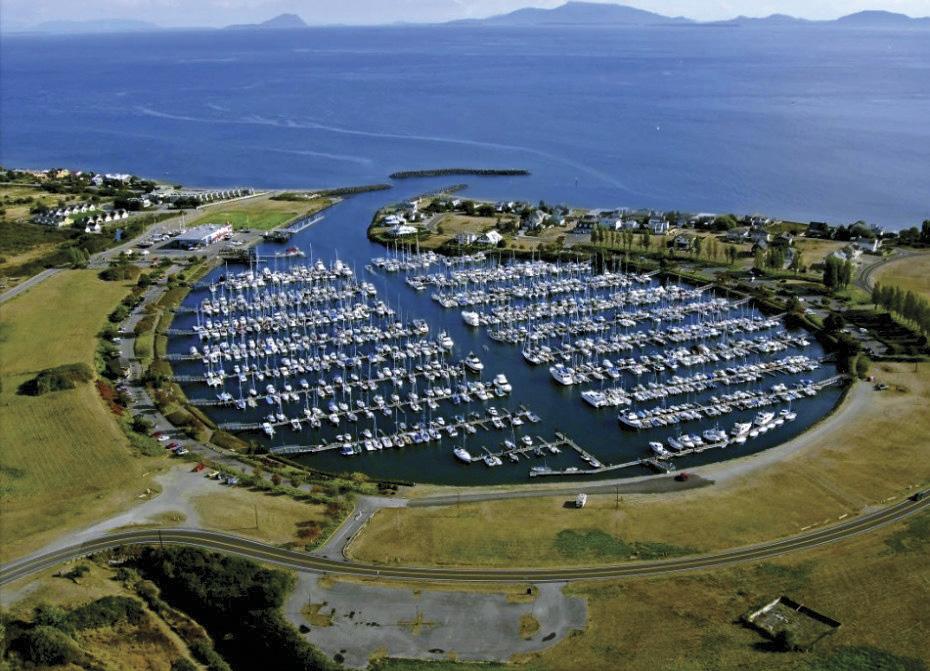 —Dennis Farrell & Barbara Fulton Paradis
—Dennis Farrell & Barbara Fulton Paradis



We spent the summer cruising our amazing waters of the British Columbia coast. We saw that many of the US vessels fly courtesy Canadian flags and many don’t. Why not? It’s a little thing but it shows respect and appreciation for the country you are enjoying. We always fly a US courtesy flag when we are in US waters. Speaking of courtesy, we sought a tie up at a government public wharf at Minstrel Island. It was blowing very hard northwest. There was a sailboat tied smack dab in the middle of a two-boat float making it impossible for us to tie up; We saw boats tied in the middle of large spaces again and again at docks all over BC. Please be aware there are other boaters and tie so there is as much room as possible.
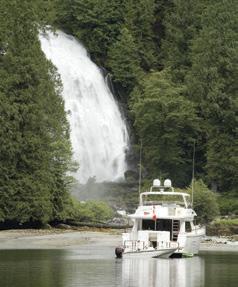


 —Kathy Conner
—Kathy Conner
September’s answer: Shell Beach, Portland Island with Brackman Island in the background.
We were overwhelmed with the number of responses to our first ever Geo Guesser contest in September, receiving dozens of correct answers. Clearly our readers are familiar with the beauty of Portland Island and its surroundings. Congratulations to Daryl Williams who was randomly selected as September’s winner. This month’s contest may be slightly more challenging. Send your guesses along with your name and address to editor@pacificyachting.com

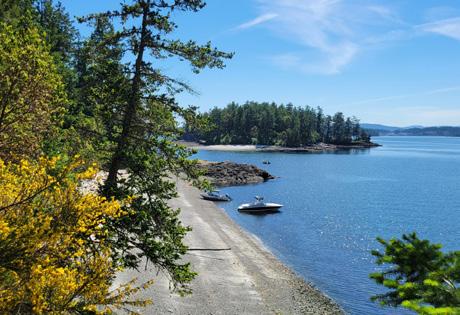
VANCOUVER ISLAND’S LARGEST MARINE DEALER
VANCOUVER ISLAND’S LARGEST MARINE DEALER






























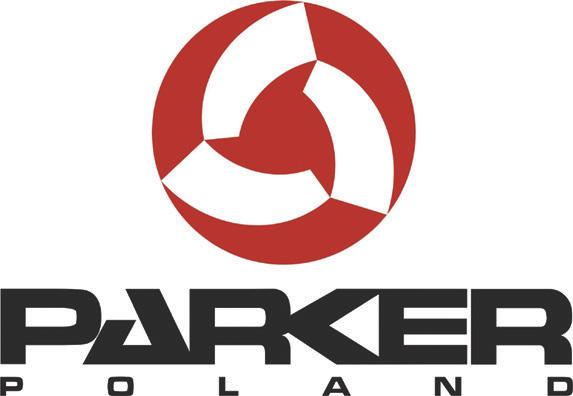
Over 36 Years in Business
Over 36 Years in Business
OVER 80 BOATS & 150 INFLATABLES
OVER 80 BOATS & 150 INFLATABLES
OVER 40 YEARS IN BUSINESS
IT’S A BOAT SHOW EVERY DAY AT SHERWOOD MARINE CENTRE!
IT’S A BOAT SHOW EVERY DAY AT SHERWOOD MARINE CENTRE!
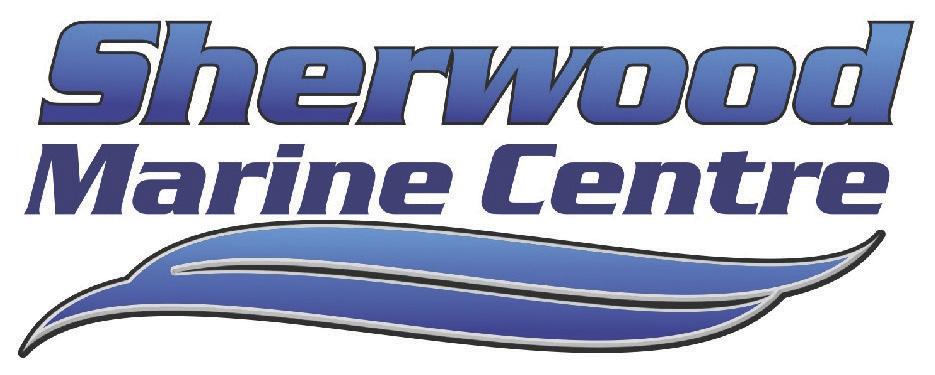


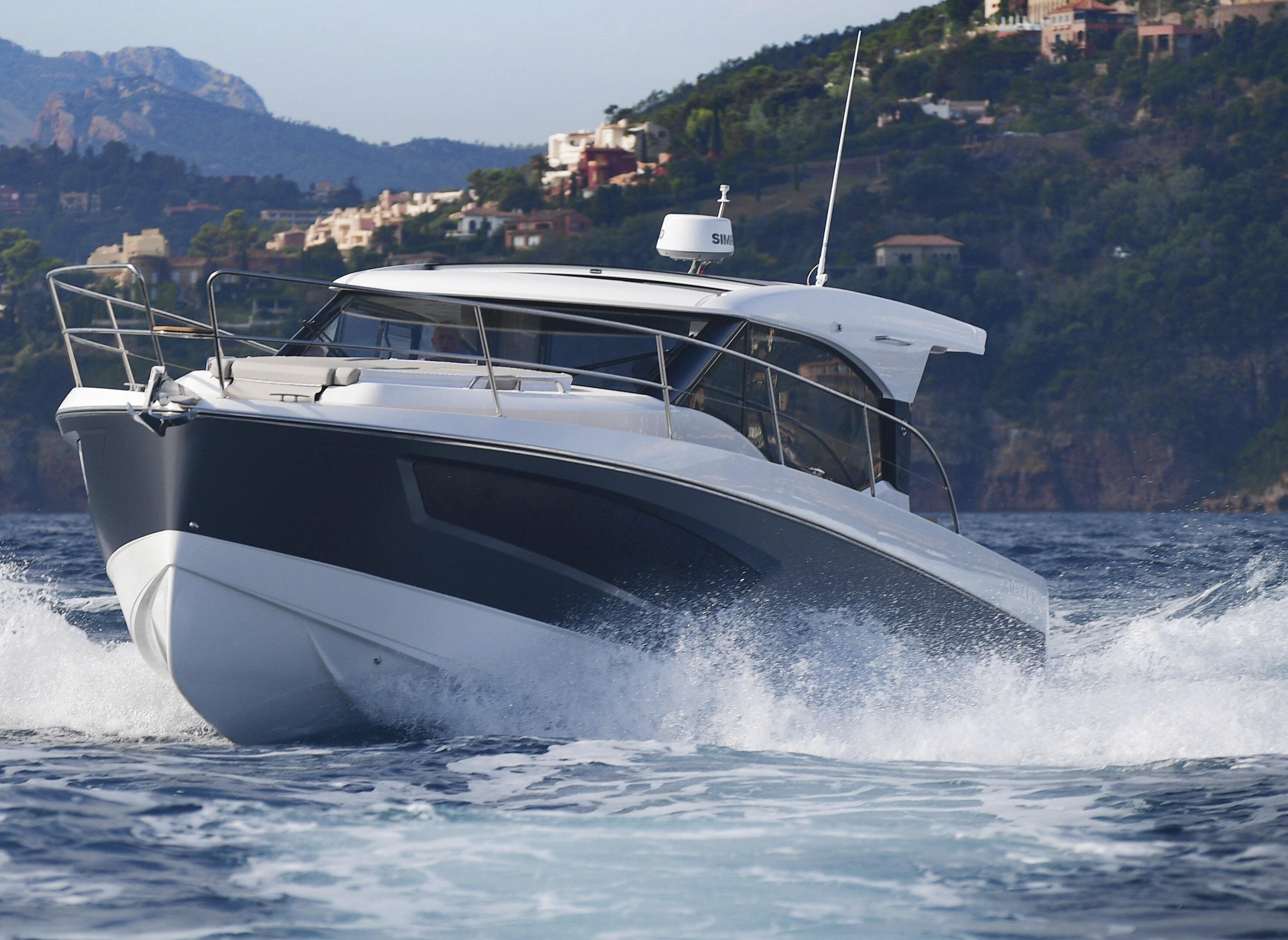
LOTS OF BOATS, INFLATABLES, AND TRAILERS IN STOCK















Fairwinds Marina lies in Schooner Cove off the Strait of Georgia a few miles north of Nanaimo. It provides both permanent and transient moorage and is known for its views of the strait and the Coast Mountains on the Mainland. “We are completely renovating,” said marina manager Rowan Gloag.
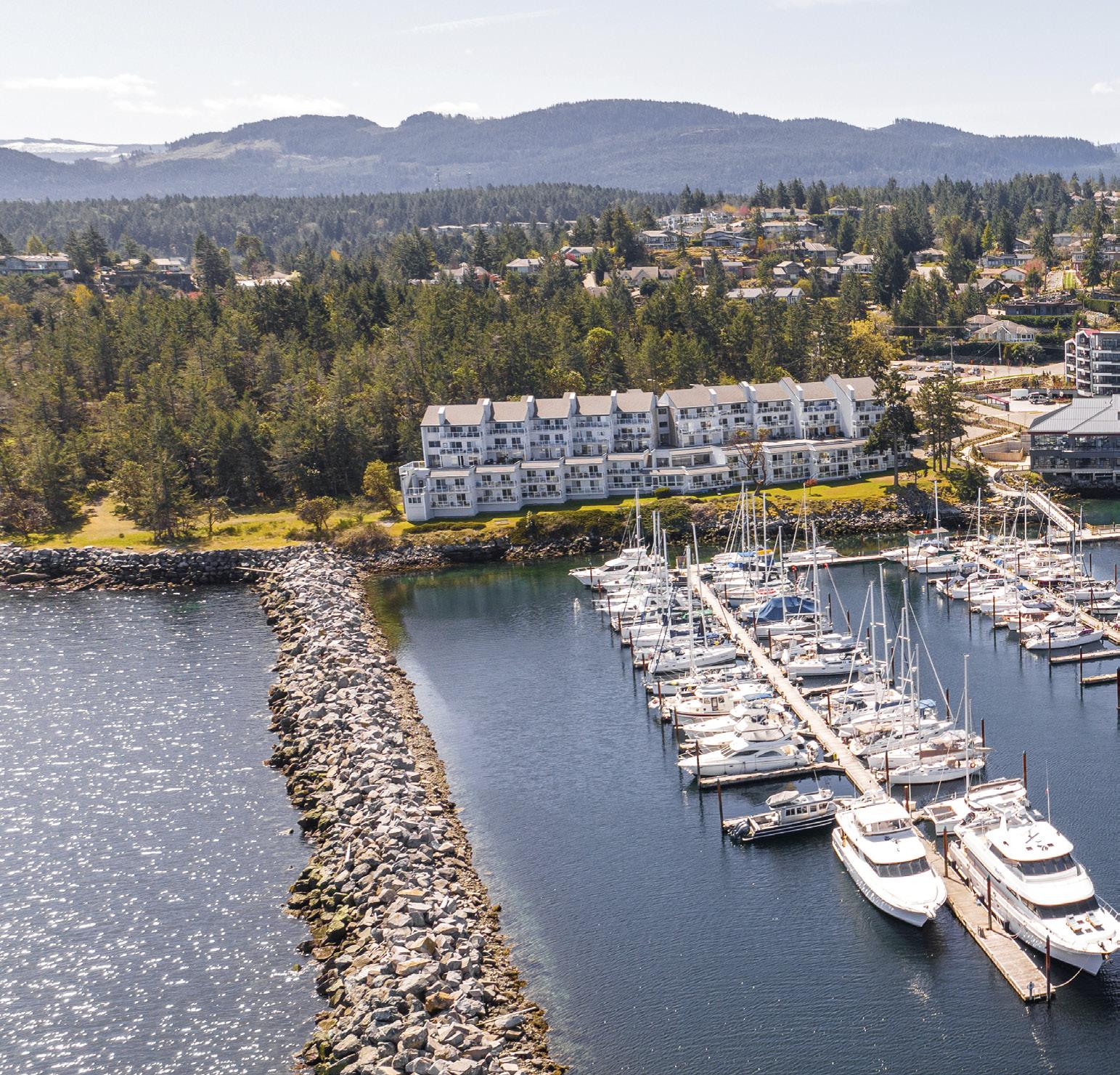
The rebuild of the on-site Nanoose Bay Café, which is managed by the same group as Gastown’s Waterstreet Café and Qualicum Beach Café, was recently completed. Breakfast is served and the menu focuses on West Coast cuisine with Asian influences. The café is on the second floor of the new building, while the ground floor accommodates free showers and free laundry facilities.
“We have 10,500 linear feet, that’s two kilometres of docks,” Gloag said. “Our public gangway is already completed. And we’ll be replacing 1/3rd of the docks each year over the next three.
They will be concrete docks.”
“Did you consider using fibreglass mini mesh that many other marinas are now using?” I asked. “No,” Gloag said, “despite our breakwater, we are exposed to swells caused by southeast winds. The materials we use must be heavy enough to withstand those pressures. And we want our guests to be comfortable.”
The docks will be anchored to steel pilings with nine-inch, 18-inch, and 24-inch diameters depending on their location. They will be wrapped in heavy duty, non-conductible plastic to prevent electrolysis-caused corrosion. Pumps and fire extinguishers make up the fire suppression system.
The Marina will be reducing the number of slips, always a contentious issue but a necessary development. “The slips will be larger and fewer,” Gloag continued. “The time that many people owned a 28 to 30-footer is over. We now have a long waiting list for boats ranging from 35, 40 and 50 feet long. We’ll also have

a handful of 60 and 70-foot slips, two 80-footers and we can accommodate a 100-footer as well.” The docks will be provided with 15, 30 and 50-amp power, with two berths offering 100-amp outlets. Free wifi and potable water are available throughout the Marina.


Fairwinds will continue to offer gas and diesel, has pump-out facilities and a kayak launch. The marina is part of the Fairwinds Oceanfront Community with its well-known 18-hole golf course. Marina guests who want some non-watery exercise, can rent their free clubs and catch a free shuttle to the golf course, and dine there as well.
Gloag warned that post Covid, there’s been a resurgence of pleasure craft from both Washington and British Columbia looking for moorage, so reservations are strongly recommended.
—Marianne ScottPatricia (Pat) Carney, business journalist, energy consultant, MP, federal minister, senator and defender of Canada’s maritime history has died in Vancouver at the age of 88. Some have described her as “feisty,” but that term doesn’t capture her powerful personality, work ethic and drive to get things done. As she recounted in her memoir, Trade Secrets, Carney was born in Shanghai in 1935, along with her twin brother, James Carney. Her father’s prescience led to a permanent move back to Canada in 1939, before the family—now including three children and a fourth on the way—could be interned in Japanese camps. The family moved to a ranch in the Kootenays.
After Carney’s studies in economics at UBC, she became the first female business reporter for the Vancouver Sun. When the paper went on strike, she spent a decade in the Northwest Territories and the Yukon freelancing and then founding her own consulting firm in Yellowknife. She also pioneered the beginnings of distance education for the BC government while developing a passion for politics.
When she returned to Vancouver she ran for Conservative MP for Vancouver Centre. Elected after her second campaign in 1980, she joined the House of Commons and then, under PM Mulroney, continued her list of “firsts” in breaking glass ceilings—the first woman in every federal portfolio she held, including minister of energy,
minister of international trade (the NAFTA agreement was negotiated under her leadership) and president of the Treasury Board.
She’d made a home on Saturna Island, which, despite many years in Ottawa, became her principal abode for decades. She often sailed with her twin in BC’s waters. Health issues led to her retiring from Parliament, but she was called to the Senate in 1990 and served for the next 18 years.

As the federal government destaffed and automated lighthouses around Canada, many of these historic building began to suffer from neglect. Carney saw this as a great loss to our maritime heritage. Her deep interest in coastal life led to her sponsoring a Senate bill—the Canada Heritage Lighthouse Protection Act—that would preserve lighthouses and other marinerelated structures that had heritage value. It was an uphill battle as the act was stopped many times and went through seven versions. It finally became law in 2008 after a 10-year struggle.
After retiring from the Senate, she returned to her life on Saturna Island and served as an active community member. She received the Order of Canada in 2011. She wrote a best-selling romaná-clef book, On Island, a charming, humorous series of tales depicting her Saturna life and that of her neighbours.
Her deep affection for British Columbia, its farms, fisheries, islands and nautical heritage were in her bones and dominated her interests throughout her adult life. She was a trailblazer and role model for many.
—Marianne ScottSidney, BC | 250-656-2639
INA MARINE Victoria, BC | 250-474-2448
INLET MARINE Port Moody, BC | 604-936-4602
LA MARINE Port Alberni, BC | 250-723-2522
LUND AUTO & OUTBOARD LTD. Lund, BC | 604-483-4612
MADEIRA MARINE 1980 LTD. Madeira Park, BC | 604-883-2266
M&P MERCURY SALES Burnaby, BC | 604-524-0311
MONTI’S MARINE & MOTOR SPORTS Duncan, BC | 250-748-4451
ROD’S POWER & MARINE LTD. Tofino, BC | 250-725-3735
SEA POWER MARINE CENTRE LTD. Sidney, BC | 250-656-4341
MERCURY 5.7L V10 350 AND 400HP
V10 Verado outboards shift your expectations performance feels like. They come to power, propelling you forward to sensational smooth, quiet and refined, they deliver only Verado outboards can provide.
VECTOR YACHT SERVICES LTD. Sidney, BC | 250-655-3222
Mercury engines are made for exploring.



400HP VERADO
From the morning bite to the evening cruise and every sandbar in between, Mercury Avator™ 20e and 35e electric outboards are engineered to empower your perfect day. Their modular batteries give you the flexibility to optimize your propulsion system for wherever your imagination leads you.
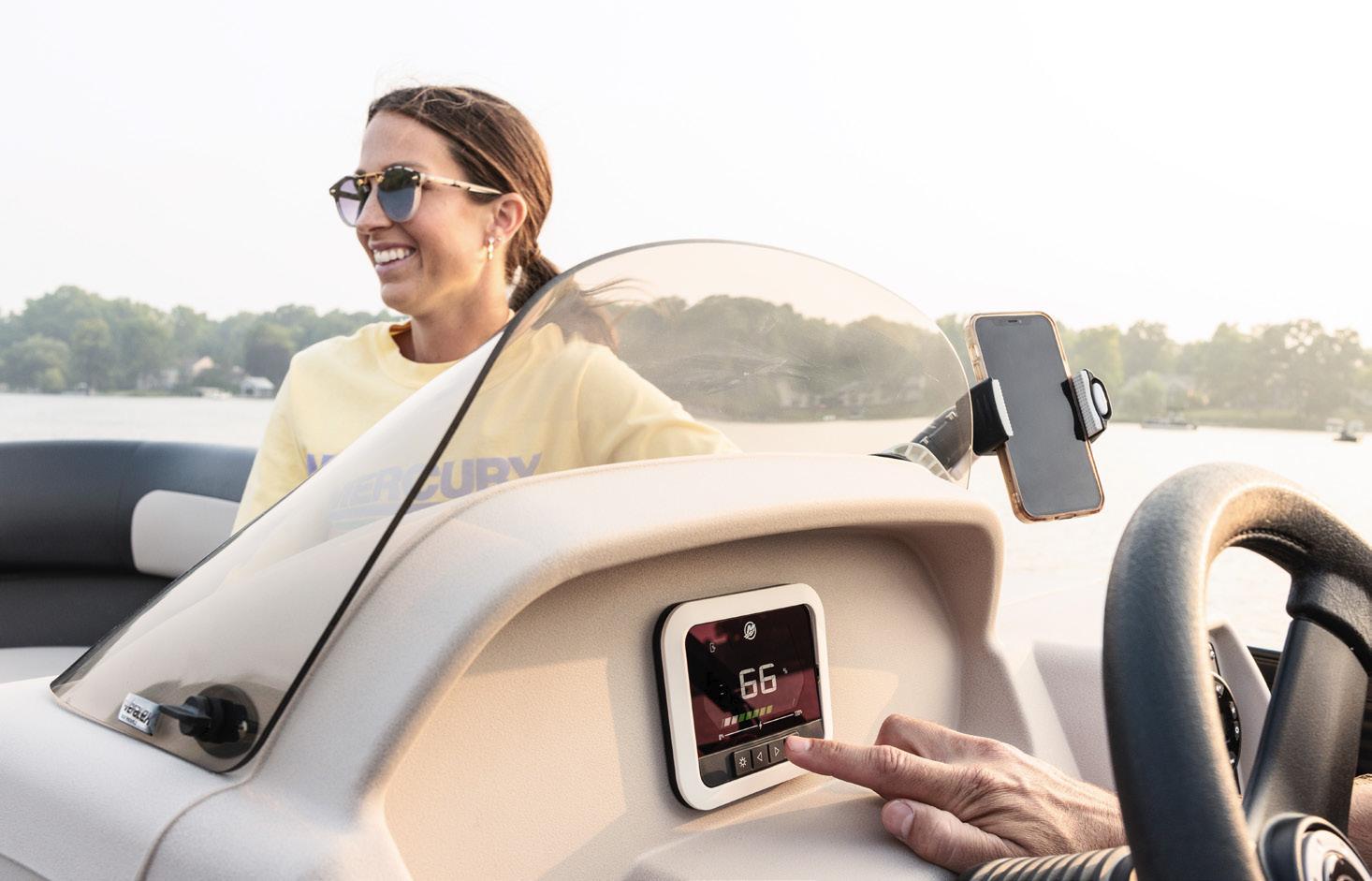

expectations of what high-horsepower to life with impressively responsive sensational top speeds. Exceptionally deliver an unrivaled driving experience exploring. So are you. Go Boldly.
Avator is intelligent, all-electric propulsion, designed to make exploring effortless.
it was the coolest thing to see my dad’s (Bryan Colwell) name on the multihull trophy,” said Ben Colwell. “I remember thinking to myself, as a kid, someday my name will be on that trophy.” He was right. Ben Colwell has placed first in the multihull division eleven times since 2006.
A shout out goes to RIFF, a J70 with the double-handed team of Boris Luchterhand and tactician Ryan Forbes for placing first in PHRF-B division and first overall on corrected time. “Ryan made the bold decision to hoist a kite at the start that got us away quickly,” said Luchterhand. “We love this race and had fun every moment just like every year!”
Spirits were high and spirits were enjoyed as racers once again gathered at the lovely SJIYC clubhouse overlooking the harbour for post-race banter and a hearty lasagna dinner.
Sunshine, blue skies, fluky winds and a flood current set the stage for the 53rd annual Shaw Island Classic yacht race hosted by the San Juan Island Yacht Club on August 12.
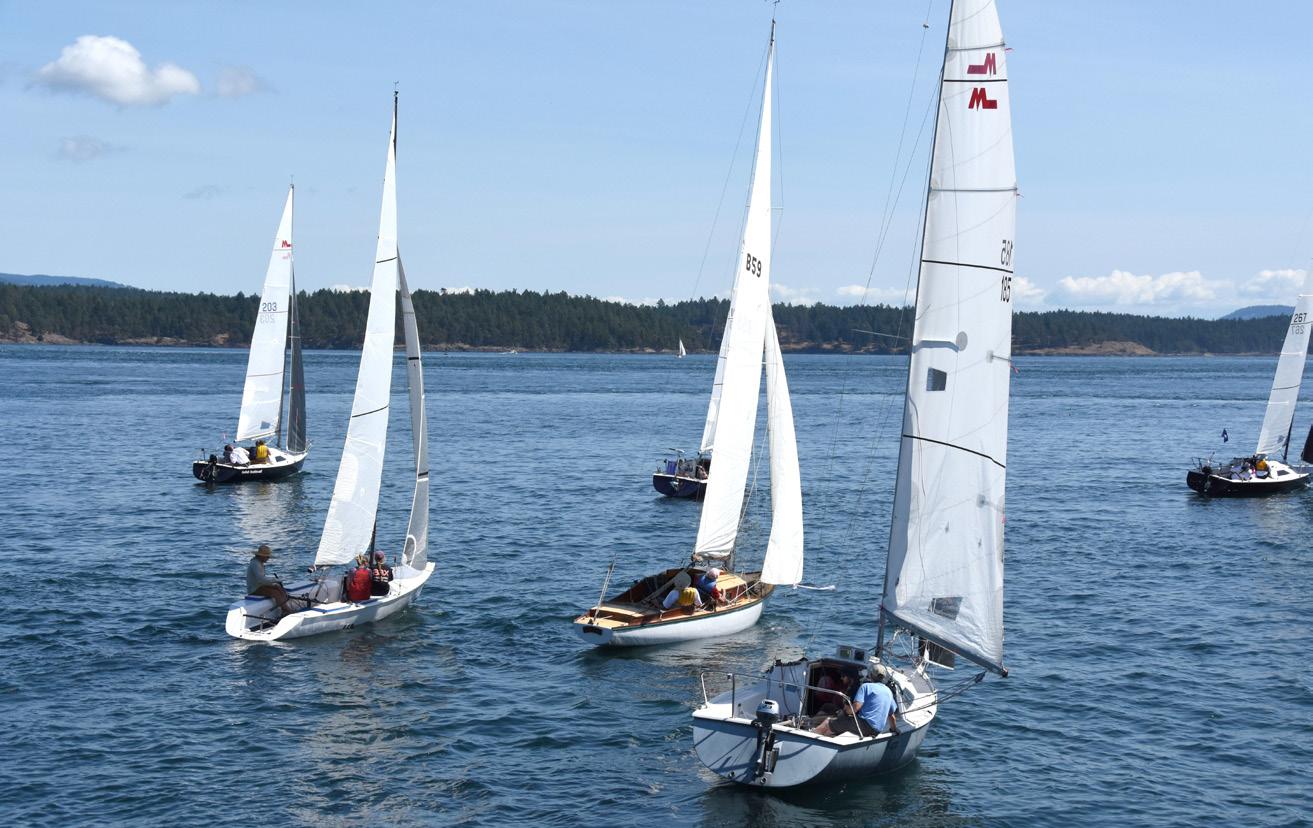
This race is unique in that Shaw Island is the only mark and can be rounded in either direction. It is only a 13-mile course, but shifting winds, variable currents, narrow rocky channels, and ferry traffic often turn it into a nautical chess game.
Most of the fleet of 33 boats took a counter clockwise course betting there was enough wind at the start to overcome the flood current in the San Juan Channel. Theoretically, this course would allow riding the flood through the notoriously windless Wasp Passage. This bet paid off with nearly all counter clockwise boats finishing the race.
With boats ranging from a Formula 18 multihull to a Concordia 50 monohull, the racing advantage can shift quickly. “This year’s race was especially taxing, battling it out with Hydra (a King 40) in light winds, conditions that do not
favour us.”, said Ben Colwell, skipper of the Formula 18, Rum Line, and firstplace finisher in the multihull division.
“We eventually caught Rum Line,” said Sam Richardson, skipper of Hydra and third-place finisher in the PHRF-A division, “but it didn’t last as they sailed impressively through the last third of the race with good speed and tactics.”
The Shaw Island racers know their competition as most have entered this race for many years and in some cases, over multiple generations. “I thought
The Perseverance Award, in honour of Wally Lum, who skippered Marquita in the first Shaw and has competed in every race since, goes to the last boat to cross the finish before the deadline. This year’s winner was Juans2B, a San Juan 21 skippered by Paul Von Stubbe, one of only two clockwise boats to finish the race.
Complete results and photos are posted at the club’s website at sjiyc. com/shaw
—Peg GerlockOur Summer Cruising Roundup feature is coming up in the December issue and we’d love to hear how you and your friends made the most of the cruising season. Information on rendezvous and boat meetups along with photos can be sent to editor@pacificyachting.com
Deadline: October 15




It’s with great sadness that we have learned of the fiery devastation of Lahaina, Maui’s main municipality. The appalling death toll, the obliteration of a historic town, and the disappearance of the Lahaina Yacht Club are deeply shocking, especially as so many Canadian sailors have built strong bonds with Lahaina sailors and residents over many years when participating in the Vic-Maui Race, jointly sponsored by the Royal Vancouver Yacht Club and the Lahaina Yacht Club. As LYC’s Commodore Dave Schubert wrote on Facebook, “I write this with pure sorrow. Our beloved Lahaina Yacht Club and Lahaina Town has been devastated. The entire town of Lahaina and our home is gone and is now just ash and rubble.”
Vic-Maui race coordinator
Jim Innes expressed his condolences on the RVYC website: “All of us at RVYC and on the Vic-Maui team are deeply saddened by the news of the Lahaina, Maui wildfires. We
have reached out to our contacts in Lahaina, including the commodore of the Lahaina Yacht Club and members of the Vic-Maui team, to offer our support and condolences.”

And past RVYC commodore Vern Burkhardt, who’s completed 13 VicMaui Races and 13 returns said “I am deeply saddened by the loss of life, and the pain and suffering of the survivors of this tragic event. The enthusiastic welcome from Lahaina residents and the Lahaina Yacht Club members have consistently been one of the highlights of the Vic-Maui Race… It is almost beyond belief that this charming town in paradise has been destroyed by fire.”
Lahaina survivors will need our “kokua” (desire to help one another) as they cope with the future. It may seem trivial to wonder about the future of the Vic-Maui Race given the extent of the disaster. This 2,308 mile biennial race, which has run since 1965, is a part of Lahaina’s history. We hope Lahaina will recover and the race will continue.
ANCHOR MARINE
Victoria, BC 250-386-8375
COMAR ELECTRIC SERVICES LTD
Port Coquitlam, BC 604-941-7646
ELMAR MARINE ELECTRONICS
North Vancouver, BC 604-986-5582
GLOBAL MARINE EQUIPMENT
Richmond, BC 604-718-2722
MACKAY MARINE
Burnaby, BC 604-435-1455
OCEAN PACIFIC MARINE SUPPLY
Campbell River, BC 250-286-1011
PRIME YACHT SYSTEMS INC
Victoria, BC 250-896-2971
RADIO HOLLAND
Vancouver, BC 604-293-2900
REEDEL MARINE SERVICES
Parksville, BC 250-248-2555
ROTON INDUSTRIES
Vancouver, BC 604-688-2325
SEACOAST MARINE ELECTRONICS LTD
Vancouver, BC 604-323-0623
STRYKER ELECTRONICS
Port Hardy, BC 250-949-8022
WESTERN MARINE CO
Vancouver, BC 604-253-3322
ZULU ELECTRIC Richmond, BC 604-285-5466

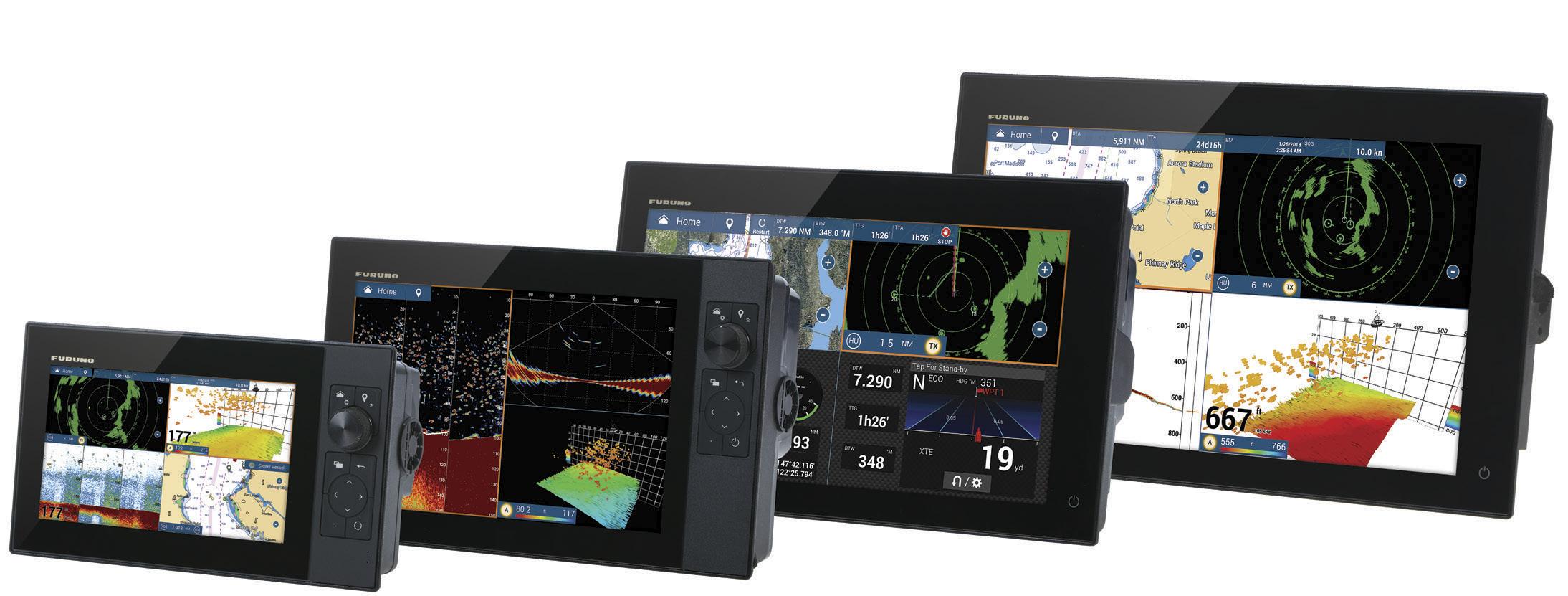
 By Sara Ellison Harbour Publishing, $26.95
By Sara Ellison Harbour Publishing, $26.95
From her boat and from the beach, Sara Ellison has been exploring marine life in British Columbia’s waters through a snorkel lens. She implies that many people might shiver when thinking about putting their 36oC body into our eight to 12oC water, but that they’re missing the biodiverse, colourful fauna and flora that thrive in our local waterways.

The book mixes practicality and 51 excellent snorkelling sites with caution. Ellison is an astronomy professor at UVic—as well as a triathlete—and carefully documents her snorkelling locations and underwater discoveries while always pointing out when knowledge is incomplete, or that coastal conditions may change with tides and wave action and could differ from her descriptions.
Sea stars, anemones, nudibranchs and other critters are depicted in excellent colour photographs throughout the book. Her list is not exhaustive, she writes, but she has inserted photos of
different species likely to be found in the locations she describes. She also lists the best destinations to see different sea life species. As one example, she catalogues the coves and bays where some of BC’s 25 species of sea stars thrive.
The introduction offers specific details on what you need to snorkel safely. Ellison describes what wetsuit might suit you under what conditions; gloves, boots, weight belts and fins are also covered. She provides tips on avoiding close encounters with sea lions, seals and various whales. Like whales and other creatures, you may get entangled by fishline, so don’t go snorkelling without a dive knife, she advises. And don’t get speared by urchin spines.
To encourage beginner snorkelers, Ellison outlines sites that are relatively easy to access, are often current free, and where enough marine life flourishes to entice snorkelers back for more exploration. The breakwater at Ogden Point in Victoria is one example of a great place to get started as there is a wall to follow. She also recommends highly protected Peter Cove on Pender Island where
The Northwest Marine Trade Association (NMTA) has announced the continuation of its Grow Boating grant program for 2023/2024, once again offering 10 $1,000 grants to entities that help support its mission of growing boating in the Pacific Northwest.
The application process is now open and closes October 31, 2023. Grants will be announced in December and funds will be distributed to grantees in the spring of 2024. More information about the grant program, types of programs funded, and the application can be found at nmta.net/grants.
Pacific Yachting’s annual photo contest is back! Send us your best boating photos from 2023 for a chance to be featured in Pacific Yachting. Prizes include gear from Yeti, Mustang and Salus Marine! For contest rules and to enter, visit pacificyachting.com/photo-contest.
Deadline: December 15
shallow water doesn’t require diving. For each region, all colour coded, an accompanying map shows the best snorkelling locations. Ellison describes each site and its characteristics, followed by the signature species, and then the individual “critter” list. The spot’s accessibility is next, followed by warnings and tips about such things as boat traffic or heavy vegetation like bull kelp during the summer. Where appropriate, she also includes such fun items as the summertime food trucks at Ogden Point.
Ellison has prepared an excellent guide to snorkelling in our region. The photos are stunning and should encourage people to explore. For recreational boaters, kayakers and even paddleboarders, it provides destinations where they can experience one more delightful adventure.
—Marianne Scott

As we come and go from our moorage, we pass a long-neglected boat. It makes me sad to see paint peeling from the cabin and growth hanging from the bottom. Once a source of pride, joy, and adventure, it appears to have become a burden. Someone’s dream has become a

Anightmare. And it is not alone. All over the Salish Sea, ghost boats— abandoned, wrecked, sunken, partially sunken or about-to-sink vessels—create hazards to navigation and risks to the health of the sea and the creatures who live in it. Many contain oil and other hazardous materials. Hidden in some are the three big baddies: asbestos, lead and PCB’s. Paint and bottom paint flake off into the water. Sealants, adhesives, floor coverings and ballasts from light fixtures break down and release chemicals that endanger marine life.
The problem is, when boats become too costly or difficult for the owners to

maintain, there is no easy way to dispose of them. What can we do to fix this?
In 2019, Canada created the Clean Coast, Clean Waterways initiative. Since then, dozens of derelict and abandoned vessels have been removed from British Columbia’s lower mainland, along with other marine trash such as mooring buoys, polystyrene foam and aquaculture debris.
In 2002, Washington State passed a law granting the Department of Natural Resources (DNR) the right to remove vessels up to 200 feet long when they are abandoned on public property. Since then, they have disposed
Kick start your repower now! Free Stainless steel Prop with any repower for October.







of over 1,000, ranging from a 12-foot skiff to a 185-foot former Russian fishing boat. Unfortunately, they generally exhaust their funds before more money becomes available in the next budget cycle. And they do not have jurisdiction over boats abandoned on private property.
In many communities, local governments and organizations are doing their best to prevent new wrecks and clean up existing ones, but it’s difficult to get ahead.
The problem is immense. Cleanup is costly, and there is much more to do. Can we do a better job of preventing
The National Oceanic and Atmospheric Administration (NOAA) recommends teaching owners about the hazardous materials contained in boats, how to safely dispose of them, and how to recycle useful materials; also, about voluntary turn-in programs and salvage businesses that might take their vessels.
Better yet, perhaps we can find a way to turn potential trash into treasure.
A pilot study at Port Townsend, Washington, demonstrated that it is possible to make useful products out of boat parts. To make this financially feasible, we would need boat recycle
centres that are able to provide a regular, predictable supply of materials, and manufacturers would need to adapt their processes and find more innovative uses.
This is one possibility. We need to continue to find ways to solve the problem. But with public education and support for legislation that funds cleanup and recycling, we can reduce ghost boat hazards in the Salish Sea.
Meanwhile, October is the month for two-legged ghosts and goblins who need regular care and feeding. Here’s a quick-cooking recipe guaranteed to bring them all back for more.
Notes: • This cooks quickly, so prepare everything before starting to cook.
•What makes this dish a success is crisp-tender vegetables and tender, just-cooked beef.
For the steak:
•340-gram (12 oz) sirloin, flank, or other beef steak
•2 teaspoons cornstarch
•1 tablespoon soy sauce
•1 tablespoon rice wine or dry white wine
•1 teaspoon toasted sesame oil
For the vegetables: Combination of green vegetables such as broccoli, broccolini, baby bok choy, green beans, asparagus—enough to make approximately 6 cups chopped
•6 scallions, white part plus tender green tops
•1 medium–large carrot
•1/2 red bell pepper
•1 tablespoon minced garlic
•1 – 3 teaspoons minced ginger (It gives a nice zing to the dish, but 3 teaspoons might be too much for some.)
For the sauce:
•1/4 cup chicken broth
•2 tablespoons rice wine or dry white wine
• Serves 4
•1 1/2 teaspoons toasted sesame oil
•1 tablespoon oyster sauce
•1 tablespoon soy sauce
•2 tablespoons water
•1 teaspoon freshly ground pepper
•1 1/2 teaspoons cornstarch
1. Put steak in freezer for 15 minutes to firm it. Slice across the grain into thin strips.
2. Mix remaining four steak ingredients. Add steak strips and stir to coat. Then set aside for 30 minutes at room temperature.
3. Start cooking rice somewhere in here.
4. Mix sauce ingredients and set aside. (Mixing in a measuring cup makes this easy.)
5. Cut vegetables into five-centimetre (two-inch) lengths or bite-sized chunks.
6. If using bok choy, remove the leaves from the stems and slice the two parts separately. (Set the leaves aside to add at the end of cooking.)
7. Mince garlic and ginger.
8. Heat one or two teaspoons of olive oil in wok or heavy frying pan on medium-high and add the beef in a single layer. Brown without stirring for one to two minutes. Turn until browned on both sides. Remove to a clean dish.
9. Add one or two teaspoons oil to same pan, then the vegetables that will take the longest to cook. For tough vegetables such as broccoli and green beans, add 1/2 cup water or broth, cover, and steam for two minutes. Remove the lid and cook off the moisture (about three minutes) before continuing. Add remaining vegetables. Move to side when ready.
10. In the centre of the pan, add one teaspoon oil, then garlic and ginger. Stir for one minute or until fragrant, then stir into vegetables.
11. Whisk the sauce, add to pan. Simmer until it thickens. Then add the meat and toss to mix.
12. Serve at once with steamed rice.











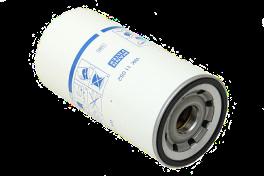






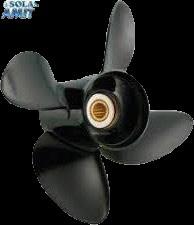
Up to the age of fossil fuels born from trees and dead dinosaurs, wood was the most commonly used material for vessels crossing local waterways, and later, oceans. When recreational craft began using fibreglass and resin as its standard, wooden boats faded into the background, in part because of their vulnerability to rot and teredo worms. Tony Grove states it succinct-
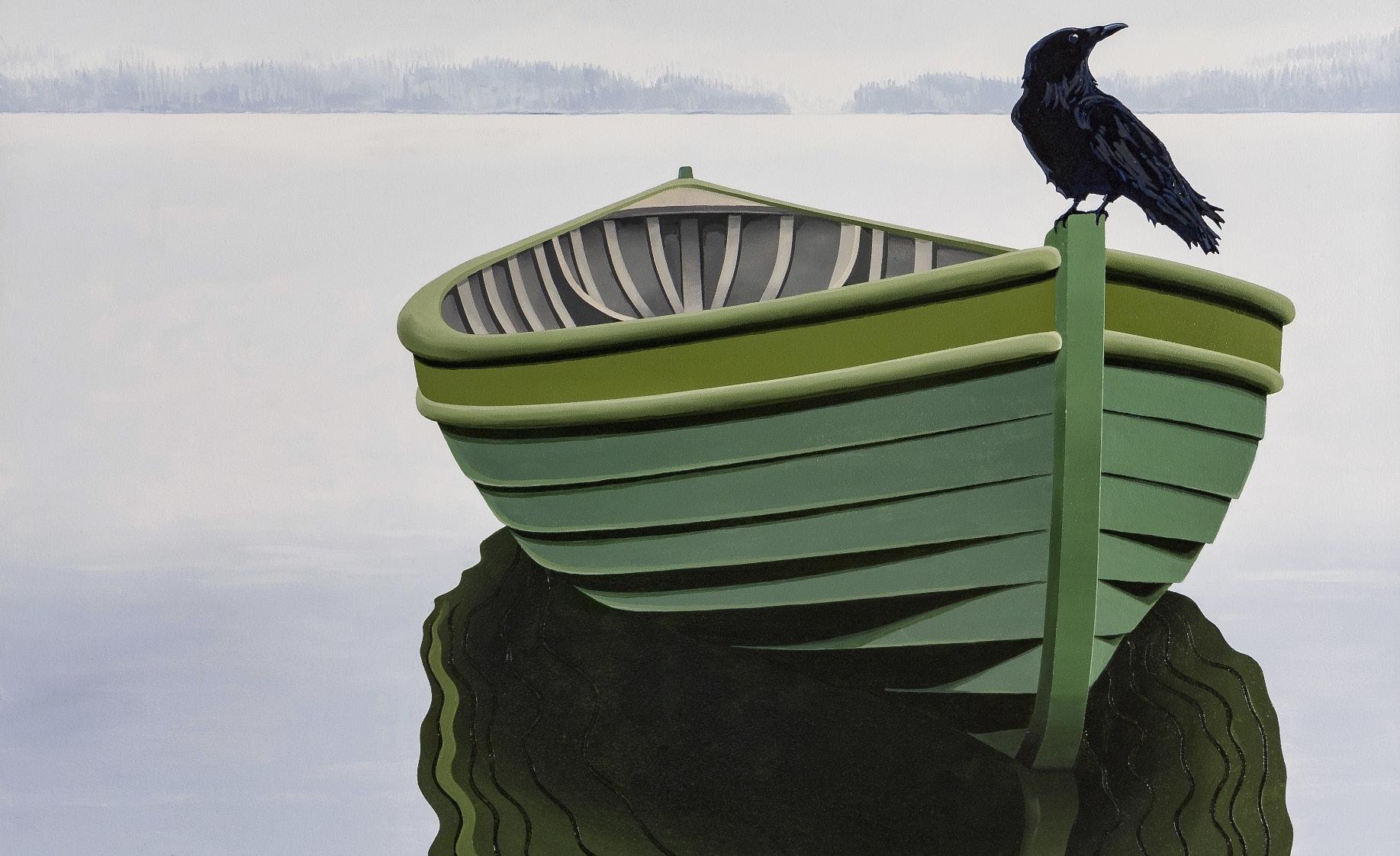 BY MARIANNE SCOTT
BY MARIANNE SCOTT

Uly, “All wood eventually breaks down and reverts to its natural state to create new earth and new trees.” Despite wooden boats’ high maintenance, they continue to capture many people’s imagination for their individuality (no hundreds of copies made from the same mold), history and yes, romance. Classic wooden boat shows continue to draw oglers around the world and owners continue to cherish them.
It’s in this wooden world that shipwright and artist, Tony Grove, a youthful looking 60, has been immersed for decades. His most recent project, which lasted on and off for more than a decade, was the rebuilding and restoration of Dorothy. Clocking in at 126 years, she’s Canada’s oldest floating sail-
ing yacht. In addition, Tony has constructed boats, restored other wooden vessels, built fine furniture, taught shipwright techniques and woodworking courses in many places, written articles on the finer points of woodworking and blogged while also painting portraits of wooden vessels of all sizes.
TONY BEGAN LIFE in Toronto but his parents moved to Vancouver when he was a few months old; he’s been a coastal resident ever since. “My dad was South African and mum was Australian, two countries bounded by oceans,” he said. “Dad often took me fishing up the coast in a small boat. That was my intro to boating.”
As a 17-year-old, he worked aboard
a freighter as a deckhand for three months. “We sailed from Tacoma to San Francisco, then LA and on to Japan and back,” he said. “It helped that my uncle was a captain on a Norway line.”

When graduating from high school, however, he was unsure of what was next. He liked art but decided he needed a real job. “In 1980, there was a boat building boom in Vancouver,” he recalled. “I looked at hands-on apprenticeships in woodworking and shipwrighting and joined Vancouver Shipyards in North Van in 1980.”
Some of the work was demanding. Tony recalls having to quickly finish a repair on a damaged tug. “It was sloppy weather, I’m trying to clamp on a piece of metal, my feet are in the slush and I’m welding it all together so that the
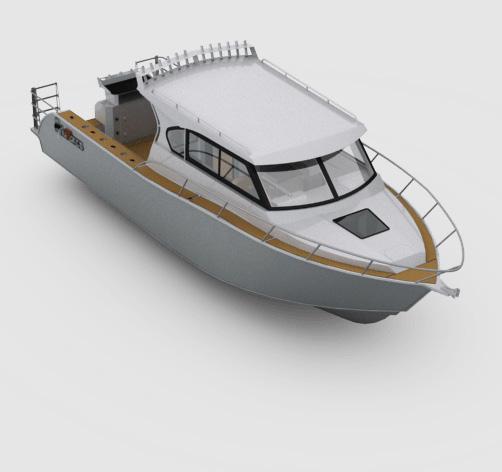
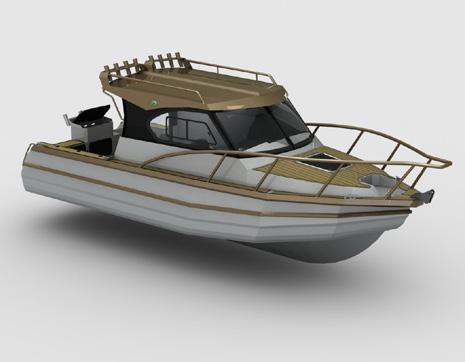
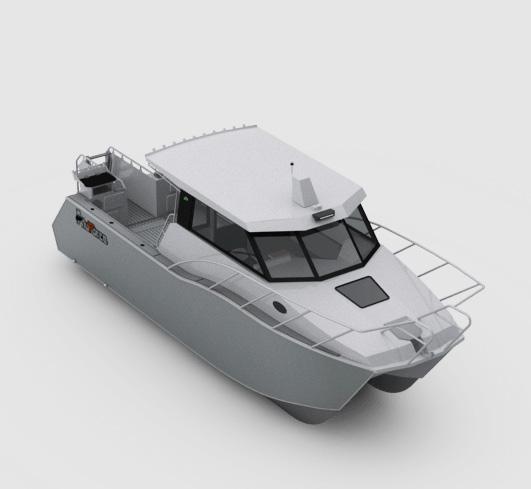
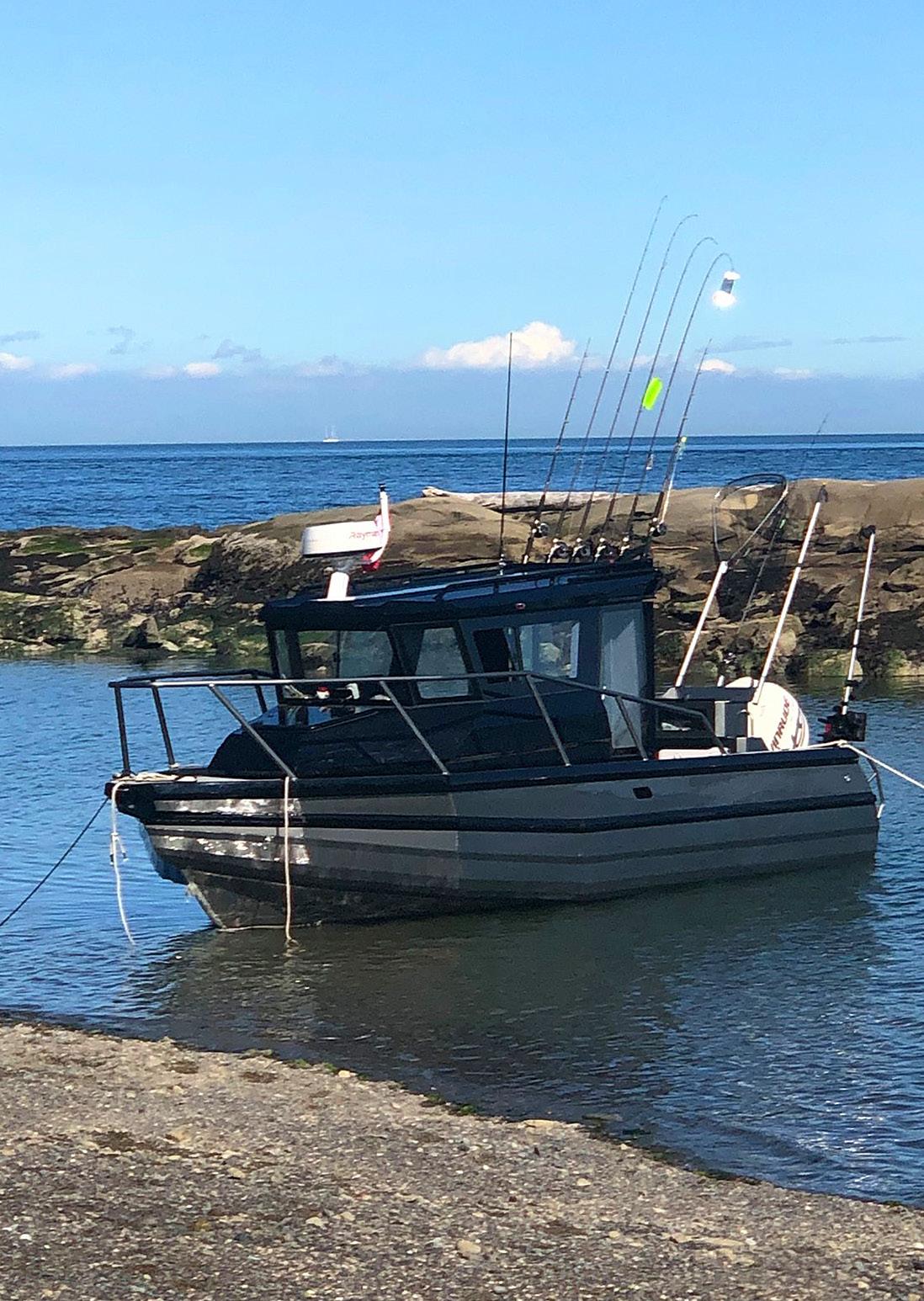
tug could leave on time,” he said. “It was dangerous.
“After that event, I took off a couple of weeks so I could ‘adjust my attitude.’” Did I want to continue in this field? What’s good about this work? What’s positive about this profession? Upon reflection, I decided that I’d look at the job, and life, with optimism and that’s what I still do. It’s a great cure for what might otherwise depress you. And thinking positively is also good for health.”
He completed his shipwright apprenticeship in 1986.
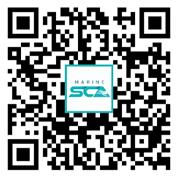
IT WAS TIME for his Grand Tour, but not the way stylish, young British aristocrats once travelled Europe as a rite of passage. In 1986, Tony went back-
packing for two years, travelling by land and sea rather than air. “Did you have trouble communicating with folks in those diverse places?” I asked. “Nay,” he said. “you can always find a way to communicate when you work at it.”
He sailed from Hong Kong to Shanghai on a small passenger ship dating back to the 1920s, finding its Art Deco style fascinating. He spent eight days aboard a train crossing the vastness of Siberia. He then headed south. He noted how in Lamu, a small port town and island on the Kenyan coast, south of Somalia, boatbuilding was done by eye, completely without ship plans. When he finally reached a South African marina, he began looking for a boat that would provide passage to South or North America.
“I was ready to be home,” he said, and those two years of backpacking got travel out of my system.”
ONCE HOME, HE looked for work and found a small boatyard on Mosquito Creek, run by a couple named Gar and Jean, who specialized in wooden boat restoration. “Not many people did these types of boat repairs,” he said. “I learned so much there—often about what doesn’t work, improper installations and bad products in inappropriate places.”
He found the workplace with four other staff congenial and family-like. Once a month the fluorescents were turned off, a fire was lit and they’d sing Leonard Cohen songs accompanied by a guitar. “It was a special time in life,” he said. “It convinced me that I wanted to work in wood, not fibreglass.”
Step by step, he perfected his craft and even designed an interior for one of Cooper’s yachts. Eventually he opened his own small shop in North Vancouver, Seagrove Woodworking, building furniture, small boats and repairing some wooden boats. But when he got serious pneumonia with two years of work on the books, he had a reckoning. “What else can I do?” he asked himself. “How can I diversify?”
Tony had already built fine furniture in his spare time which sold at shows
and in galleries. Then he learned that Gabriola’s Silva Bay Shipyard was looking for a second instructor for their wooden boatbuilding course. The six-month hands-on programs were so popular that students came from the US, across Canada, even Europe. He was hired and Gabriola became his home.
He bought a house with a big barn that he transformed into a marine shed. He developed such courses as ships’ cabinetry building, lofting a boat and making wooden blocks. He blogged about using modern adhesives in wood, replacing a rotten deck, and keeping a dry boat. Eventually, after Silva Bay closed, he ran his own woodworking courses. He was invited to teach seminars on woodworking in Michigan and New Zealand.

SINCE HE COMPLETED the structural revival of Dorothy a year ago—his longest-lasting project by far—he’s focused on his painting. Not hulls, but boats on canvas. “The shop is empty and I’m in the process of changing careers,” he said. “I’m shifting from wooden boat
building to wooden boat painting.”
A perusal of his paintings shows the vivid colours of small boats mostly settled ashore, on an alluring BC beach or balancing on a salt-washed twisty cedar log—perhaps inspired by the bright hues he saw while backpacking around the world. His work is exhibited at galleries and many art shows including the Sooke Fine Arts Show which exhibits original art from artists living on BC’s coastal islands. Will he go back to wooden boat repairs? Perhaps, but only if the project is very, very interesting.
Looking back over nearly 40 years of loving wooden boats, Tony reflects that working in the craft takes persistence. “If you want a career in wooden boats, you must give it patience, take the time, and be willing to go through what I call the ‘Kraft Dinner’ stage when you don’t make much money. Stick it out. I did and have had a satisfying career. And it’s not over. I plan to go on painting boats and to engage in more travel teaching on the special aspects of wooden boats and preserving their history and traditions.”

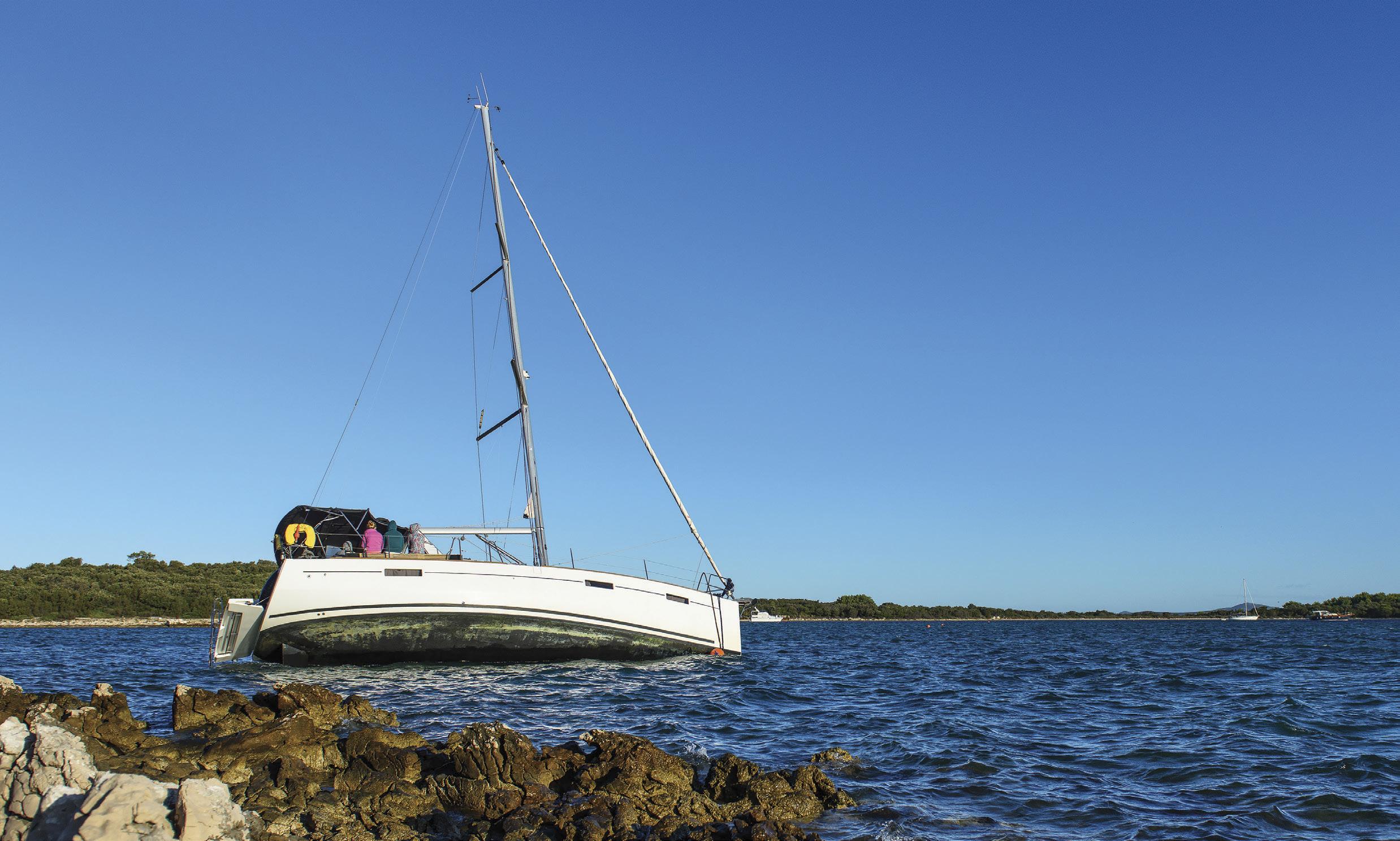





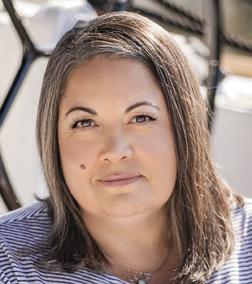












The perfect autumn destination
By Cherie Thiessen Transiting the Cut between Penelakut and Thetis islands. Deane HislopTThe mosquitoes flocked toward us as soon as we left the boat on this mid-June day. “Don’t know why, but for the past two years they seem to be bad in June,” a sympathetic neighbouring boater tells me as she flicks a mosquito off my cheek. We race back into our 25-foot C & C, Aquila, to slather ourselves in citronella so we won’tbe eaten alive. We’ve been sailing to Thetis for over 40 years, but have never had to withstand a flat-out winged attack like this.
I know starting a destination article in this negative way sounds ominous, and is an obvious ploy for attention, but all’s well that ends well. The citronella worked. So, there no longer being any reason to delay our annual island trek, we headed off.
However, there was another surprise in store. The lazy day we had envisioned for ourselves, wandering the quiet roads and checking out any changes from last year, was about to be seriously challenged and we were about to be eaten alive, but in the best possible way.
One of the reasons I love this marina is the great warm water swimming right off the rocks and its proximity to the Cut, where everyone in a tender, kayak, or paddleboard loves to play. (Remember, however, that Penelakut Island is a First Nations reservation and off limits without permission.)
But today we have other priorities. We had heard that new owners had taken over this popular marina in early March so skipper, David Dossor, and I were eager to introduce
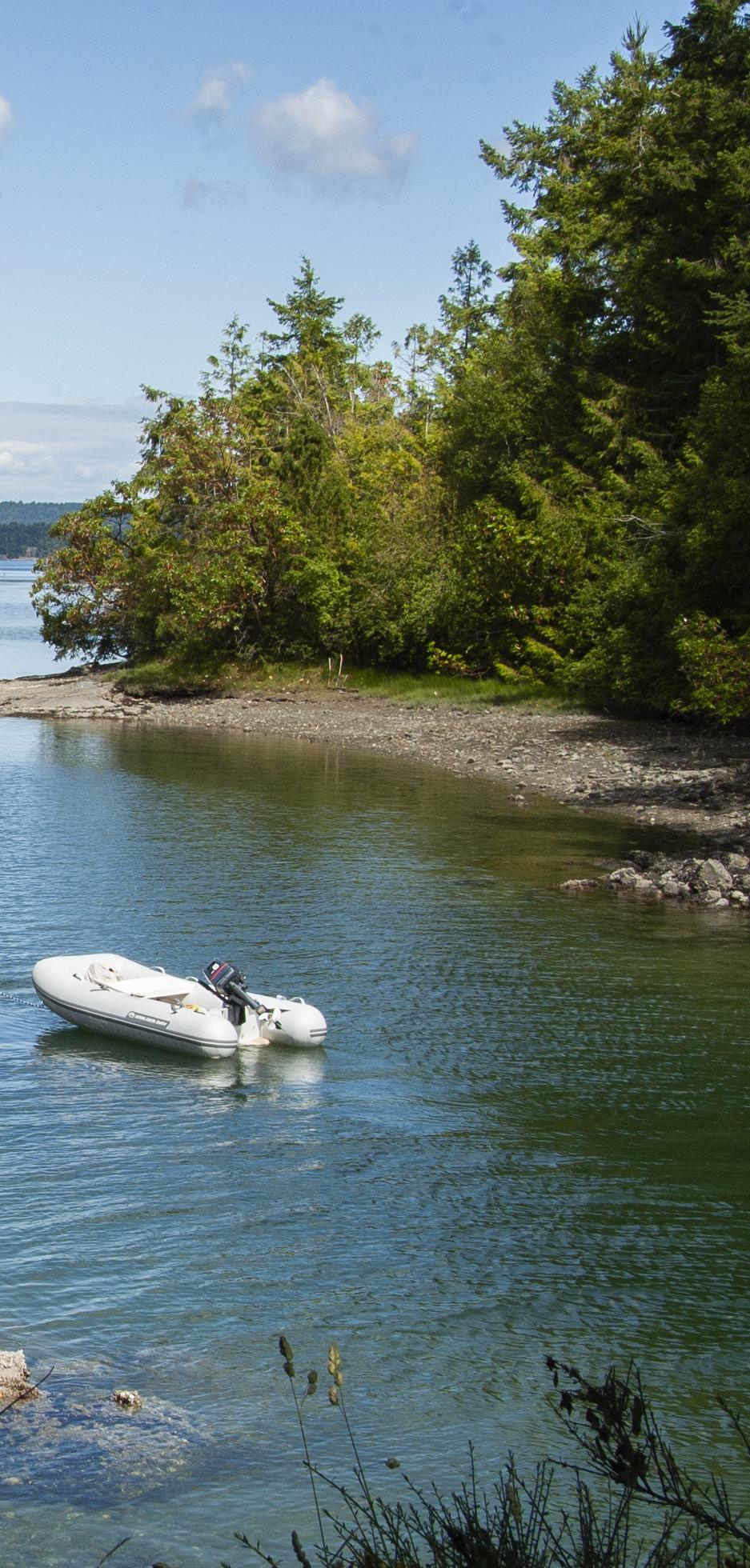
ourselves and find out what changes were in the wind. Ergo, our first stop was the marina store where new owners Jaime and Jennifer White greeted us with delicious lattes brewed in their new espresso machine.
“We purchased the marina with old family friends, Calvin and Lisa Giesbrecht,” Jaime tells us as we get comfortable at the counter outside. “The four of us are all hands on and have a long history with the Pacific Northwest. I grew up on sailboats but went to the dark side and bought a trawler, a California Navigator.” The coffee is delicious and Jaime is so welcoming and so full of great plans that I decide to forgive him. “Covid presented us with an opportunity to re-discover all our favourite spots again. So, we started coming back to Thetis Island. It’s a quiet island but there’s a lot going on with warm, inviting people. Then, when we found out this marina was on the market and a deal had fallen through, we made an offer a few days later.” With a background in real estate development and environmental consulting, it seemed a good fit for the partners.

Jennifer has been called away so when I ask Jaime what changes they have made or are going to make to the marina I open a Pandora’s box as he enthusiastically tells us of all the changes and plans. When he finishes, David and I are both as excited as he is. We love the idea of mini rendezvous, for example. “Maybe just three or four boats of friends coming in small groups. We’ll enable them to book space together at a discount.” He tells us that there will always be locally sourced products in the store and we soon see that for ourselves: local baking, fresh eggs and dewy strawber-

ries, for example. We’ve already given thumbs up to the new espresso machine and are happy to see more flavours of ice cream. Breakfasts and hand-held foods are on offer again with possible plans to expand the menu and to keep the café open throughout the winter so that hardy boaters and locals can enjoy this piece of paradise year-round.
“We’re very sensitive to what boaters and islanders want.”

“And we have a relationship with the Penelakut Nation. You can call us the day before and we can contact them to see if we can get some clams and oysters harvested and delivered for you. Their prices are quite reasonable and they usually sell clams by the gallon and oysters by the five gallons and so getting a few boats together is a fun thing to do. It makes the whole experience here more social and fun. Consider coming in the fall as well—the community events really begin to pick up and there is so much to do on the island.”
With 3,000 feet of dock space, Jaime suggests that visiting boaters might even want to keep their boats here and fly in.

“Come for one night but consider touching base with the community,” is Jaime’s parting message to boaters, but at this point little did we know how soon and how much we would be doing exactly that.
David intercepts me as I head for the ice cream counter and instead starts to herd me out the door, where we bump into a man loaded down with fresh produce for the marina. “Noah and Elisabeth Bond from Jollity Farm supply us with the bulk of our fresh produce. You need to get up there.” Good information. There’s time for ice cream later.

Now, however, it’s time to head over to the other marina on Thetis for lunch. I love their restaurant patio and have heard the chicken fajitas are ‘hot’.
It being Saturday, the wee market has been set up in the outdoor shelter. It operates until Labour Day and the vendors here are fun. We fall into the chocolate chip cookies and pick up some locally made samosas as well. We may be having lunch at the restaurant but it’s always cookie time and samosas will do just fine in the
icebox until tomorrow.
Wayne Proctor owns the property and his management team are very busy today, stocking up the store, getting the ice cream stand set up, and hustling to get the bustling resort ready for the day. The docks here look already full and the shelves in the liquor section of the store are well stocked.
What’s great about this full-service marina is that in addition to its popular restaurant, store, post office and liquor store, it offers fuel, holiday suites,
paddleboards and desalinated water, a costly addition added by an earlier owner, Paul Deacon. It’s also closer to the ferry terminal when we plan on a day visit to Chemainus. While swimming here is not as attractive amongst so many moored boats and a less than friendly shoreline, I love to don my bathing suit and walk the short distance to Preedy Harbour where a long pier extends to a lovely little dock with warm, deep water and a swim ladder. It’s not suitable for young children or pets however.
This Christian retreat relaxes on the choicest waterfront property imaginable. A long dock full of water toys stretches out into Preedy Harbour and the wide arc of the beach is seductively attractive. Happily, management of this venerable centre is as friendly as its surroundings, as long as visitors respect certain reasonable requests: “We welcome guests to walk on our property, however we do require them to check in at our main office and sign a waiver form prior to doing so,” receptionist Rebecca Thudian tells us at the main office. We think that’s very magnanimous. An additional treat is that it’s possible to book breakfast, lunch or dinner and join the guests.
We sign our waivers and taking advantage of the staff’s generosity, walk
across the spacious grounds to tiny St. Margaret’s Cemetery, tucked near Capernwray’s Bible Centre and overlooking Preedy Harbour. Many of the island’s pioneers like Henry Burchell (1859-1929) are buried here along with a well-known adventurer and philanthropist, Dan Culver, who died in 1993 while climbing K-2 and left part of his estate toward purchasing Jedediah Island as a marine provincial park, with considerable assistance from his family.
Any boater tying up at Telegraph Harbour Marina will be familiar with this honour market just a short walk away. It’s a perfect spot to grab produce, seafood, baking or veggies on the honour system. Love it! This being a Saturday there are vendors about, selling cloth-

ing and snacks and even an artist demonstrating his solar art; we admire it and buy one of his pieces.
I chat to the farm’s owner, Chris Pegg, and he tells me that Marylyn’s honour store has now become famous. She has been baking prize winning pies and stocking the store for 20 years. Open from Easter to Thanksgiving, the shop is a must visit. While David checks out the produce inside, I chat to Pegg, whose speciality sheep are the donors of the wool that’s used by local Cowichan knitters to make the cosy, warm products I admire here today. Dora Wilson, who has been knitting since a child, is off today and Pegg is manning her table. He shows me how she finishes her pieces with barely a seam, knit from the bottom up in virtually one piece. Then he puts one of her blankets over my shoulders.
Having recently visited Fort Langley’s historical fort, I know how long it takes to make a blanket like this!
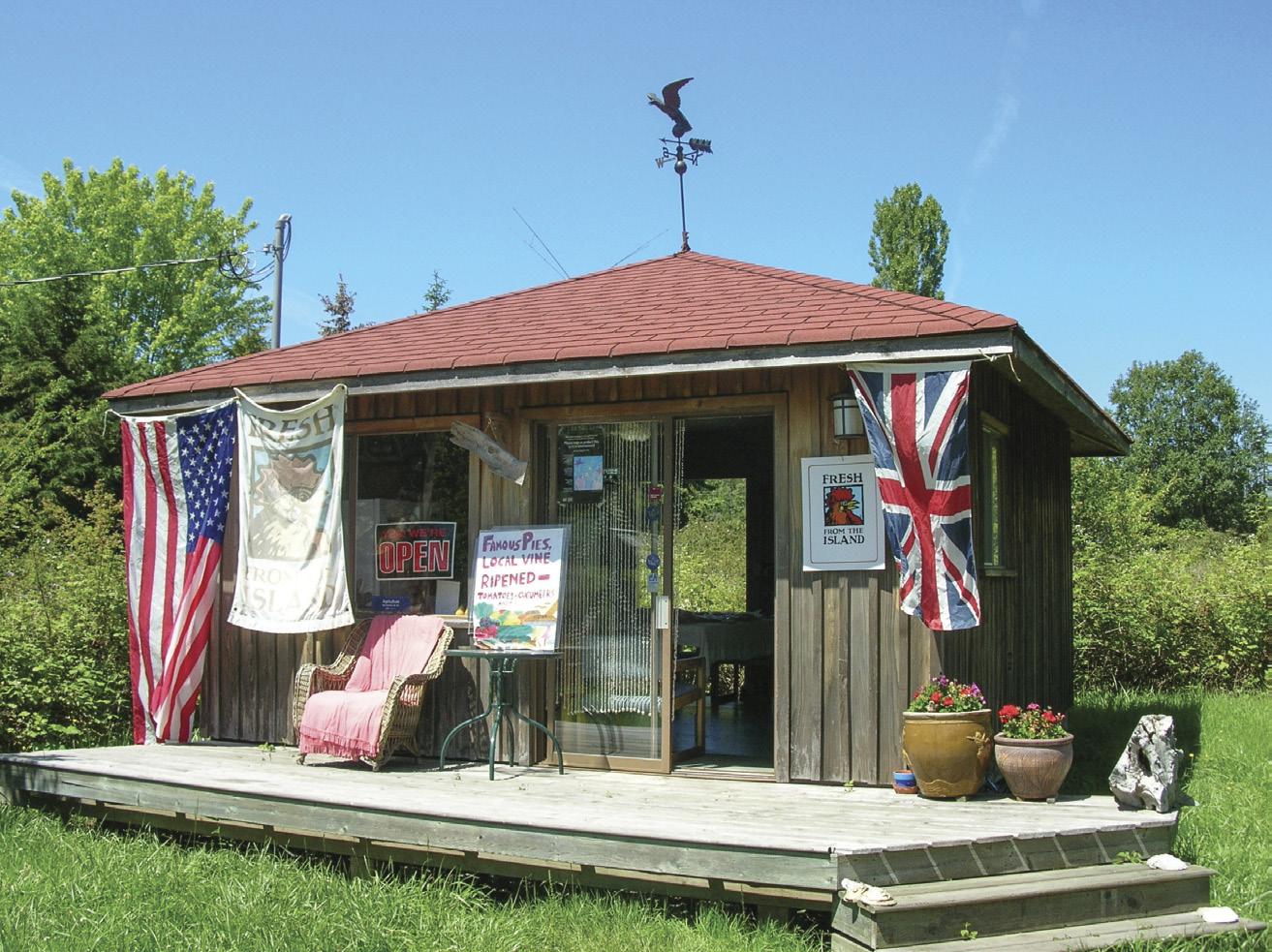
But the helmsman returns and we’re off. Not, unfortunately, to nearby Pilkey Point Road to visit Nan Beals’s Pot of Gold for her delicious coffee— the roaster no longer exists. However, it may be that Beals has found herself another pot of gold. She has just opened The Goosey Gander, a consignment shop, in the same venue.

Originally built in the 1980s, the hall recently underwent a meticulous $2 million restoration and addition and was opened in September, 2021. Islanders are proud that very little of the expenses came from taxpayers. If they are not yet ‘back in the black’ it’s not for want for trying and determination. We lucked out because today the island is celebrating Community Day, so it’s another serendipitous visit.
We munch and chat with the various volunteers.
How can such a small population have such a great building and so many different groups and societies?
By the time we’ve wiped the mustard and relish off our faces we only have time to visit Jollity Farm and as we head out of the building wishing we had bikes so that we could get there quicker, an island car scoops us up—a very happy hijacking. Moments later, we’re admiring the sugar peas, the greens, the radishes and the flowers at Jollity Farm. Owners Noah and Elisabeth Bond are hard at work trying to keep up with the cash and customer flow, but Noah takes a moment to explain to us about the coop and his plans. We crunch noisily on
radishes as he outlines the farm tours he is doing for visitors and boaters, and tells us that boaters can call and order boxes of fresh produce that he will deliver to the boats.
We stumble back to the boat five hours after leaving, full to the brim with totally dressed smokies from the community hall, chocolate cookies from the Saturday market at Thetis Island Marina, hard ice cream cones from Telegraph Harbour Marina and chilled glasses of Pino Gris with entrees from Thetis Island Marina.and Our arms were laden with samosas and cookies from the market at Thetis Island Marina and local eggs and fresh radishes and strawberries from Jollity Farm. Eaten alive, indeed!
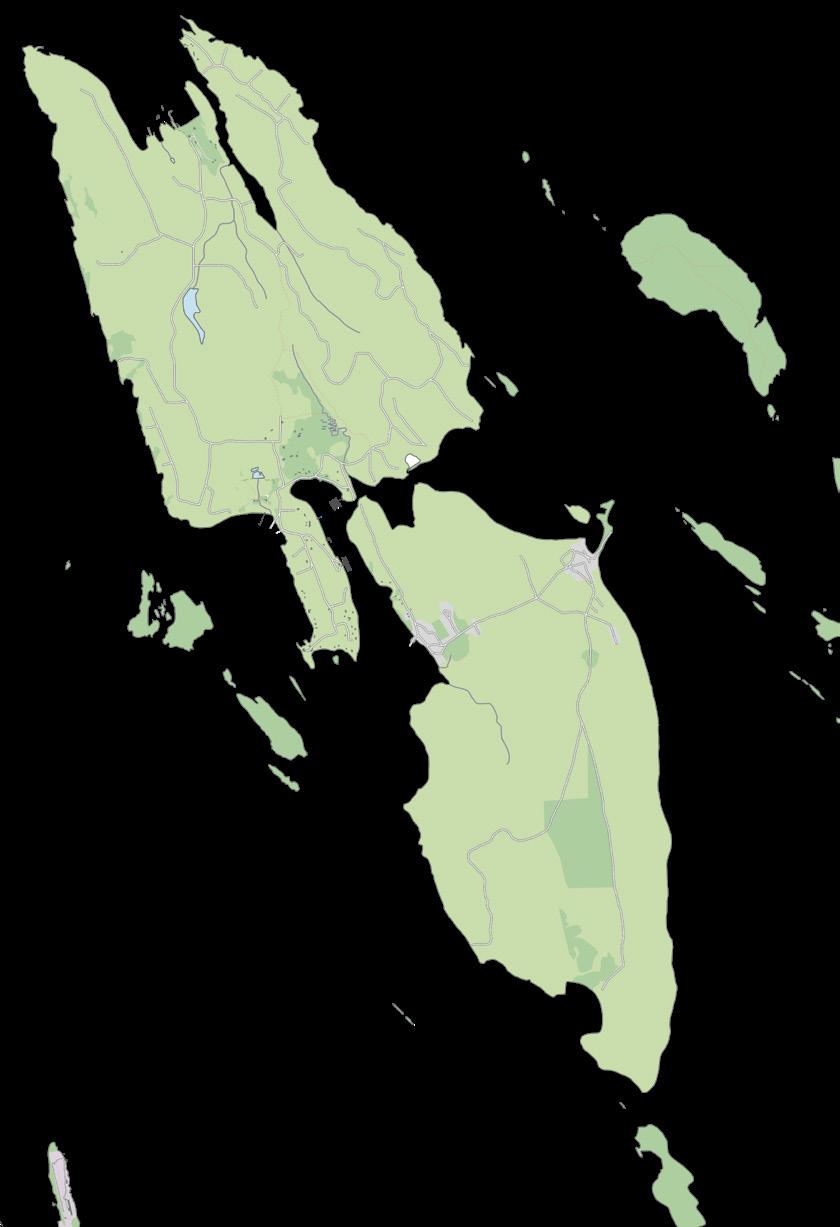

TENT ISLAND On our Thetis bound sail north from Sansum Narrows and into Stuart Channel, we passed Tent Island, where we used to find a water pump, clams and the warmest swimming water anywhere in the Gulf Islands. That was when it was a marine park, leased for a time from the Penelakut First Nation to whom ownership has reverted. Now, however, going ashore and camping is not allowed as some visitors have left trash behind and even had fires in summer, putting the island at risk. It’s still a pretty place to anchor in settled conditions although completely exposed to the west.
TELEGRAPH HARBOUR is located across Stuart Channel from Chemainus, and shelter from southeasters is possible in the two wide bays just south of the Penelakut ferry dock, but both are open to wash from the ferry and from passing boats. Carrying on, the majority of the boats tied up here belong to locals but for visiting boaters who may be lucky enough to find a hole to drop the hook the anchorage is well protected. We prefer to support the marinas here, so it’s great to have a choice of two good ones.
PREEDY HARBOUR Leaving the marina and circumnavigating the island clockwise, we pass Preedy Harbour indenting the southwest corner of Thetis west of Telegraph Harbour. Anchorage is good here and it is reasonably well protected by Dayman and Hudson islands and sheltered from all but northwesterly winds. We usually drop our hook in the south corner of the cove, avoiding the reef extending off shore, alert to submarine cables.
No matter how you enter, be sure to check charts carefully to avoid the reefs. Lights, day beacons and buoys mark the three entrances.
CLAM BAY A reef extends northwest from Pilkey Point and we cross this just north of Ragged Islets and then head south to the next and best anchorage at Clam Bay. We watch for the centre
reef and Rocket Shoal when entering between Leech Island and Penelakut Spit, an effective breakwater in southeasterly winds and we favour the southeast shore of the bay in the lee of Penelakut Spit. Years ago, this option was not available when the locals had an active oyster farm in this area. We’ve always found Clam Bay to be a calm and reliable anchorage over the years and enjoy swimming from the boat in warm weather.
THE CUT between Penelakut and Thetis was originally tidal flats between the two islands that were dredged in 1905. It was originally about two metres deep but over the years there has been the inevitable silting in. Shallow draft boats can come through at medium to high tides as it dries at a one-foot tide. “We have been through, as has my brother recently with five-foot draft,” says Jaime White. “I would suggest only going at a high tide, and using the navigation markers posted. The shoaling section of the Cut entering Telegraph Harbour is slightly curved, and would be best run with local knowledge or prior scouting.
North Beach and the Surf Islands may be reached by dinghy from Adams Harbour. Uncrowded and pristine, in summer it feels like a Caribbean getaway.

ANCHORAGES OF THE
 Story & Photos By Rick Hudson
Story & Photos By Rick Hudson
There is much that appeals about Puget Sound and the Salish Sea. For the weekend warrior and the one-week-of-leave crowd, that area offers a good variety of opportunities. But for those blessed with three weeks of summer holidays, or the retirement crowd, the rapids and the Broughtons are a worthy destination with more to offer. And for those who can enjoy a full season of cruising, BC’s mid-coast beyond Cape Caution offers everything you’ll find further south, with the addition of a profound wildness and emptiness that’s noticeably lacking in anchorages like Conover Cove or Prideaux Haven in August.
It’s worth repeating that coastlines around the world are under development pressure. In the past century entire shorelines, once wild and empty, have been subject to growth in one form or another. Indeed, today it’s very hard to find pristine sections of coast that haven’t been divided, modified or built upon. So, it comes as an added bonus to discover an entire coast that appears today almost as wild as it was when Captain Cook first approached it in 1778.
It’s true that a century ago our coast was humming with small communities. Fishing, canning, hand logging, prospecting all drew folk to the region. But that was then. Today, much of the logging, nearly all the fishing and most of the mining is gone. As a result, the midcoast is a time capsule that has somehow survived into the 21st century untrammeled by the ravages of development. And it’s reachable by anyone with a fair
vessel and a modicum of navigational sense. So come on—cast off the lines, plow Johnstone Strait, transit exposed Cape Caution, and enter the misty, mystical, almost magical region of BC’s mid-coast.

This is the start of the outer islands that protect the Inside Passage, and it’s where we should begin our exploration.
Right: Evening shadows lengthen over Pruth Bay (foreground) and Kwakshua Channel (beyond). This is a popular and secure anchorage off Fitz Hugh Sound. Below: The main building of the Hakai Institute at Pruth Bay on Calvert Island. Cruisers are welcome to walk through the grounds to access First Beach to the west.

There’s an interesting history to the island’s name that bears repeating. Unlike many names along the coast, which were given by Cook, Vancouver or Richards as part of their Royal Navy survey duties, Calvert was named by a one-time RN captain, Charles Duncan, who had

taken up trade between China and the West Coast after Cook’s third voyage of discovery (which first mapped the BC and Alaska shoreline).
Being a navy man, and there being no charts, Duncan created his own and published them in 1790, a year before
George Vancouver set sail from Falmouth to survey the coast in detail. We know Vancouver had Duncan’s charts on board. Why wouldn’t he? Together with Cook’s short visit (with Vancouver serving as a lieutenant on that voyage) and the charts of the Spanish pilots
they were all that was known of the coast by Europeans—but Britain and Spain were at war. Captain Vancouver referred to Duncan’s charts in his diaries and retained many of the names that Duncan had assigned earlier. The name ‘Calvert’ was likely given by Duncan to honour the 17th century politician George Calvert, First Baron of Baltimore (in Ireland, not Maryland).
At the north end of Calvert Island lies sheltering Kwakshua Channel which leads to Pruth Harbour, a popular anchorage with plenty of space. At the back of the bay to the west is the red roofed Hakai Institute, the positive outcome from what was previously a fishing lodge not friendly to cruisers. The institute was the brainchild of partners Eric Peterson and Christina Munck. West coasters who were financially successful in Ontario, they returned to create the Tula Foundation on Quadra Island and the Hakai Institute on Calvert Island.
The word ‘hakai’, by the way, means ‘wide passage’ in Heiltsuk.
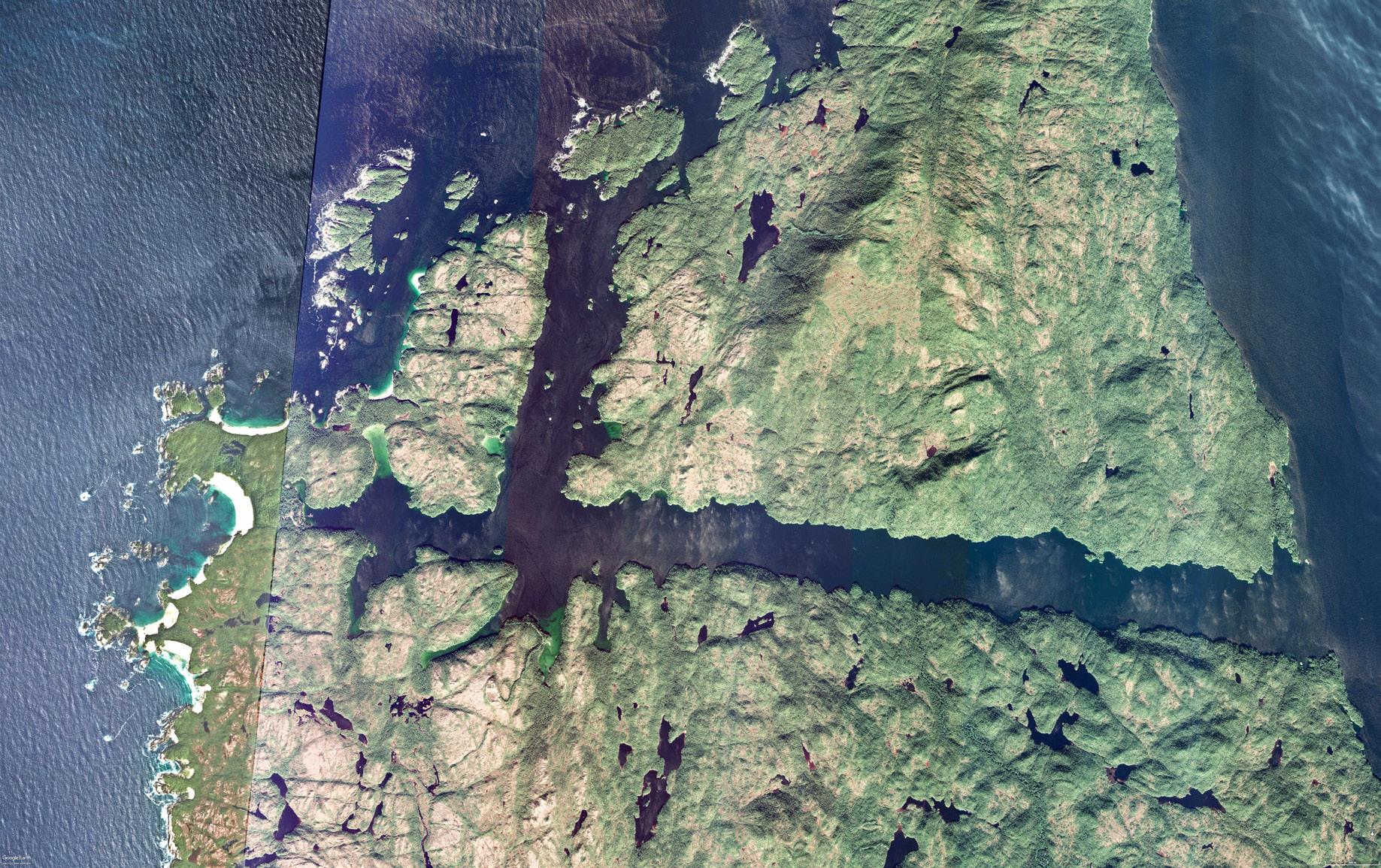
In the early 2000s the institute became a centre where scientists could stay yearround. Prior to that, most mid-coast research was done in the few short months of summer, based much further south. Now, science can be done locally, yearround. What a difference it has made to our understanding of the natural processes that take place along our coast! Scientists from distant universities and institutes now visit to carry out research throughout the year.
THE ANCHORAGE Large vessels drop the hook far out at the bend in Kwakshua Channel, but smaller boats have two options. Either anchor over sand in 10 to 15 metres with good holding close to the west end of Pruth Bay, or, for a less crowded spot, in Keith Anchorage on the south side about half a mile east of the institute. Keith is generally
about 15 metres deep. Be careful, the southeast arm dries, but the southwest arm has room at five metres—pay attention to a charted rock on the west side where the west arm narrows. It’s best to anchor beyond the rock. There used to be an old shack on the shore. It’s gone now, but the road to the BC Tel microwave tower on the hill is still there (about one kilometre back) and the view from the top is surreal.
Since the Hakai Institute took over occupancy, cruisers are welcome. There’s a dinghy dock under the research labs
Right Top:

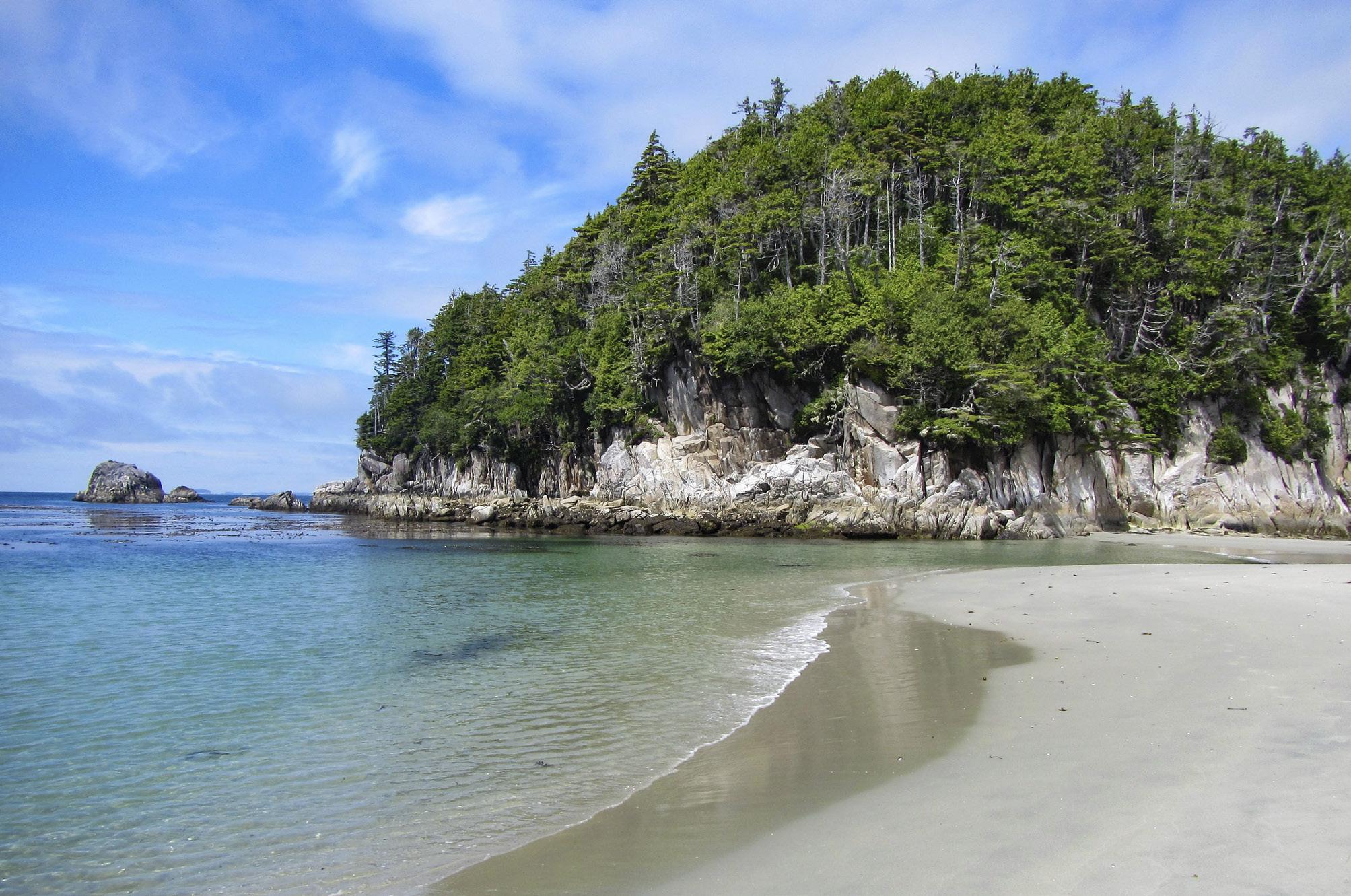
and at the land end of the jetty there’s wifi—always welcome if you lack a satellite system. Entry to the grounds and buildings is by invitation only. From the jetty follow signs to a path that leads through to the west shore.
Science aside, Pruth Bay offers seven spectacular, west-facing sand beaches, each linked to the others by paths over the headlands. It’s worth a day to explore this treasure, plus there’s a trail midway that leads to the top of Lookout Hill up steep stairs, where the panoramic view is amazing. From First Beach you can also follow a trail north to North and Wolf beaches.
Just to the north of Pruth Bay is Adams Harbour behind Odlum and Starfish islands. Back in the days of the herring and salmon fleets, it was a popular anchorage for the commercial boats. Today you’ll usually find it deserted, which is a
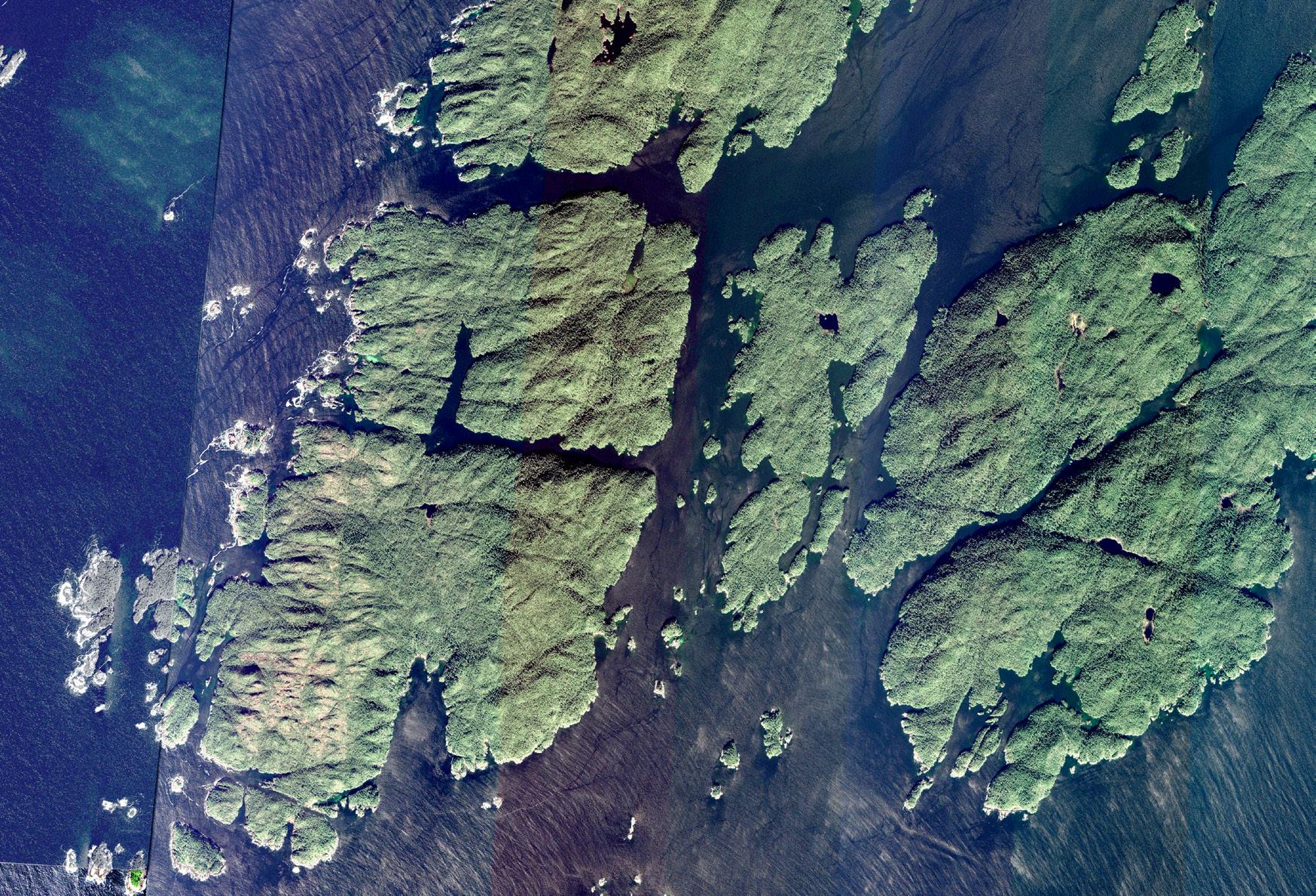
pity as it gives easy access to the broad white sands of North and Wolf beaches.
The water depth opposite Odlum and Starfish is over 15 metres, but further south it shallows south of Sandspit Point to five to 10 metres. However, the Flat Islands (which are really just islets) off Sandspit provide less protection from the outer swell of Queen Charlotte Sound. Another advantage of Adams Harbour is its proximity to excellent fishing in Hakai Passage to the north. A number of fishing lodges occupy some of the nicer bays in Kwakshua Channel—their launches are often seen in the rollers out in Hakai Pass.
Take the dinghy to the white sand beaches to the south—Wolf on the east side, North Beach to the west. Sheltered behind the Surf Islands, North Beach has fine tombolos to sunbathe on and a thousand abalone shells to admire. We have seldom seen another person there, although once, when eating lunch, a
raven arrived and came within a metre of us, clearly convinced it was due a handout. Up close, its black feathers had tones of electric blue and green in the full sun, making it appear most handsome. (We still didn’t feed it!)
Lewall Inlet in the heart of Stirling Island is a deep and narrow channel almost a mile long that leads west before turning north. It is a very snug spot, although a strong northwester can leak in at the southern edge of the anchorage, where the ridge to the west is low. Anchor in five to eight metres with good holding.
The last time we were in there, a mysterious plastic box floated in the middle of the anchorage, moored to the bottom. Once settled, we took the dinghy over to examine it. There was a heavy plastic lid that wasn’t locked. Inside were floats and lines—no doubt
the supplies for some fish boat. While we went paddling, our sister boat went exploring in their dinghy in Edward Channel, where they witnessed a surprising drama. A sea wolf followed a deer into the water, swam after it, caught and killed it, all while being carried down the channel on a strong current. Exhausted from the effort, the wolf abandoned the deer and swam to shore, pulling itself out of the cold water after what must have been a long and chilly immersion. The deer drifted away. The light was failing as our friends turned for home, but we all wondered whether the kill was lost, or returned on a later tide.
Off
ner, is a small bay that can fit a couple of boats. It’s a good place to access Fitz Hugh Sound going north, or Hakai Passage going south. It’s well sheltered and out of the current that runs in Edward Channel. Take care when entering to avoid the charted reef which protrudes from the south side. Anchor in five to 10 metres with good holding.
A very funky islet topped by a bonsai tree is seen in a side channel to the south, which dries at low tide. The fishing is re-
Below: Deep and well protected, the last of the sunset paints the sky in Hurricane Harbour, near the southern tip of Hurricane Island.

ported to be good in Nalau Passage and Edward Channel, and there’s much to explore among the many islets, including Ward Channel just to the east, and Turnbull Inlet, which is long and narrow, and should be investigated on a rising tide due to drying narrows at about mid-length.
At the southern end of the rather uninvitingly named Hurricane Island, this is another excellent anchorage that we have enjoyed many times. It’s located well inside the Hakai Lúxvbálís Conservancy, an area of land and sea that covers over 120,000 hectares, established in 2008. To reach Hurricane Island from Hakai Passage (the usual approach) cut across Kildidt Sound to enter the Kittyhawk
Group, where a well-established (but no nav-aids) route leads you east to west through a plethora of islets and reefs, all well charted. Once in Spider Anchorage, angle northwest up the west side of Hurricane Island and turn into well protected Hurricane Harbour. The first few times we were there we anchored close to shore in 10 metres, but in reality, the whole of the mid-basin is 18 to 20 metres deep, and it’s much simpler to just let out more chain and anchor anywhere you like.
Iain Lawrence, who penned the classic Far-Away Places (Orca Books, 1995) which describes 50 anchorages up and down the coast doesn’t mention Hurricane Harbour, but instead describes an anchorage between Edna and Anne islands further southwest. We have paddled those channels several times, and feel the proximity to Queens Sound with its low swells, even in summer, make that choice less attractive than
Above: Powerful winter gales have shaped the trees and undergrowth on the southern edges of Ronald and Manley islands, which act like a breakwater for Spider Anchorage to the north.

Hurricane Harbour. However, as a keen fisher, you might choose the latter, as it offers quicker access to the outer shores around Breadner Point.
From a paddler’s perspective, there are numerous nooks and crannies to explore, including some shell beaches near the Stopper Group, and in the
lagoons at the south end of Spider Island. But a favourite site is a narrow north-south channel between Ronald and Manley islands to the south of Hurricane Harbour. In the shallows midchannel we have found five and six-pointed bat stars next to each other—Nature is always trying new designs.
The trees on the south end of both islands are spectacularly sculpted by the prevailing southeast winter gales, shaped like clay in a potter’s hands. Foresters would call it krummholz (from the German: krumm meaning crooked or twisted, and holz meaning wood).
To the north of Hurricane Harbour is long, narrow Spitfire Channel that can be enjoyed as a corridor to explore many side channels, or as a calm transit when heading north into Spider Channel and the exposed swells of Queens Sound, Superstition Point and beyond.





IIn early June, 42 boats and crews assembled in Nanaimo, the Harbour City, for “Van Isle 360, The Last Round.” Here’s a taste of this years’ race, during four very different legs, from my vantage point on board Suze Cumming’s Sabre 386, Reepicheep.
One of the very special things about the Van Isle, is being a part of the prerace dock scene. I love the diverse fleet of boats, flags and pennants proudly displayed and the wonderful frenetic activity as sailors and support crews load gear and perform final checks. For the racers, all the months of planning and preparation have culminated in the final box tick of a rigorous safety inspection. For the race owners/organizers, Jeff and Silvia Motley, along with their race management team, the daunting task of bringing all the small details together were coming into a final focus. With no race in 2021, it was a very long road since 2019.
LEG ONE TO Deep Bay/Comox begins with first getting out of the restricted waters of Nanaimo Harbour unscathed, that’s always a goal. A light air beat to the south end of Protection Island was the first challenge, then once around and heading north, the breeze


gradually freed up and spinnakers began to appear. The forecast had been for lighter air, so what a fantastic gift when the breeze built into the low teens. As the fleet progressed toward the Southern tip of Denman Island and the Deep Bay finish line, the breeze began to lighten for the faster boats up ahead. We found ourselves in good company with Different Drummer and Eclipse. Unfortunately, our boat-speed dropped to under two knots, as we struggled to keep moving in whatever zephyr came our way. Scanning the horizon for any sort of fill when Different Drummer, closer to Vancouver Island, was suddenly rail down and flying. The legendary Qualicum wind had filled! This local breeze sets up when the established north or south airflow dies, inviting the cold air from the mountain to literally fall down the hill, fanning out in quicklybuilding puffs from the west. It typically doesn’t last more than an hour or two, so we knew the game was to get to the pressure quickly, even sailing away from the finish, to get to the wind sooner. It was breeze on as we tacked back onto port, overpowered on a close reach! The cooler breeze was a welcome tonic as we blasted along at seven knots. As we broke this year’s virtual finish line, Suze, Becky, Renee, Adam and I shared a spontaneous cheer! Reepicheep’s performance had exceeded our expectations. That evening at the dock, we were visited by a few good friends, then off to bed for an early motor out to the Comox Bar start line. It was also my birthday and Renee baked me cake in a pan!

I’D LOVE TO recap every leg of this year’s race, but there’s just too many details to squeeze into one article. Instead, I’ll try to do justice to a few of
my favourites. Skipping forward then to leg three: After a nice pub evening in Campbell River and a crew swap: super Dave in for super-sub Adam, it was early to bed once again, watches set for a 04:30 and a sunrise transit through Seymore Narrows and the Deepwater Bay start line. The forecast was a bit uncertain, ranging from 12 to 20 knots, and as we motored through the narrows it was already blowing 20, so we detoured into the lee of the last headland, changing down from our furled up #1 to the #3. Arriving at the start area, it had built to the mid 20s, with a good chop. The fleet scrambled to reduce sail, and we managed a nice start, only to be rolled a minute later
by the TP52 Smoke, then BANG! Their jib appeared to pull out of the head foil, flogging violently and shredding their main. Gear failure and boat breakages are every sailor’s worst fear. This leg historically finished at the Hardwicke Island fish farm and with the many twists and turns of Johnstone Strait, geographic shifts were plenty. With changing times, this year’s leg was extended to the Kelsey Bay Pier at Sayward and aside from finding the right sail plan, helming was super critical, with lots of tough steering through the waves. The final 10 miles required some big gear shifting, the wind dropping to 12 knots at one point, before coming back with a ven-
Kathryn Husegeance on the final five-mile dash to the finish. After a long hard day on the water, most of the fleet made its way 10 miles further upwind yet, to Port Neville. The Van Isle fleet anchored close together for the evening and Jeff and Sylvia turned up in the small committee boat, distributing some surprise refreshments to the fleet—a nice touch!

THE LEG TO TELEGRAPH COVE was another tactical experience and the stopover there was fun with the fleet packed into a very tight marina, another good pub night, a few boat parties and yet another early morning exit to get the fleet out on a falling tide. The Port Hardy leg is always
one of the most important, representing the midpoint of the nine-leg series. The forecast was for a light downwind start, and we did our best to avoid getting stuck under the bigger boats or pinned in the wrong direction. Unfortunately, we got stuck on the wrong side of a tide line. At least we were doing two knots backwards in the right direction… The forecasted shift to the northwest did fill, but a heavy fog bank killed the breeze again and when it finally lifted we were in the company of a familiar group including Zen no Zen, Eclipse and Different Drummer Up ahead were Mist, Jam and Flash.
The breeze seemed to be filling more quickly closer to shore and our tactics became simple, put the bow down, and sail fast toward the filling pressure. There are moments that come along in distance races, when you can’t really explain why or how things worked out so well, you just smile and enjoy the moment. The wind continued to build to the low 20s, and we crossed the line sixth—a great result and a nice way to finish off the inside legs. The competition was heating up, Division leaders were Mist, 65 Red Roses II, Different Drummer and Reepicheep.
Fast forward to the Winter Harbour to Ucluelet leg of the race. The morning forecast was for wind—lots of wind! This is when the Van Isle feels the most real to me. You’re in the ocean, often out of sight of land and exposed to the elements. It was a spectacular downwind spinnaker start in 15 to 20 knots of breeze so we hoisted the A4, with a single reef in the main. About an hour in, some boats ahead were on their ear, and a couple of chutes had blown… “OK, let’s get her down.” Becky had already led the lazy sheet for a letterbox and as she spiked the tack Renee and Dave gathered the sail in like a well-oiled machine. Back Bay was surfing up from behind, still under chute until their spinnaker exploded, the upper half wrap around the headstay. Another good choice we made was opting for the larger genoa on the furler, providing more power in the lesser wind moments (high 20s), and the adaptability to furl in the bigger breeze (mid 30s and a high of 42). With good stability and a large rudder, Reep handled the big conditions well. Our most difficult moments came when the largest waves came in groups. These sets appeared a few times every hour, and pointing
the bow down square to the waves was key. Equally important was heading back up as the wave passed underneath to prevent a round down. We kept the focus by rotating through four helmspeople and found that having a wave spotter really helped as well. Then, just after I’d gone down below for a break I heard: “Big wave, big wave!” The boat was laid flat and everything that was loose in the cabin was on top of me. I heard “Renee, Renee, grab her, grab her…Renee, hold on!” The boat sat there horizontal for what seemed like an eternity though it was probably only 10 seconds. I scrambled to the companionway as the boat came back upright, and there was Renee right in front of me dripping wet. Suze followed close behind, saying she had her. I clipped in and continued up on deck. Water was still draining out of the cockpit.
It turns out a huge wave broke over top of Suze, knocking her off the helm. The boat was instantly laid flat with Renee floating over top of the lifelines but tethered to the boat. Becky and Suze quickly grabbed onto Renee and dragged her back on board. As the boat righted itself, Dave took the helm. The power of the ocean is undeniable and we choose to go out there. The importance of adhering to strict safety protocols and practices really hits home after a situation like this. The harshest reality is that staying with the vessel is everything! Recovering a person-overboard in these types of extreme conditions is near impossible, full stop. Suze and Renee sustained some serious bangs and bruises, but both were able to recover and continue racing.
NOT LONG AFTERWARDS, Dave was still on the helm and Becky and I were in the cockpit when we hit something solid, not with a bang, but a thud, followed a second later by a lesser impact on the rudder. The boat really slowed, so my best guess is a whale or a sun-
fish. As darkness came and the wind and waves continued, I felt a heightened sense of responsibility to get the boat and crew to the finish line safely. As the sun kissed Vancouver Island, the unrelenting wind finally decided we’d seen enough, dying away to almost nothing. The remaining swells were all that remained to push us toward the Ucluelet finish. After a few painful hours of no air, a waft of an offshore breeze, and some positive words of encouragement from Skipper Suze prompted us to refocus as we surfed the last miles upwind, to a late morning finish off Amphitrite point. On our lay day in Ucluelet, the wind absolutely howled, and I would say there was a shared sentiment amongst the fleet: Glad we’re in safe harbour. The next morning, we were headed home to Victoria with a forecast for a light southwesterly, shifting to the west and building. The fleet enjoyed some champaign sailing with a mostly windy spinnaker run down the Juan de Fuca, building to 20 knots at Race Passage. We finished just after sun-
rise at Clover Point.
That evening’s barbecue and festivities, hosted by the Royal Victoria Yacht Club were a fine send off before the final leg. A nice southwesterly greeted the fleet at the start line off Clover Point. It was a reaching start with the fleet spread out, some choosing the high road outside Trial Island while we and a dozen others popped chutes, heading inside through Enterprise Channel. The low road was the clear winner and that gave our group a big jump on the fleet. The wind picked up to high teens for a while as the fleet made exceptional progress north to Nanaimo.
Then, you guessed it, the wind went away. The faster boats ahead slipped away, as a northeasterly puff filled off the shore of Galiano Island. For half an hour we sat, every so often getting a sniff of the breeze before it finally got to us. Coming up fast behind was the Double handed J-111, Raku.
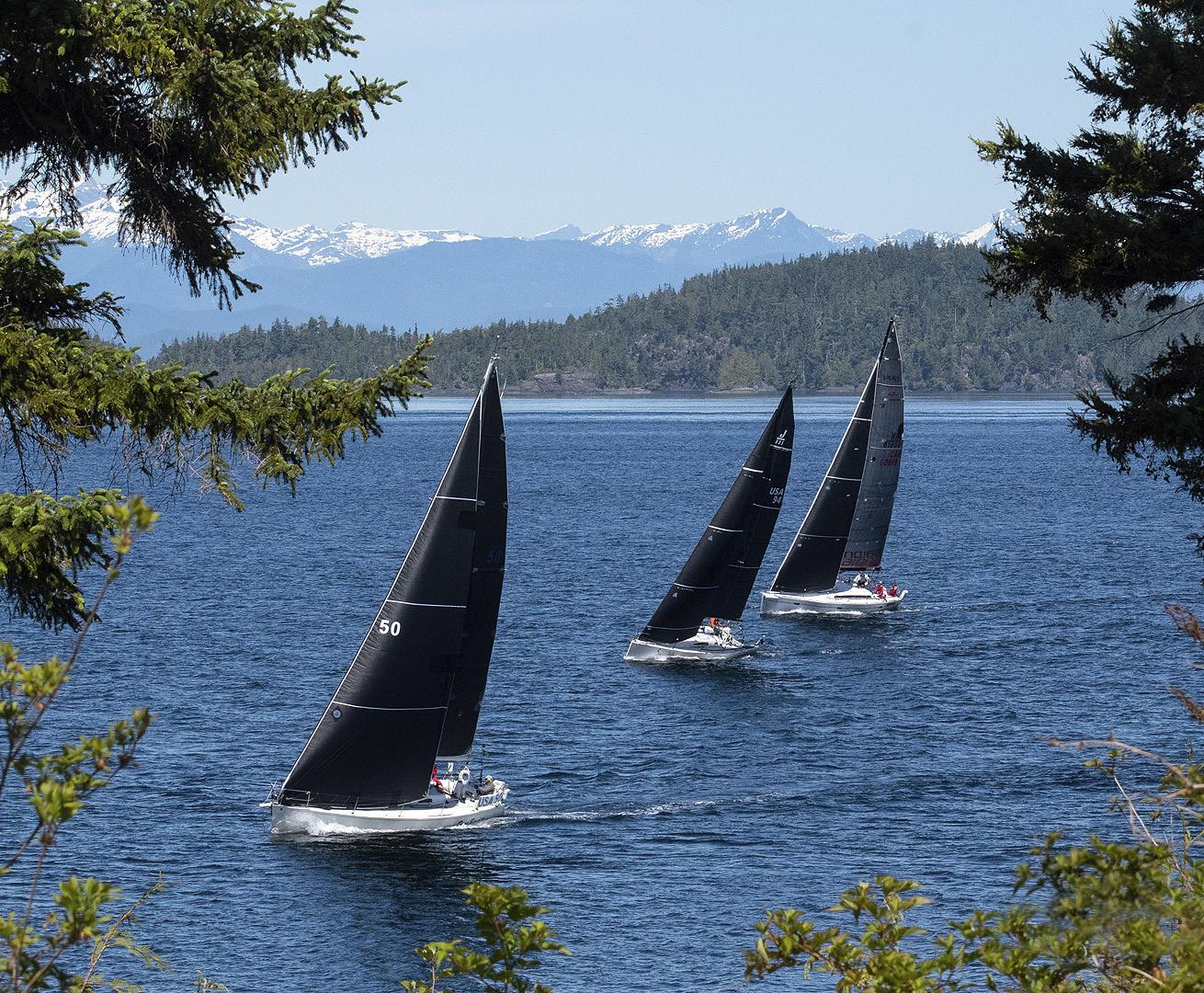
Normally well ahead, they’d parked up inside Moresby Island off Sidney. We were both on a tight timeline to get through the pass. By our figuring we were close to an hour later than ideal, but there was enough breeze for us to maintain a couple of knots over ground through the gap. I’ll admit there was a little breath holding, and I didn’t feel we were truly through until we got the chute up again in the light southeasterly. A quick survey to the South and the only boat in sight was Strum, and they were well behind. Much to our surprise, three boats snuck through Porlier after us. As we came around Entrance Island nicely powered up under A2 spinnaker, we could see that the fleet ahead was taking a wide route in order to avoid the lee side of Gabriola. Following suit, was an easy decision and we tacked upwind toward the spar buoy at the south end of Protection Island.
Sailboat racing is so rewarding and yet so punishing at times. The wind went forward and in one final test, went onto our nose. The good news was we had a knot of positive current pushing us toward the finish line. “Come on Reepicheep!” Came the hooting and cheering from our fellow racers on the dock. A small zephyr filled the genoa and buoyed our spirts. Then we heard, “welcome to Nanaimo!”
There were hugs all around and the celebrations went on through the night as I think most every racer in the fleet found their way onto Reep at some point. We cheered the other teams across the finish line. The Van Isle 360 International Yacht Race is about the people, the boats, the places, the challenges and the adventure. These things are the essence of what makes this race so special! Twentyfive years, 13 editions. The Last Round? I sincerely hope not! Full results can be found at vanisle360. com.2023-results.
Lightweight machined aluminium drums with a distinctive profile for exceptional line grip and control, and Ronstan’s unique, patented QuickTrim™ self-tailing.
Finally it’s easy to ease the sheet without removing the winch handle or the line from the self-tailer. With QuickTrim™, racing sailors can react instantly in response to minor course corrections or changes to wind pressure and direction. Cruising sailors will appreciate the simple convenience of easier sail adjustment.

ronstan.com/orbitwinch

Many young people find themselves in a quandary trying to decide whether to study at a college or university or pursue an apprenticeship in the trades. Their high schools usually offer career counselling, and many include some introductory courses in trades like woodworking, automotive repair, hair styling, health care or cooking.
To see if marine-related careers are part of the trade curricula in high schools, I searched the websites of several school districts and schools in Victoria, Vancouver and Prince Ru-
pert—all port cities. Each school offers some trade/career courses, but none mentioned careers in the marine industry, although some include electrician and plumbing courses that may translate to working on boats. One exception is Sidney’s Parkland High School and its Marine Academy. Their website points out that scientific marine centres, marinas and 60-plus marine employers operate on Vancouver Island alone. They introduce teenagers to such courses as marine sciences (with experience on the water) and marine trades. Students can gain work experience credits by working locally at a marine service company.
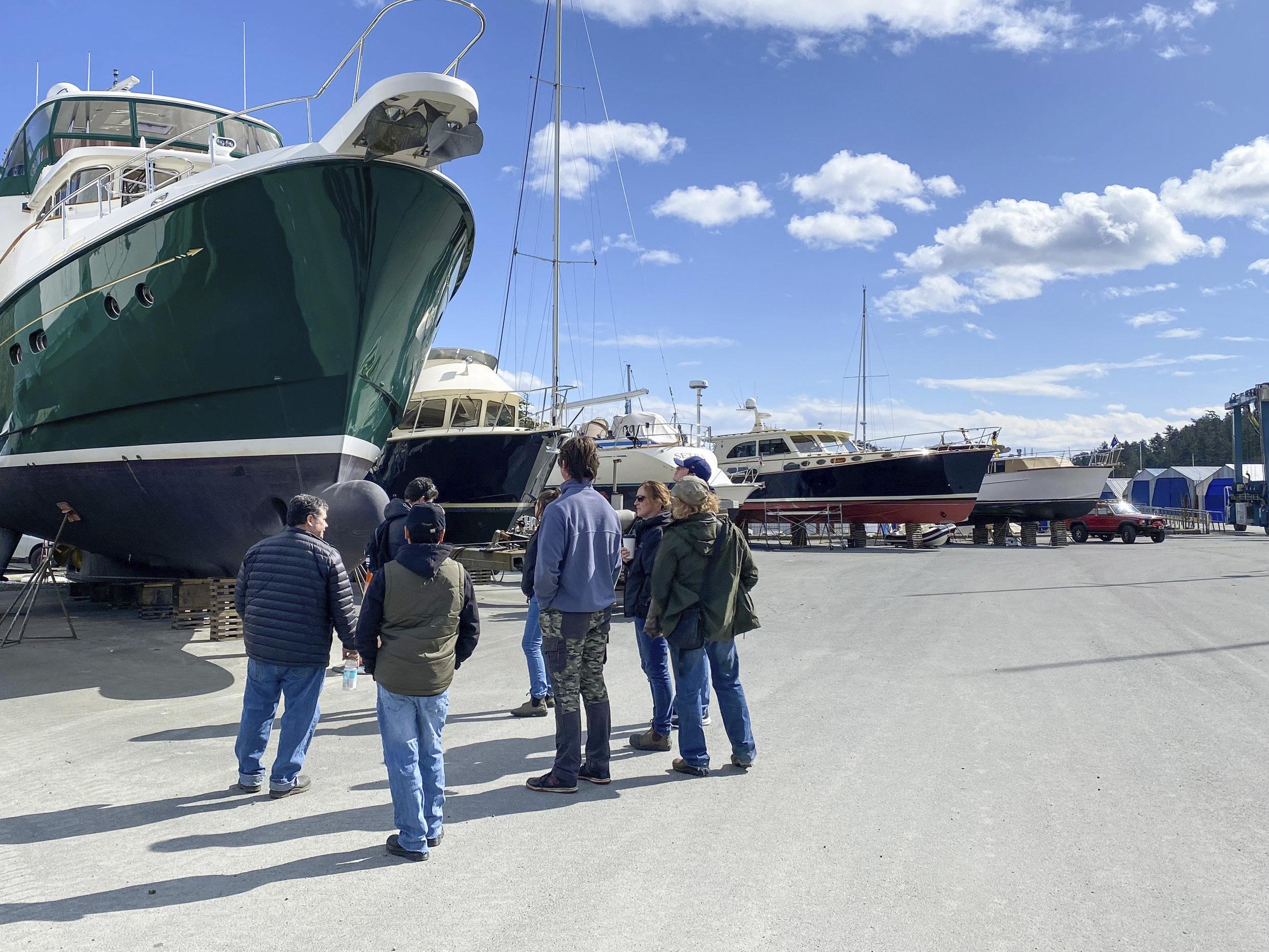
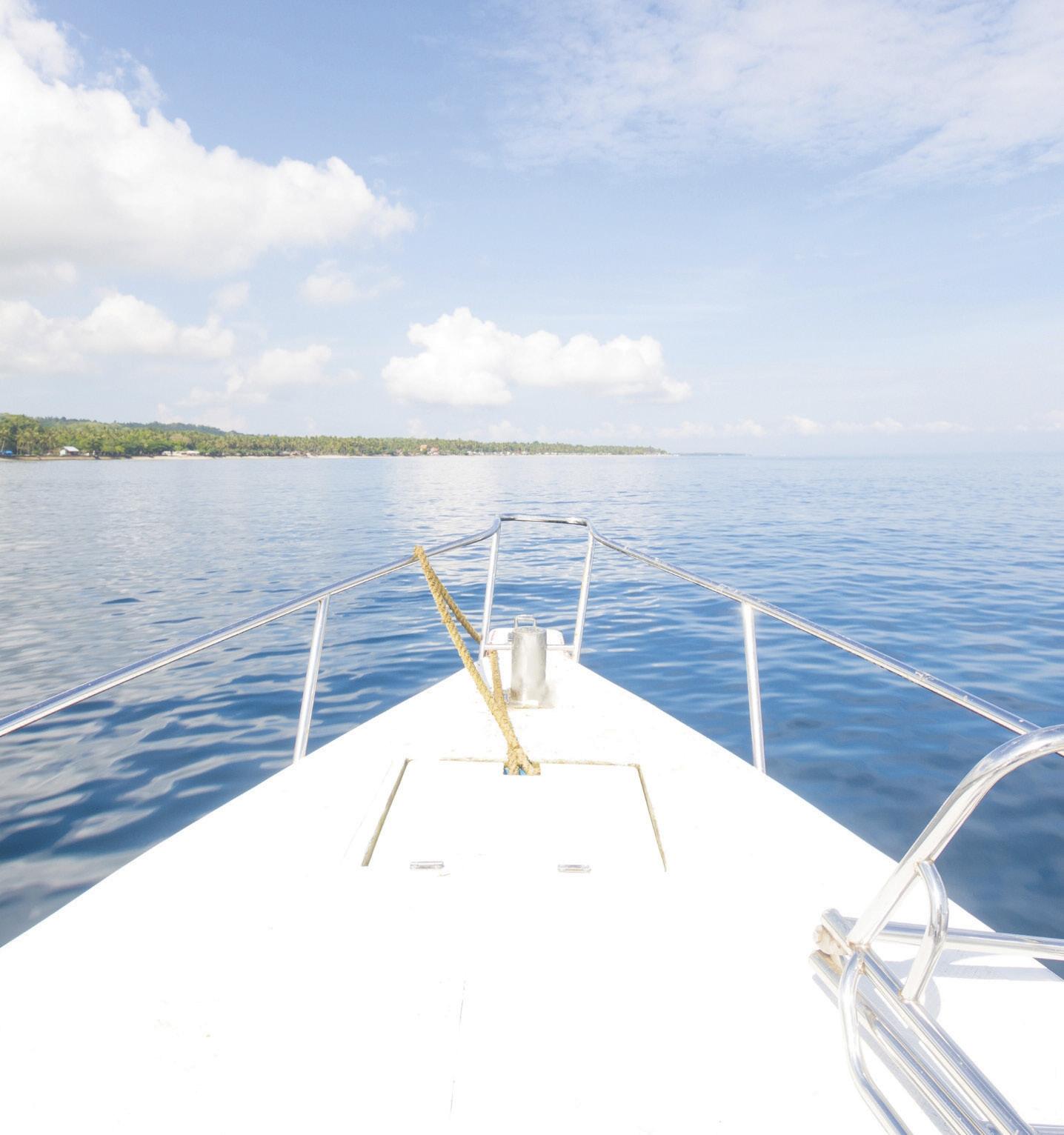




Quadrant grad KEITH HICKE first worked as a roofer, then found a job at Philbrooks in Sidney, where his dad works in the canvas department. “I was 18 and started scraping hulls, detailing boats and working in the paint and finishing department,” he said. “After a while, though, I knew working in these three departments alone wouldn’t advance my career. I had to get my Marine Service Technician certification.” Keith enrolled at Quadrant, where, over his fouryear apprenticeship he “learned about everything above and below the waterline.”
Having earned his “wellrounded” MST, his confidence has soared. “I know how to solve most boat problems,” he said. “I now understand the whole vessel.” He also believes the training has translated into “outside life.” The 30-year-old is married and has a three-year old daughter. “The analysis and problem-solving skills I’ve developed through work make me a better husband and father,” he said.
SARAH WHITE worked as the service manager for Specialty Yacht Sales on Granville Island when she decided to enroll in the MST program. “I completed the four-year apprenticeship along with the crew working for me,” she said. “Quadrant gave me a holistic overview of boats and their intricacies. I also spent 14 years rebuilding a classic wooden boat and thus I gained expertise in wood, metal and fibreglass vessels.” That experience, along with her offshore voyages and a master’s degree in surveying, led her to open her own company surveying yachts up to 150 feet. She’s also skilled in the use of non-destructive testing equipment for small craft inspections, such as thermographic imaging techniques. Along with her active surveying work, she teaches new Quadrant apprentices marine business practices and marine electrical.
THERE IS GREAT demand for people proficient in marine service technologies and those earning, or having earned, Marine Service Technician (MST) certification during a fouryear apprenticeship. In our province, Quadrant Marine Institute is the Skilled BC-designated trainer for MSTs. Many graduates later specialize in certain areas of marine service, like rigging, metal fabrication or electronics. There are jobs waiting to be filled.
In 2018, I spoke with Vector Marine’s Willi Fahning, one of the most accomplished propellor specialists in British Columbia. At the time, he was 77 and almost desperate to find someone who
wanted to learn his craft of giving props a complete makeover. No one was applying for this marine apprenticeship, which pays well and offers a rewarding career. In August 2023, I asked Todd Koroll, Vector’s general manager, if the propellor specialty job had ever been filled. “No,” he said, “and we have searched internationally. Willi will be retiring soon. No one is interested in this specialty despite our offering enticements, good wages and benefits. So, our company won’t be able to offer this special prop service in the future.”
It’s likely young people aren’t aware of the many marine-related job opportunities ranging from boat detailer to

ship’s master, but there are numerous ways to build a career in this wideranging industry. Besides specializing in yacht and small boat building and repairs—the careers this article focuses on—you can work in shipbuilding and repair. You can earn certifications and mariner tickets that lead to working on ferries, fishboats, tugs, coastal freighters and cargo ships. You can learn marina and yacht club management. Both the Royal Canadian Navy and the Canadian Coast Guard offer a variety of career-building training programs and the Coast Guard is looking for deckhands right now. For these mariner careers, the website program listings at BCIT, Camosun College, North Island College, Western Maritime Institute, and a Transport Canada list of Recognized
Institutions and Approved Training Courses can steer you on your way.
THE JOBS IN the small boat/yacht building and repair industry require broad knowledge as well as highly specialized skills. You can learn to apply paints and gelcoats, work in metal fabrication and welding, develop skills in electronics and their integration, design, electrical, plumbing, fibreglass layup and repair, rigging, woodworking, engine installation and repair, travelift operation, detailing—the list goes on. As boats can be floating homes with engines, toilets, fridges, instruments, furniture and canvas, they provide an array of diverse tasks requiring skills that never get boring. Troubleshooting and problem solving
also become intrinsic parts of working on boats. Marine industry employment can get you out of the gig economy and into full-time, rewarding work. And although automation and AI will increase, it’s unlikely you’ll be replaced by a robot climbing a mast or squeezing into an engine compartment—at least not any time soon.
A couple of full-time job descriptions offer an idea of what marine companies are looking for. Titan Boats in Sidney provides this partial task list for a marine systems technician: “Installing engines, windows, bilges, arches, fuel systems, decks, Ttops, batteries, pumps, tubes, safety gear, and other components; troubleshooting issues and solving problems; and preparing vessels for sea trials
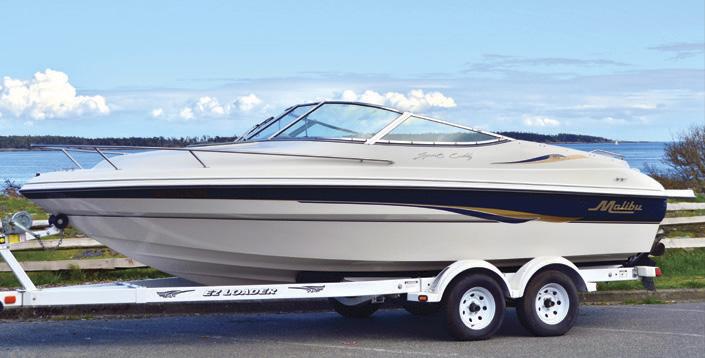
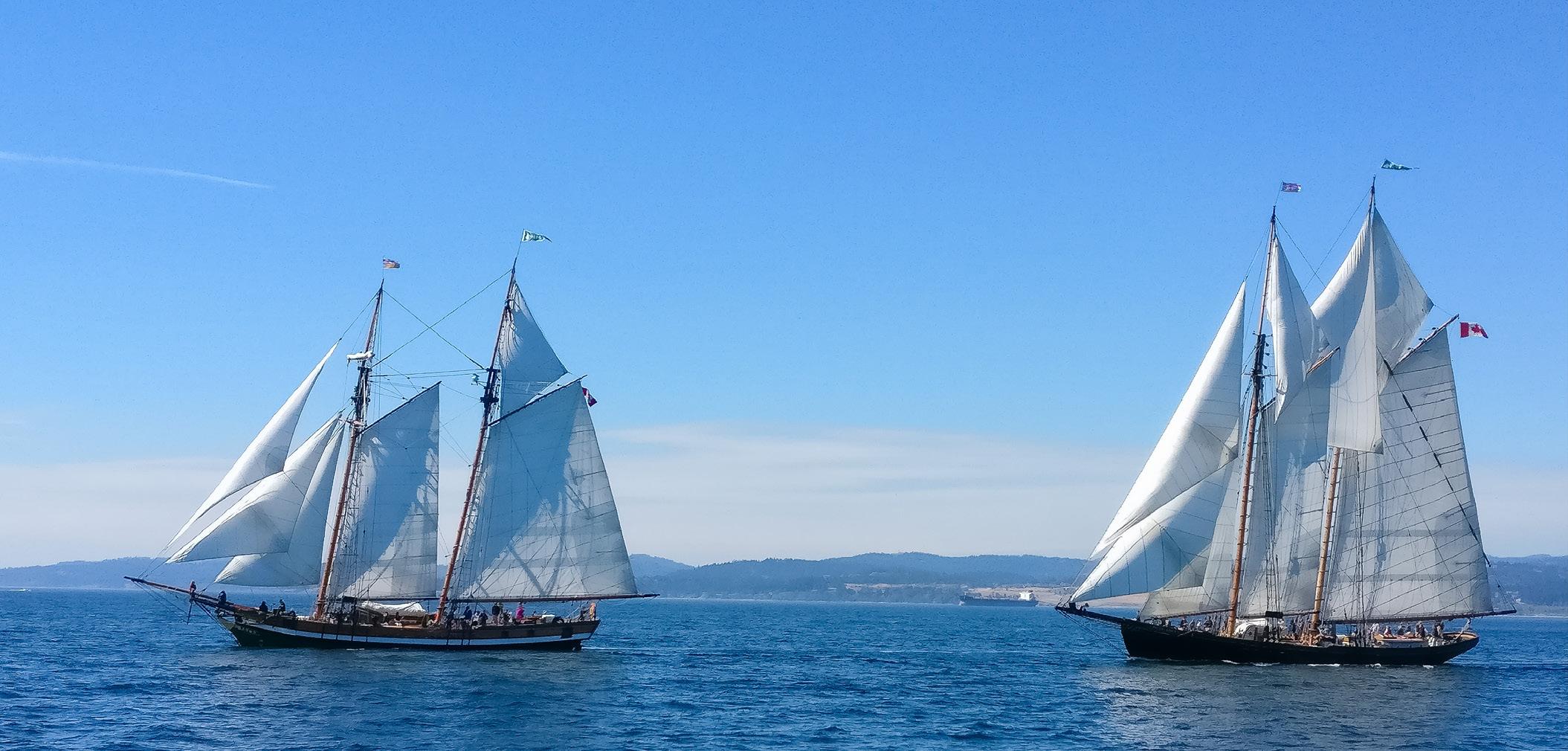

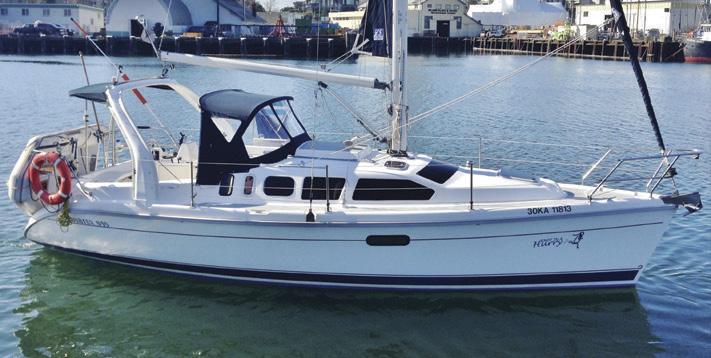
Another MST earned at Quadrant, GAVIN JOHNSTONE, has turned his training to entrepreneurship with his company Ocean Performance Technologies, which specializes in high-end marine electronics and electric refits. As a kid, he spent much time boating on a northern BC lake and liked mending outboard engines. But while majoring in psychology at UVic, he took a summer job at then charter company Cooper Yachts. “I loved being outside and on the water,” he said. “I started with boat cleaning, but it was boring. I wanted to do mechanical work and with mentors, I started to check in and check out the charter boats’ engines.”
After graduation, he joined Raven Marine in Sidney and gained more mechanical and electronic skills. “At first I resisted enrolling at Quadrant and found the first year too elementary,” he recalls. “I thought it wasn’t very relevant but the next three years showed me the holistic picture.” He also worked on electronic problem solving. “Everything is integrated on boats today,” Gavin continued. “Even when you install a new electronic system, you may have to bore holes, install custom panels and then paint. You must be inherently knowledgeable and understand all the risks of the tasks, like installing a transducer.” Gavin enjoys being in the driver’s seat of his own company. He now teaches for Quadrant. “Covid forced the organization to adopt new ways,” he said. “It’s easy to enroll and stay the course.”
ERIC PEARSON, also a Philbrooks staff member, has spent the last nine years in “The Bottom End Department.” “Is that a nickname,” I asked. “No,” said Eric, “it’s what we really call it. It’s everything below the waterline. I’m part of the haul-out crew. We clean hulls, remove barnacles, apply bottom paint, inspect and repair thru-hulls, wax and polish. Soon Eric enrolled in the apprentice program. “I never pictured myself in the marine business,” he said. “Quadrant taught me to get my hands and brain about the whole vessel and all the systems,” he said. “I got a feel for everything and gained confidence. And I liked having teachers who work in the trade. They tell the stories not in the books. I say, ‘give the marine industry a chance.’”
and deliveries. Salary: $25.00-$34.00 per hour/plus dental care, disability insurance, extended health care, life insurance, on-site parking, tuition reimbursement and vision care.” Titan requires the applicant to have gained certification including a minimum two years of recent experience in marine systems/electrical systems.
Loki Boats in Gibsons is looking for a fibreglass composites technician. This custom boat builder designs, builds and markets adventure boats and touts “a relaxed production schedule allow[ing] us to focus on fun, quality, innovative construction techniques and the further refinement of our product.” They are seeking “experience building components with fibreglass and composites.”
These and other online job offerings all state that works starts “ASAP,” “tomorrow,” and “immediately.”
Like any profession, marine service jobs require both theory and hands-on practice. But you don’t have to have experience messing about in boats to get started. You may have a mechanical bent tinkering with engines, maybe
you like wood working, or know how different kinds of software can communicate—talents that can help you to become a certified marine service technician. If you’ve sailed, fished, kayaked or paddleboarded with family or friends you may have developed a feel for water and weather conditions.

QUADRANT MARINE INSTITUTE operates a four-year MST certification program with courses and hands-onwork in the small craft/recreational marine industry. Hundreds of industry partners on Vancouver Island, around Greater Vancouver and across Canada participate in the program. It’s an “earn while you learn” program. To enroll you must be employed by a marine service company.
The certification program began in the mid-90s when Campbell Black of Canoe Cove-based Blackline Marine banded together with other marine service companies and launched what would eventually become Quadrant. The goal was to develop an MST certification program that would fill the need of employers for competent staff
and employees with a good, steady career. An apprentice program was born, where employers provide the hands-on work experience, while students also study theory through Quadrant’s curriculum. “We wanted to develop and deliver training in the recreational marine industry and provide pathways for employers to find, train and keep good employees,” Black told me. “They, in turn, found a long-term, full-time, varied career.” MSTs receive a Provincial Certificate of Qualification, also called a journeyperson credential or ticket.
Quadrant, with its slogan “We Float Boats” and its mantra “It’s all about boats from stem to stern,” was soon recognized as one of the most innovative apprenticeship programs in BC. “We work closely with employers who are also our teachers,” Black continued.
“The training is broad in scope. Marine tech is a relatively small market, but it’s very diverse in its skill building.”
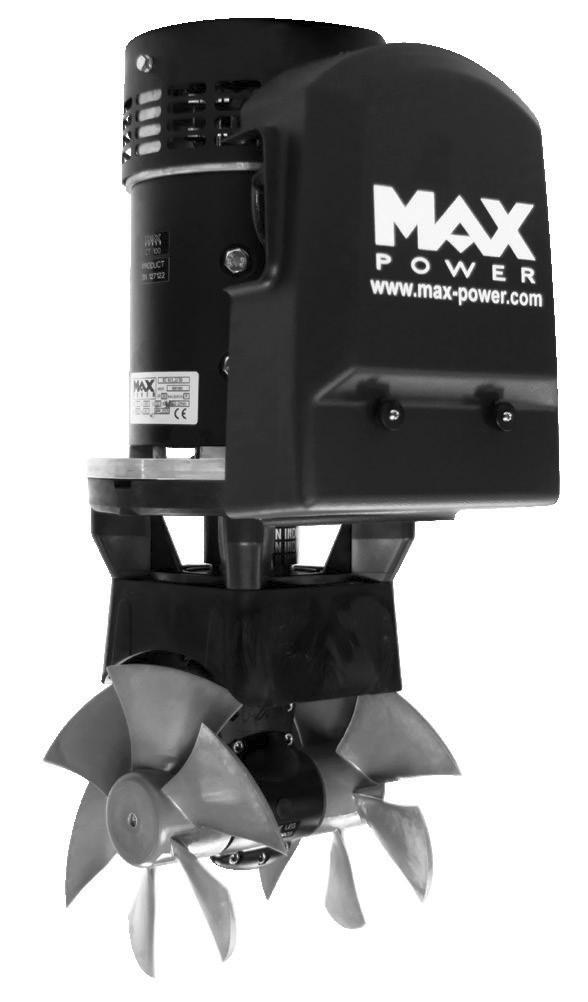


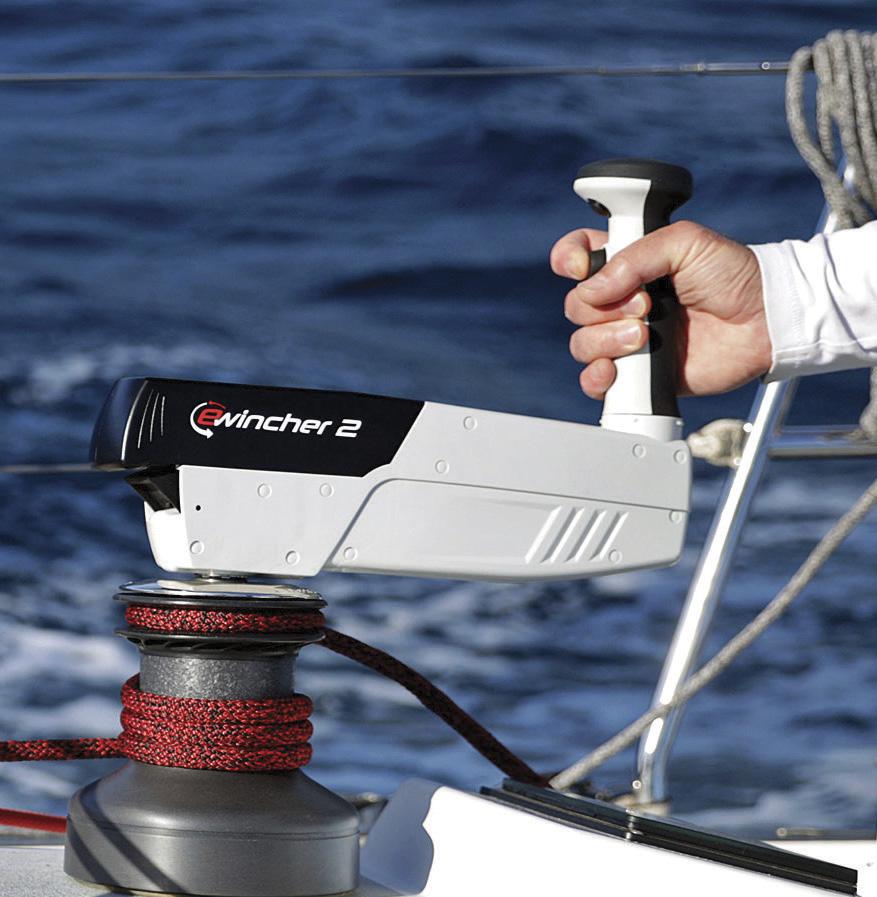


The program has been highly successful and has spread. Starting on Vancouver Island and then expanding to Vancouver, the concept and curriculum have been licensed to the Nova Scotia Boatbuilders’ Association and to the Working Waterfront Coalition of Whatcom County, in Bellingham, Washington, thus making it an international program.

The Covid-19 pandemic increased Quadrant’s scope dramatically. Managing director Shelley McIvor said the apprenticeship has expanded to include all of Canada through online courses. “We didn’t want the pandemic to shut us down,” she said. “So, we are now using Zoom to offer live classes and anyone
who qualifies can enroll. Students don’t have to move. We have students as far away as Quebec. And it’s good for our students who don’t have to drive out to a classroom after a full day’s work. Our instructors, who have many thousands of hours of experience, can teach from anywhere and with closeup cameras, can show in detail how to tackle a repair or troubleshoot a problem. For example, we just focused on a sampling of repairs at the Heiltsuk-operated Shearwater Marina on the central BC coast.”
“The MST program is specialized and like the other trades must meet industry standards for quality, timeline and budget,” said Campbell Black. “Customers must be happy with their work. By the time graduation rolls around, our apprentices are fully qualified—they’re shipwrights in the modern world.”
I’d like to talk a little about the importance of onboard communication in our sport. This is not a small topic, and for anyone who races, finding that right balance is an ongoing explora-

Ition and journey. Having raced for over 50 years, I have many thoughts on this subject and can say with certainty that this pursuit is never ending. Human interaction is a complex thing, but that’s also a big part of the appeal and at least partially why most of us choose to compete in a team sport. Positive, interactive communication can be a magical thing when everything’s clicking. The challenge is to sustain that state, plus know how to reset and right the ship, figuratively, when communication goes a little bit

sideways. Fair warning, this may hit a little close to home. Here we go.
IF THERE IS indeed a next life, I think it would be fascinating to come back as a psychologist. The inner workings of the brain; reason, logic, emotion, rational and irrational thought—tricky stuff! I’ve chosen to use the word temperament in the title and I think that’s a good place to begin this discussion. Nature or nurture, we are who we are, to a large degree. That’s our temperament. Now, here’s the lovely part, we’re
all different. I can’t change your inherent nature, nor you mine. This doesn’t mean we have no control over our immediate interactions with others. Our own disposition on the other hand, the mood and attitude we choose to bring to that party, we can control. How we temper our reactions to any given situation, call it self-control or governance, that’s something we do control. What better test than to jump onto a boat and to compete in a sailboat race with and against a bunch of like-minded, yet completely unique individuals. It’s a wonderful experience and an interesting experiment…
So, one of the great pleasures I draw from sailboat racing is competing with different people on different boats. I
love to see the variety of crew dynamics at play. There isn’t necessarily a right and a wrong way to organize a crew, it’s ultimately very malleable, and it may indeed take some time to sort out everyone’s roles. There’s quite often an evolution that takes place over time, sometimes gradual, perhaps even a bit unplanned. The skipper often sets the tone, other times it’s someone else, maybe a leadership block. Experience, expertise and yes, temperament, are factors in who’s voice gets heard during this process. Inevitably though, a structure or pattern will emerge; a hierarchy in decision making, communication, crew responsibilities and actions will establish.
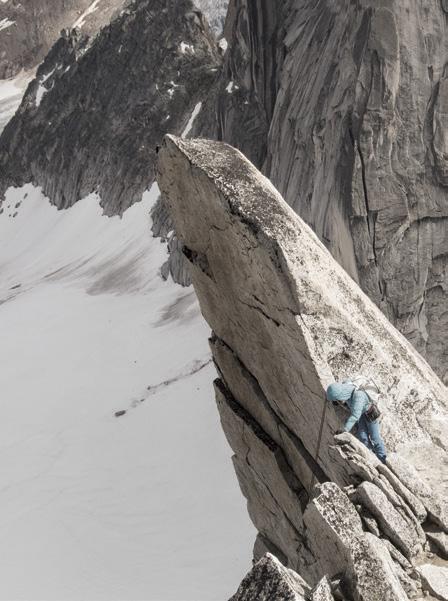
Verbal communication is mostly what we’re talking about here, so let’s see if


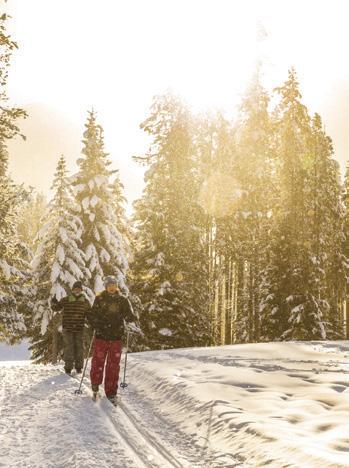

we can distill things down to the basic mechanics of a race. The helmsman’s role is to control the boat’s heading and adjust course as required during manoeuvres. Other crew members trim, hoist and douse the sails. These are the two primary tasks to be covered in a sailboat race. The communication required to perform these basics will vary from boat to boat. For example, there may be fewer words and less prompting needed with an experienced, wellpracticed team, compared to one with a new or fill-in crew.
HERE’S A
prestart with an experienced crew: Reaching down the line on starboard as the warning signal sounds, the helmsman



slowly turns head to wind, checking its direction, the line favour and position of the weather mark. The tactician comments, “there’s a slight pin favour and the weather mark is way to the right.” The helmsman falls off onto port, the jib trimmer backs the jib slightly to assist the bear away. The boat continues on for a few boat lengths beyond the committee boat end. “Tacking.” Back on starboard, three minutes to go, the crew sights the line for a transit. “It looks like the chimney on the white house.” “Copy.” The bowman gives a thumbs up. Sailing back to mid-line, the helmsman again turns head to wind. “Same.” Then he falls away on port and bears off well below the committee boat. The crew adjusts the sails and moves weight in board appropriately. The timer calls, “one minute” and the helmsman turns the boat upwind. “Tacking.” The crew trims for maximum speed and hikes to flatten the boat. “Thirty, 25, 20…” The bowman holds up two fingers and the helmsman calls for a “light kill.” The jib and main trimmers ease slightly as the helmsman heads up a bit. “Fifteen…” The crew moves in board. “Ten…” One finger from the bowman (no not that one) and the helmsman puts the bow down. “Speed,” he calls as the trim comes on and the crew moves to hike. “Five, four, three…” Hike hard!” The bow comes up, “All clear!” says the bowman.
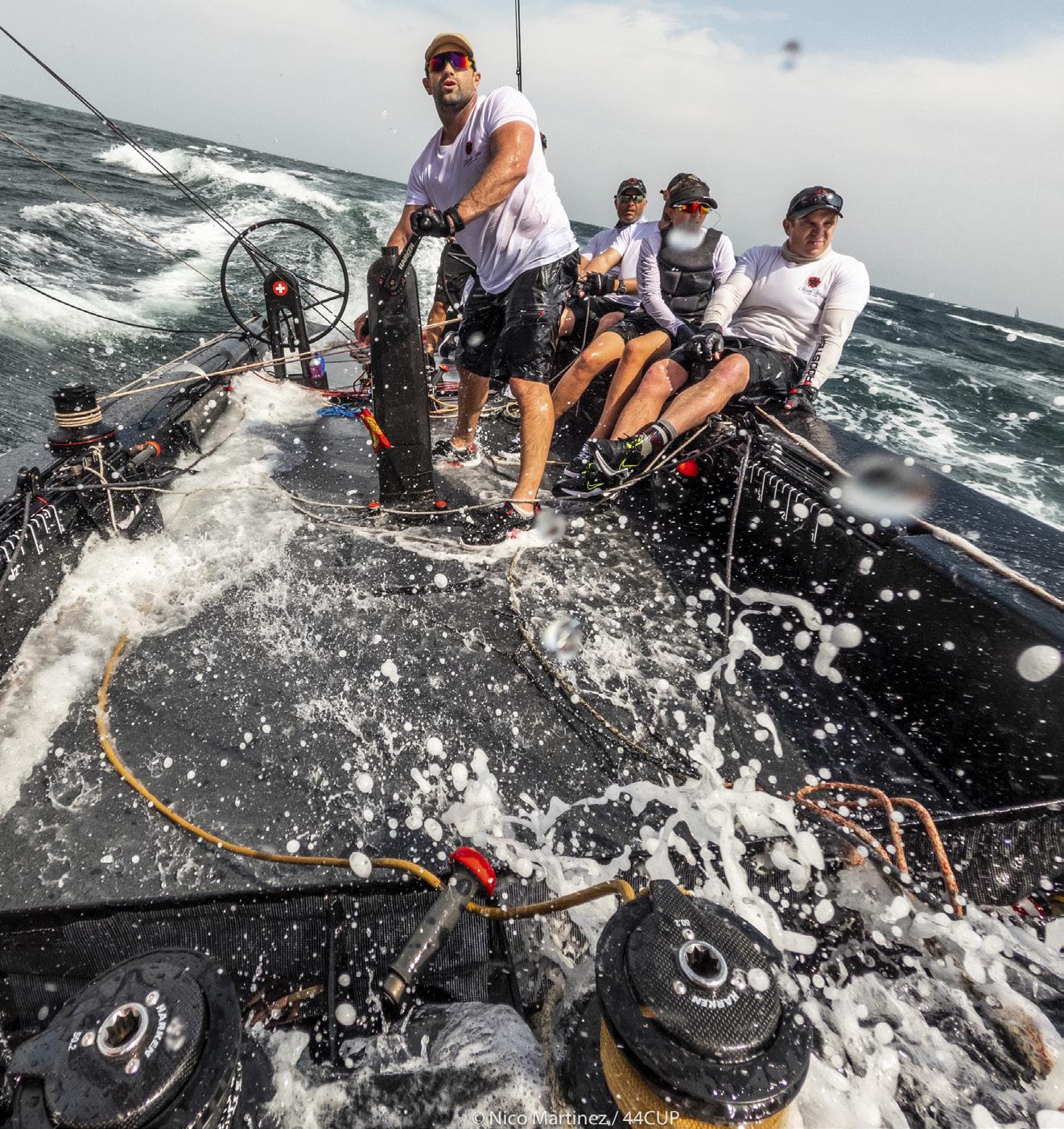
The key things here are that the crew has been through this scenario many times before. They know the drill and are all fully engaged in the tasks at hand. There was no extraneous conversation, except for the, “hike hard,” which still served a purpose, to encourage that little bit of extra effort. The verbiage used was clear and concise, including the non-verbal hand signals, between the bowman and the afterguard. This start gets a gold star.
NOW, WITH A less experienced crew, there of course needs to be more communication and prompting from the helmsman or another member of the afterguard. The important thing here is that there also needs to be an understanding of who is giving the direction—one clear voice. Confusion will often ensue when there are multiple voices painting different pictures. Effective communication is always a two-way street, that works best when there’s an acknowledgement of the direction or information being shared. This can take the form of a verbal response or an action. With experienced crews, there may be less verbal, only because everyone knows the drill. With unpracticed crews, that synergy hasn’t yet evolved to the point where less is more. For that simple reason, I would strongly suggest that more direction and prompting will always work out
better, at least in the early days of team building. Again, the thing that makes it all work, is that two-way element. Now onto the slightly touchier part of this conversation. I think we would all agree that words and language matter in our everyday lives and that is also true when we’re competing in sport. I would also suggest that in the heat of competition, depending on the venue and the circumstance, the guardrails will move a bit. There is a reason why professional athletes are not microphoned up during games (for the most part). Physical activity is often accompanied by grunts, groans, screams, words of encouragement, perhaps the occasional expletive. Another example would be using changes of inflection, both subtle and forceful, to stress a level of importance or urgency. If used sparingly, with the right intent, this language tool can contribute to bring-
ing about the best results. There is of course the danger of going too far, and crossing that line can have a negative effect on performance. Too much critique, too loud, too often, and it just becomes background noise, or worse, it gets interpreted as criticism, scolding or chastising. Communicating any message depends on more than just the words alone. Presentation is everything as they say, and that includes the tempo and cadence of your delivery. Bluntness has its place, but there will be times when the message needs a softer wrapping. An example would be saying to the helmsman: “We’re really slow right now.” That statement makes a clear point, but also carries with it some negative inferences. The better delivery could be. “We seem a touch slow, try a little ease and I’ll bow down, maybe?” This identifies the same problem without implying fault, then redirects to a positive outcome. There will be instances of course, even among the very best of friends, when words get said, misunderstandings occur, and feelings get hurt. That is a part of sport, and dare I say a part of life. Each of us has our own thresholds, tolerances and buttons that get pushed. It’s how we deal with, resolve and move past those moments that allow us to continue enjoying the experience.
IN CLOSING, THERE is one very hard line that needs to be drawn in any team sport communication. That is never insult, name call, or bring someone’s character into question. These things can be terminal and tough to come back from. Bottom line, good communication should be a priority in every race program, whether casual or professional. I know it’s a work in progress for me. How fortunate we are though, to have the opportunity take part and compete in the sport we love. Enjoy your time on the water and see you sometime soon!
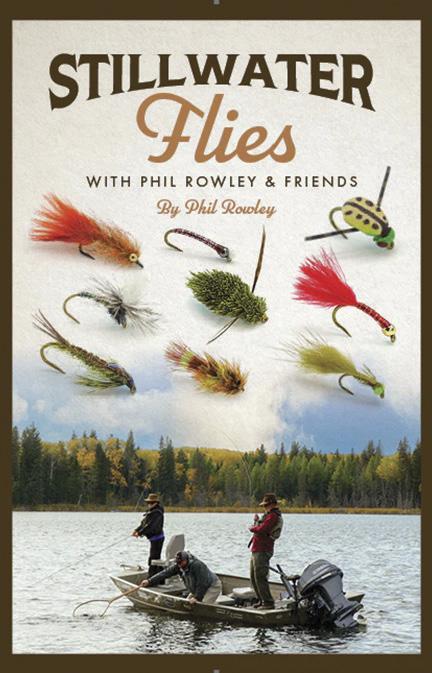



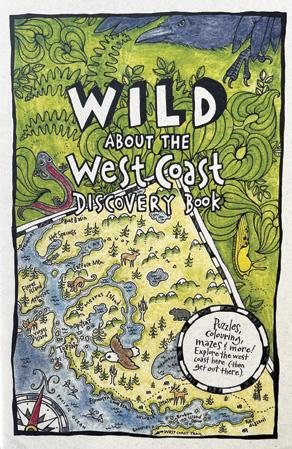

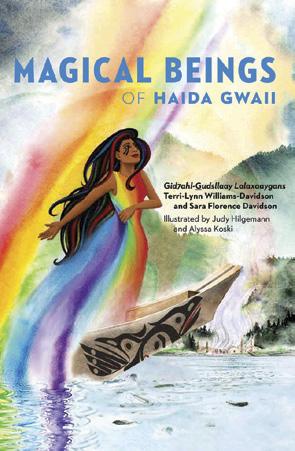




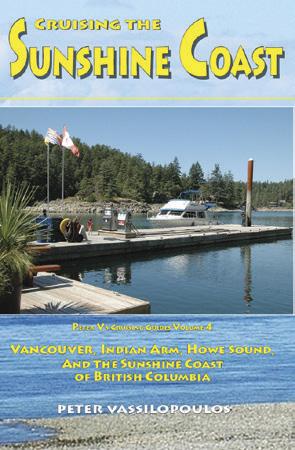
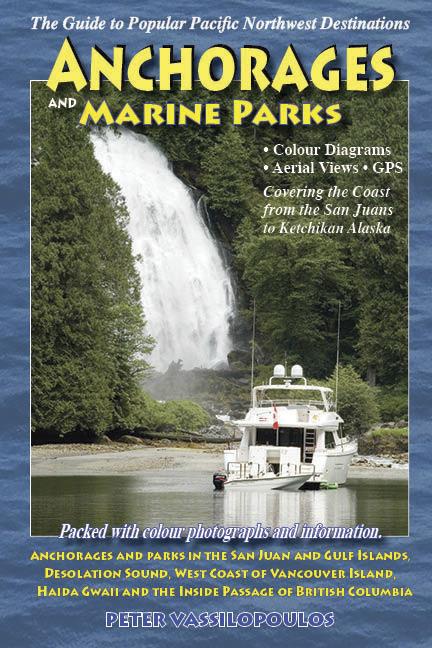



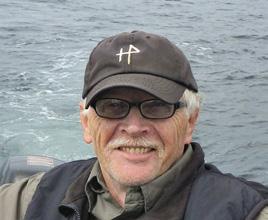
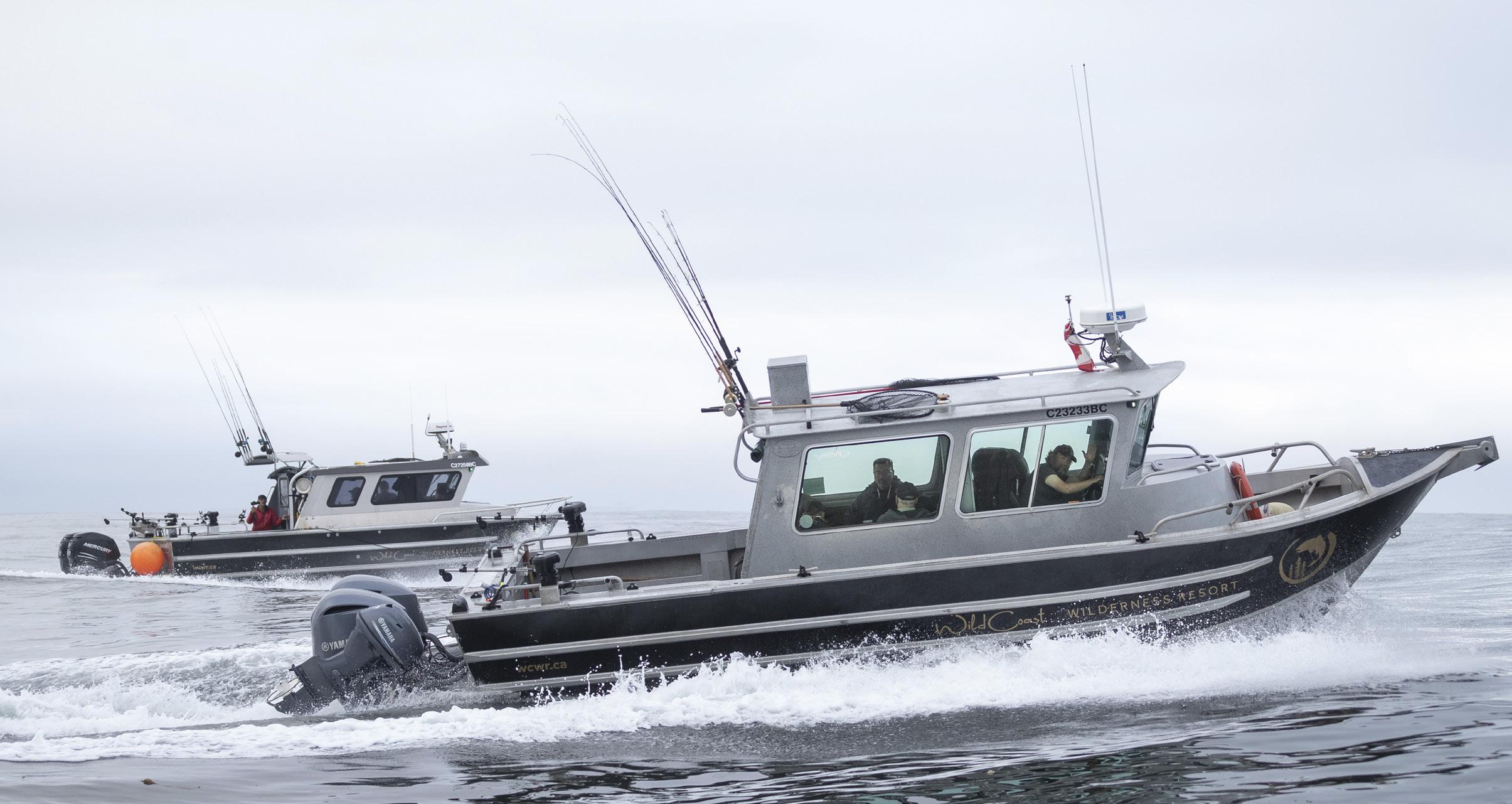
It’s been an interesting season for southern BC’s saltwater salmon anglers. The early summer fishery remained constrained by a fifth consecutive year of chinook-non-retention regulations to protect Upper Fraser River chinook stocks. However, the scientific basis for this sweeping non-retention strategy has come under increased criticism from angling representatives, who had jointly developed a number of mark selective
Ifishing proposals (MSFs) with Fisheries and Oceans stock assessment staff. The basis for a mark selective fishery is the retention of at least one hatchery chinook. They are easily identified by the missing adipose fin which was removed at the hatchery of origin. Other criteria necessary for developing MSFs included absence of stocks of concern and/or a high rate of adipose clipped hatchery chinook in the proposed fishing areas.
Unfortunately, senior Fisheries and Oceans staff seemed to come up with ‘after the fact’ reasons to reject many of the proposals with either no rationale given, or reasons that were divulged after persistent questioning.
Some proposals were accepted. However, they were small and short
term, or located in remote areas. The MSF development process has led to a commonly heard sentiment that fishing regulations, which include closures to protect Southern Resident Killer Whales, are based on politics and not the best data available.
This has come to a head in Port Renfrew, a tiny community which is highly dependent on recreational tourist angling. Members from Renfrew’s business community have formed the BC Recreational Fishing Association. They are currently examining options for a lawsuit against Fisheries and Oceans Canada (DFO) based on loss of economic revenue and lack of appropriate consultation with the local community. A Go Fund Me campaign has already raised enough money to
retain lawyers and develop a course of action. Anglers should watch this development if it eventually moves to the courtroom.
That’s the political update on the 2023 recreational fishery. So, what’s this year’s good news?





Many anglers have been left with few alternate fishing opportunities since chinook-non-retention came into effect in 2019. Where halibut were abundant, they became the default fishing option, followed to a much lesser degree by lingcod and rockfish. However, these options were not available over major portions of the south coast where halibut are scarce, and lingcod and rockfish are tightly regulated for conservation concerns.
As the peak fishing period approached it seemed 2023 would mirror previous years. Basically, anglers could still fish, including angling for chinook, but they were not allowed to retain any between April 1 and July 15 or longer in some important fishing areas, with the exception of a handful of approved marked selective fisheries.
Why didn’t catch and release chinook fishing catch on? The reasons are straightforward.





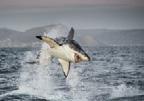



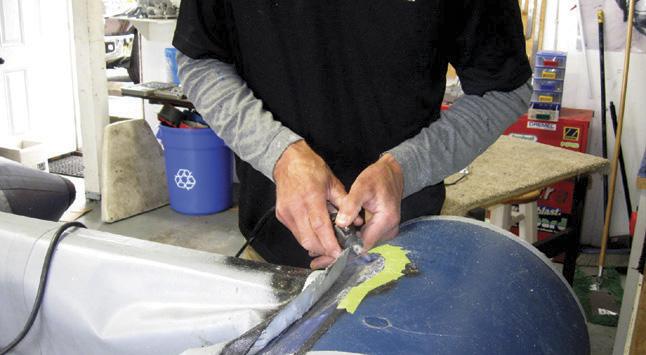
The vast majority of saltwater salmon angling is done to put fresh-caught, high-quality salmon protein on the table, not to catch and release as many fish as possible.



Catch and release can introduce incidental mortality issues if chinook are abundant and/or angling effort is high.

The cost of fishing, specifically fuel, and the prospect of an empty fish box kept many anglers at home, despite the increasing abundance of chinook in southern BC waters.


COHO TO THE RESCUE No one predicted the abundance of coho that appeared in the Strait of Georgia early
We make getting out of boat ownership a breeze. Donate your boat in support of our local community of sailors with disabilities and receive a tax receipt for its full market value.





We make getting out of boat ownership a breeze.



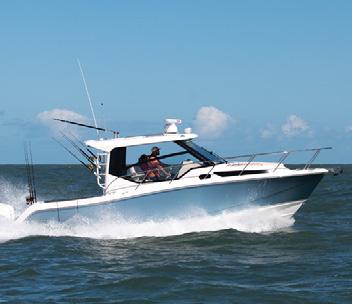
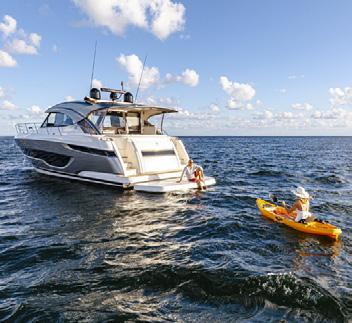

Donate your boat in support of our local community of sailors with disabilities and receive a tax receipt for its full market value.
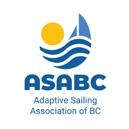






We call that a win-win.
We call that a win-win.
in 2023, particularly since they had been absent in appreciable numbers since the mid 1990s. This provided the impetus for anglers to take to the water. Only hatchery produced adipose clipped coho could be kept, but keeping a few salmon was the real key to kick-starting the fishery. Angling blogs were alive with reports of coho filling both sides of the Strait of Georgia. This volume of late spring and summer resident coho was something that recent generations of anglers had never experienced before.
So, why did these coho overwinter en masse in the Strait of Georgia for the first time in decades? Retired DFO scientist and Order of Canada recipient Dick Beamish proposed some possible scenarios. He points to good foraging conditions that probably existed in early 2022. This may have occurred exactly when baby coho entered the strait to begin the marine portion of their three-year life cycle. If enough food is available they stay, if not they migrate to offshore waters. Other factors could be improved adult escapement during the brood year and better freshwater survival rates which increased the number of juveniles in 2022. Scientific data, collected from trawl surveys in the strait, is currently being analyzed and the results should help pinpoint the reasons for this unexpected coho abundance.
PINKS, PINKS AND MORE PINKS
Odd numbered years produce dominant Fraser River pink salmon runs. However, by angler accounts, 2023 seemed to be off the charts for pink salmon abundance. These observations and fishing success stories are supported by test fishing results which show the highest pink abundance since data collection started in 1991. As of mid-August the Pacific Salmon Commission upgraded the Fraser pink run size estimate from 6.1 million to 11.6 million fish based on test
fishing results.
The definitive reasons for this pink bonanza are still unknown. Alexandra Morton, BC’s most vocal anti-fish farm campaigner, credits Fisheries Minister Joyce Murray’s decision to remove the farms from the Discovery Islands in 2022 as the most significant contributor to this year’s unanticipated pink returns.
Murray’s decision meant the Discovery Island farms were not operational during the juvenile pink salmon seaward migration. Pinks only live for two years and the 2023 adult return is based on fry production from the 2021 brood year, which migrated to the sea in the following spring.

Morton was relentless in her opposi-
will draw a direct causal link between the two, while farm supporters will point to ocean survival and other causes as the reason the 2023 pink return was so strong.
Chinook salmon have also been reported in large numbers in southern BC waters so far this year, while sockeye and chum estimates for the south coast are uncertain at the time this article was written.
THE FRASER RIVER Pink run has always been important for the public fishery. However, pink angling effort peaks after the non-retention regulations end, and it only occurs on the odd calendar years. So, it’s not really a replacement for chinook retention fisheries, rather it’s an added bonus that happens biannually.
The appearance of massive numbers of coho in the Strait of Georgia from May throughout the summer is a much different story. If this pattern continues it could revitalize early season fisheries that previously depended on chinook retention, while focusing fishing effort on hatchery coho and not chinook.
tion to Atlantic salmon farms being allowed to locate along salmon migration routes. She believed disease transfer from farmed salmon to wild salmon smolts existed using sea lice as the transference vector, and that lice loading on wild smolts in these confined migration routes were major contributors to wild salmon declines. Morton eventually received broad support from other scientists.
Other factors, like improved ocean survival rates, are potential contributors to this year’s pink salmon bonanza.
Whether the connection between the farm removals in 2022 and the impressive pink return in 2023 is real or coincidence is sure to re-ignite the debate about open net pen salmon farming in BC’s marine waters. Farm opponents
There is a salmon harvest allocation process that has been followed since the late 1990s. It prioritizes access to each species. For all salmon species, conservation comes first followed by First Nations food, societal and ceremonial requirements. The remainder is shared between commercial and recreational fisheries as follows. Chinook and coho are allocated placing recreational fisheries harvest above that of commercial fisheries. That is reversed for sockeye, pink and chum salmon with commercial fisheries given priority harvest access. The allocation process is up for review this year so anglers should be watching these deliberations carefully.




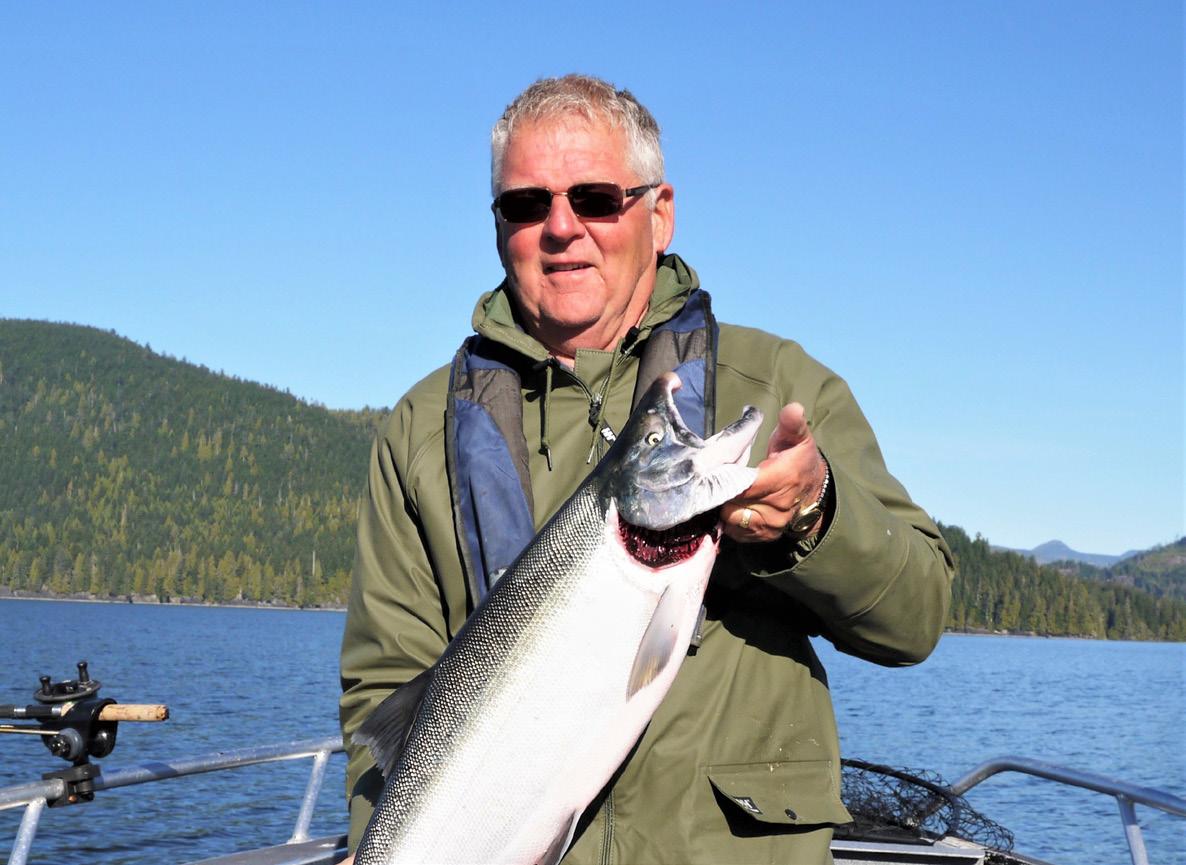
IN THE DECADES following the Second World War surface trolling bucktail flies was the preferred method for catching coho as they approached their home rivers. Anglers used fast troll zigzag patterns that altered the action and speed of the flies with each course change. Today, anglers don’t need to limit this shallow trolling tactic just to flies and spinners. Expand the options to include spoons, artificial herring strips or small plugs. The coho shown below was taken by Rex Coburn near the mouth of the San Juan River in October. He was using an artificial herring strip, without any weight, fished 50 to 60 feet behind the boat using the line’s weight to keep the lure a few inches below the surf.


IIt’s always great to get out on the water, even if it is only for a few hours, and my romp around Howe Sound with Jeff Rhodes aboard Coastal Craft’s impressive new model, the 45 ExpressFish, was as good as it gets.

Gibsons, BC-based Coastal Craft was founded by Jeff Rhodes in 1996. He started out building aluminum workboats, but soon moved into the realm of luxury yachts. Since then, his company has grown into what is arguably the finest builder of medium-size aluminum yachts in North America. The company owes its success to its beautifully faired hulls, sweet sweeping sheer lines, raised bows, attention to detail, top shelf workmanship and high-end luxury appointments. Today, the company offers models from 33 to 45 feet (10 to 14 metres). While, initially, Coastal Crafts featured workboat-like forward-sloping windshields, in recent years they have introduced models with sleek, frameless, aft swept windshields and tinted windows that wrap around the house for a super cool look.
The 45 ExpressFish is a two cabin, one head model, powered by twin 480-horsepower, six-cylinder Volvo-Penta 650 IPS pod drives that can move the 45 along at top speeds of 35 knots. It is the successor to the 42 ExpressFish with the same

The stylish saloon has a clean, modern and uncluttered look.




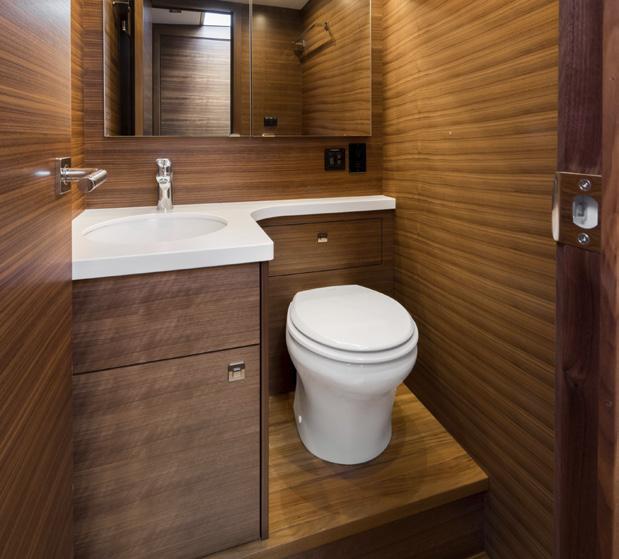

interior layout, but with a three-foot longer cockpit for even more room for serious fishing (or just hanging out). However, while Coastal Crafts have always been known for their great performance in all sea conditions, the inhouse aluminum hull design for the 45 is brand new, with a wider beam and wider chines, two sets of lifting strakes, a deeper V and slightly more deadrise than previous models for a softer ride.
ON DECK Despite being aluminum, the hull and cabin sides are faired and painted to a mirror finish. Rhodes says that there were 8,500 man-hours put into the construction of the vessel with fairing and painting being approximately 22 percent of that time.
The partially covered 144-square foot (13.38-square metre) cockpit is huge and uncluttered, with durable, no-maintenance synthetic Flexiteek on the sole and bulwarks. Entry is via bulwark doors on either side. The concealed second steering station with throttles, joystick and a chart plotter is a real bonus when fishing and docking. An abundance of lockers for fishing gear and a bait/cleaning station with great tackle storage aft will suit even the most dedicated fisher. Versatile, high-end Burnewiin bulwark mounts combine with adjacent power-points for gear such as electric downriggers, a prawn puller or a barbecue. A large hatch in the sole provides complete access to the diesels. Flanking that are two insulated fish boxes. Cockpit seating consists of a mezzanine seat (with insulated cooler and rod storage underneath) as well as two folding double seats in the transom. The test boat was equipped with a pair of Gemlux Bluewater outriggers with 18-foot (5.5-metre) carbon fibre poles. The outriggers will hold up to two lines per side adding arsenal to the spread when hunting albacore tuna offshore locally or any Pelagic
species in warmer waters where trolling up to 10 knots is desired.

The side decks are wide enough for easy passage forward, with well-placed welded rails on the cabin sides. I like the styling of the outside handrails and the way they curve gently down at their aft end. The decks are solid with no flex whatsoever. And like the cockpit, the side and forward decks are clean and uncluttered. The anchoring hardware includes a Lewmar windlass, 55-pound Ultra anchor and more than ample rode, with 100 feet of chain and 300 feet of anchor line.
INTERIOR An integral door/window system from Diamond Sea Glaze consists of a bi-fold glass panel door and a
hinged electric bulkhead window. The arrangement eliminates the need for a support post between the two and makes for a cleaner, more open transition between the cockpit and saloon.
The stylish saloon is highlighted by clean, squared off furnishings. Loads of dark grain-matched black walnut woodwork and teak plank flooring, combined with beige Ultraleather upholstery, gives the interior a very modern, uncluttered look. The fit and finish throughout is flawless. A curved, one-piece windshield (by Coastal Curved Glass) combines with expanses of bonded and fritted side windows by Diamond Sea Glaze to provide almost 360-degree views. Two opening windows and a large
sunroof provide ample natural ventilation. Headroom is a surprisingly lofty, at 7’ 2” (2.2 metres).
Immediately to port, steps lead below to the surprisingly roomy guest cabin. The black walnut panelling, teak plank flooring and vinyl foam wrapped ceiling and wall panels create the sweetest aft, under-saloon berths this reviewer has seen. The two single bunks can be combined to create a berth that is just shy of a queen. A hanging locker provides good storage. An overhead hatch and a door allow this cabin to be fully enclosed for pri-
vacy and is nicely separated from the master stateroom.
A long, linear galley to starboard offers tons of counter space. Appliances include a three-burner electric Force 10 cooktop, under-counter convection microwave and side-by-side stainless Isotherm fridge and freezer. A cavernous storage “basement” under the saloon floor offers extra storage.
The U-shaped dinette to port has plush seating for six and is fronted by a beautifully crafted high gloss hi-low table that can double as a queen berth. Forward of this is a double compan-

ion seat. The helm station to starboard is made comfortable by a helm seat mounted on a Shockwave S5 suspension base. The Volvo joystick/autopilot control is built into the armrest. Twin Garmin 8617 (17-inch) touch screen displays are complemented by the Volvo engine management panel and various rocker switches and of course, the dual electronic engine controls.
The belowdecks area is again luxurious with the extensive use of grainmatched black walnut veneers and
teak plank flooring. Headroom here is a generous 6’ 4” (1.9 metres). One feature I really like here is the shower and head compartments which are separate and across the companionway from each other. The shower is enormous—megayacht size and is constructed from Corian “Wet Walls” with Corian tile floor panels. It was here that I first noticed the excellent caulking by Len at Coastal Craft. I soon discovered that wherever there was caulking in the 45, it was perfect—the smoothest I’ve ever seen. The four walls of the adjacent head compartment are all of grain matched black walnut.
A queen-plus island berth is fitted with teak planked step platforms on


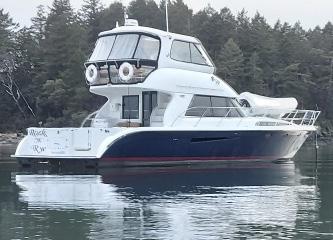

either side as well as port and starboard full height lockers and separate dressing tables. Four drawers under the berth provide even more storage. Sideboards to either side of the berth have recessed storage pockets and charger outlets. While bow masters are generally quite similar due the shape of the bow, the belowdecks of the 45 are outstanding in their innovative details. Once again, the extensive use of wood gives the interior a rich, opulent look.

SYSTEMS Onboard AC power is provided by a Phaser 8 kW generator. The main shore power is 240V/50A with an optional auxiliary 120V/30A to provide charging capabilities to the

500 Ah Battle Born lithium house battery bank. The ship’s 12V DC system provides power for all low voltage onboard electrical requirements. A Victron 5 kW Quattro inverter/charger can produce up to 5 kW of AC limited power to the 110V electrical components while underway or at anchor without running the generator. The 240V/50A shore power cord is neatly stowed on a Glendinning cable reel.
Espar D5 and D2 Airtronic diesel heaters provide heat while a Webasto 25K reverse cycle air system provides both cooling and heating for optimum comfort. A Hurricane hydronic system provides hot water. A Spectra 340C water maker assures owners will never run out of water.
UNDERWAY It’s always enjoyable to ride with Jeff Rhodes. He has no qualms about putting his yachts through their paces and doesn’t shy away when it comes to rough handling and letting me make high-speed manoeuvres. This day we were fully loaded with fuel and water which gave us a total displacement of 35,000 pounds. With a combined 960 horsepower, the 45 climbed onto the plane in just over six seconds at 13 knots. At a displacement speed of 8.4 knots (1,370 rpm) we were sipping 5.5 gallons per hour (20.8 lph) of diesel. On the plane, at a slow cruise of 14.6 knots (2,150 rpm) our fuel burn increased to 18 gph (68.14 lph). At a fast cruise of 25.3 knots (2,920 rpm), we were burning 32 gph (121 lph), and at a faster planing speed of 29.3 knots (3,180 rpm), our burn increased to 37 gph (140 lph). Speeds of between 25 to 30 knots seemed to be ideal cruising speeds with a consistent distance of 0.79 miles per gallon (3.8 litres). This translates to a range of 430 miles
(with 10 percent reserve)—enough fuel to travel from Vancouver to Prince Rupert on a single tank. Wide open throttle (3,520 rpm) took us up to just over 34 knots. Overall, the ride was excellent, the steering precise and we leaned nicely into sharp turns at speed. Bow rise was minimal when coming up onto the plane and visibility through the single-piece windshield was excellent. When set to auto, the Humphries trim tabs worked extremely well to keep us on an even keel. The engines, under the cockpit, are well insulated so engine noise in the cabin was minimal.
LOA 14.2 m / 46' 6"
Beam 4.32 m / 14' 2"
Draft 1.07 m / 3' 6"
The Coastal Craft 45 ExpressFish stands out for its styling, quality of build, fit and finish and fishing amenities. The Volvo-Penta pod drives performed as expected, were fuel efficient, and provided plenty of get-up-and-go. The ride was comfortable and solid at all speeds. While primarily marketed as the ultimate fishing machine, the

Disp (loaded) 15,876 kg / 35,000 lbs
Disp (light) 13,154 kg / 29,000 lbs
Fuel 2,271 L / 600 USG
Water 341 L / 90 USG
Black Water 144 L / 38 USG
Built and Sold by Coastal Craft Gibsons, BC coastalcraft.com



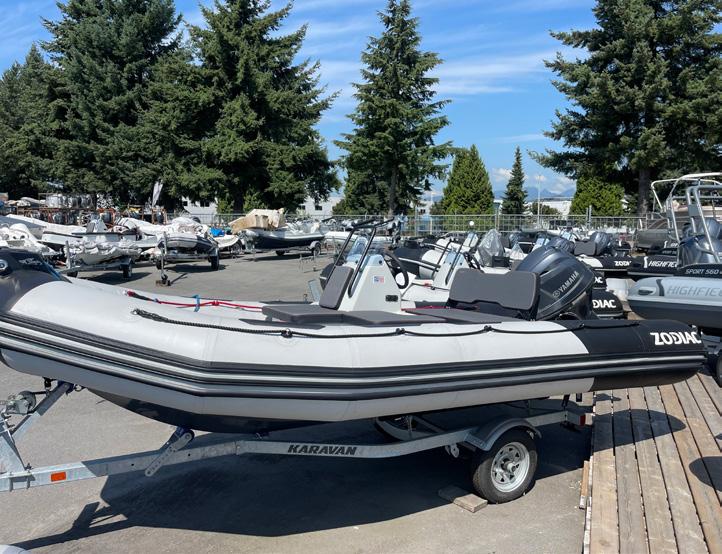




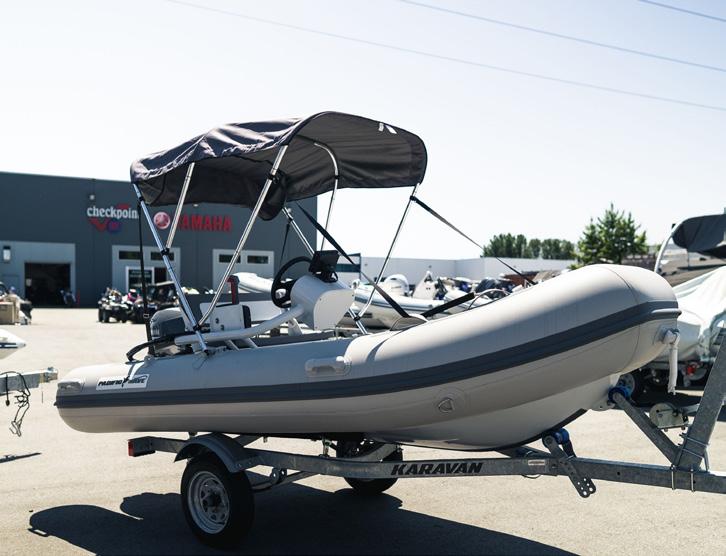












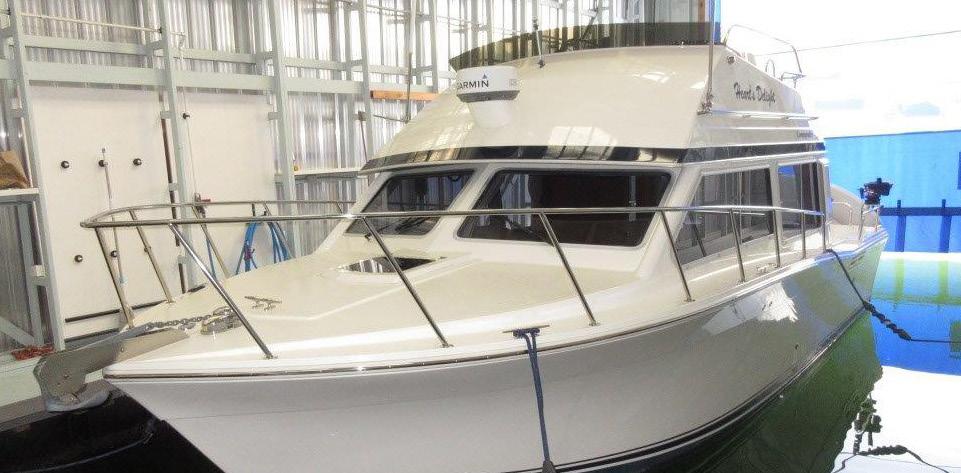


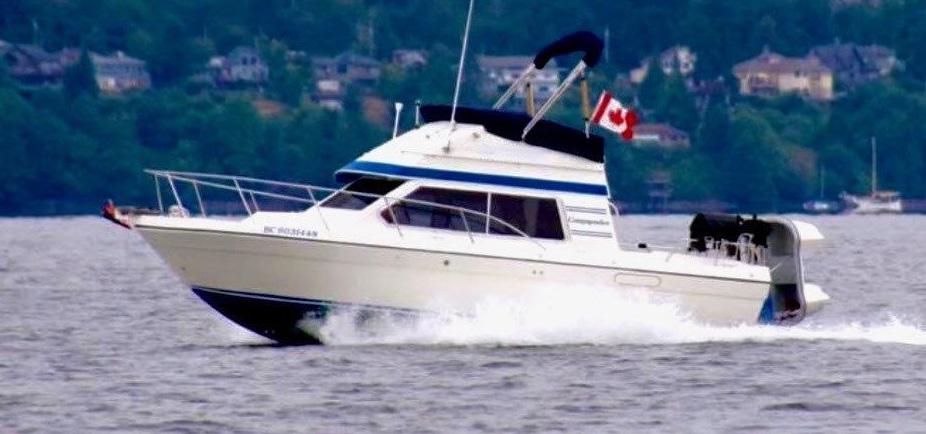


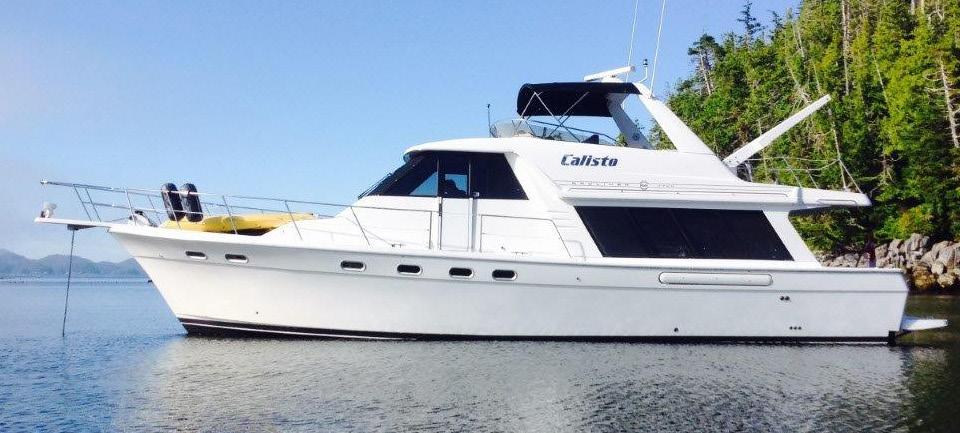
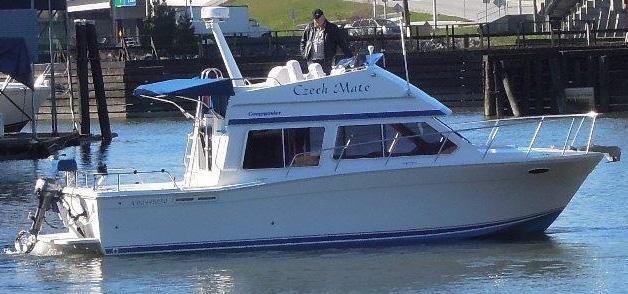








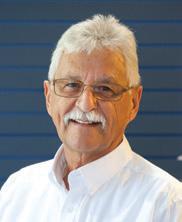






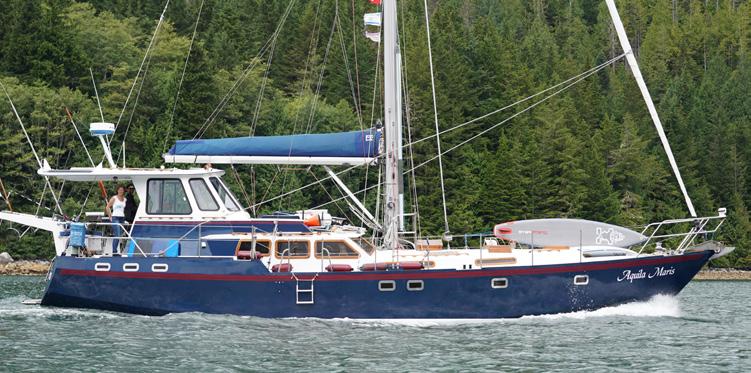






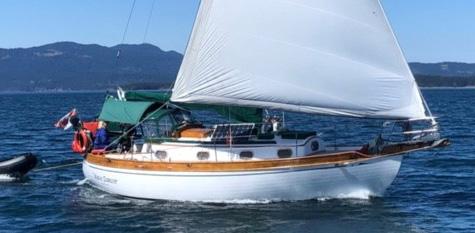
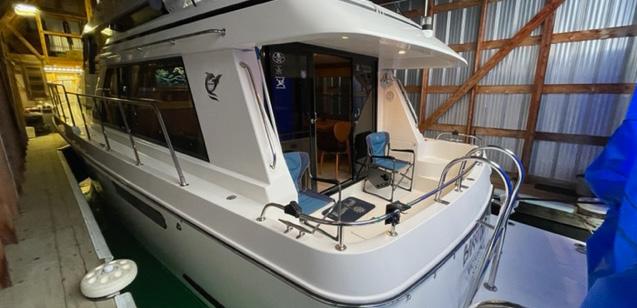
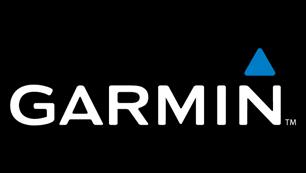

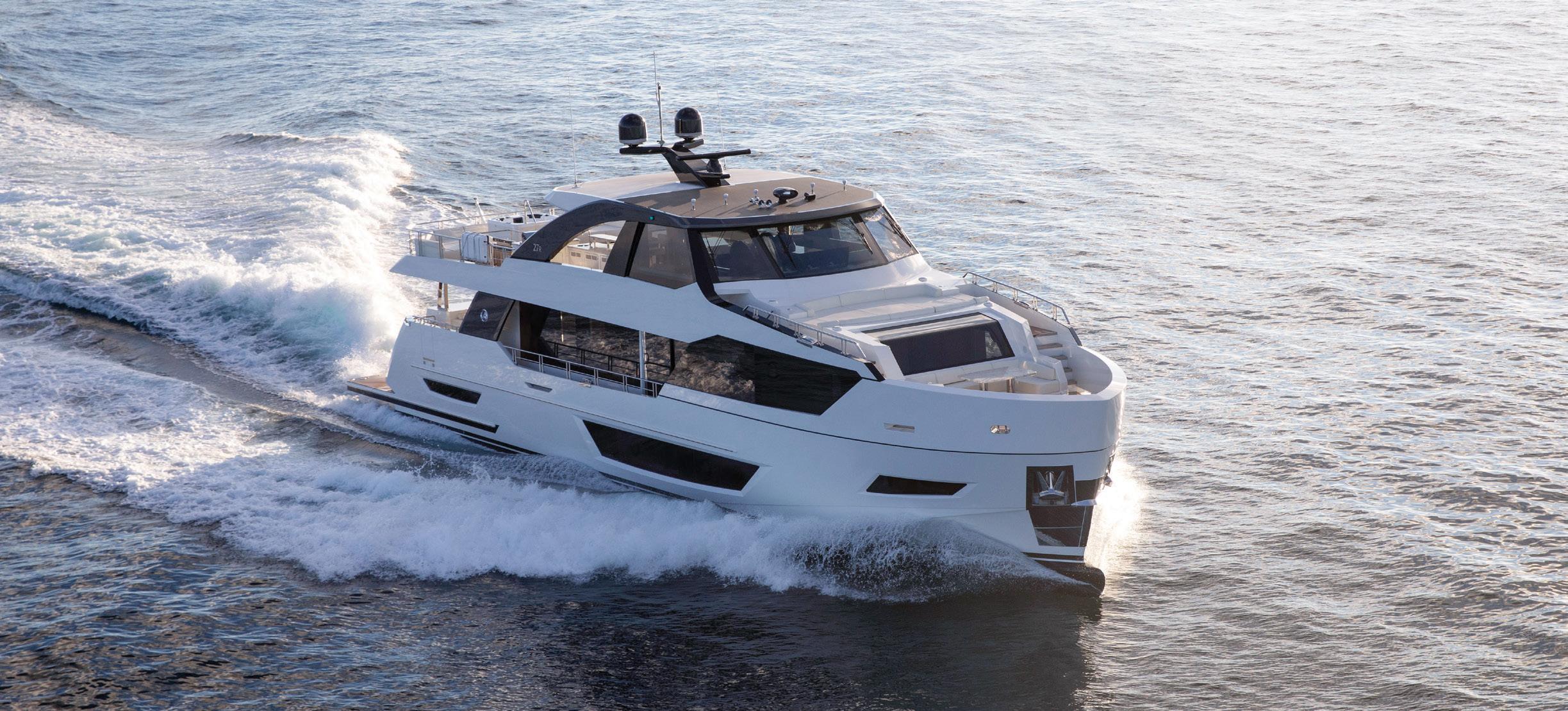

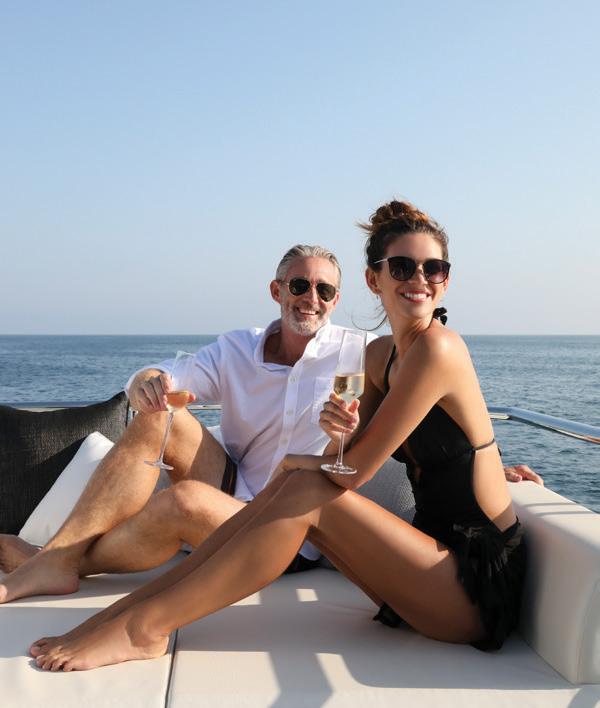






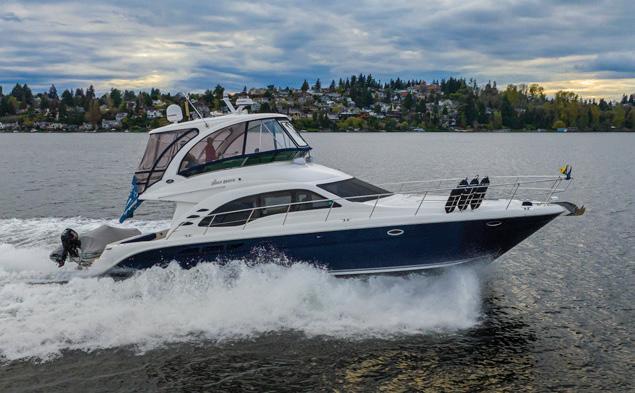


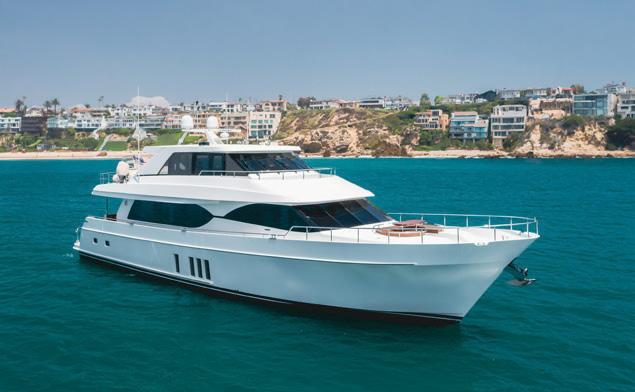




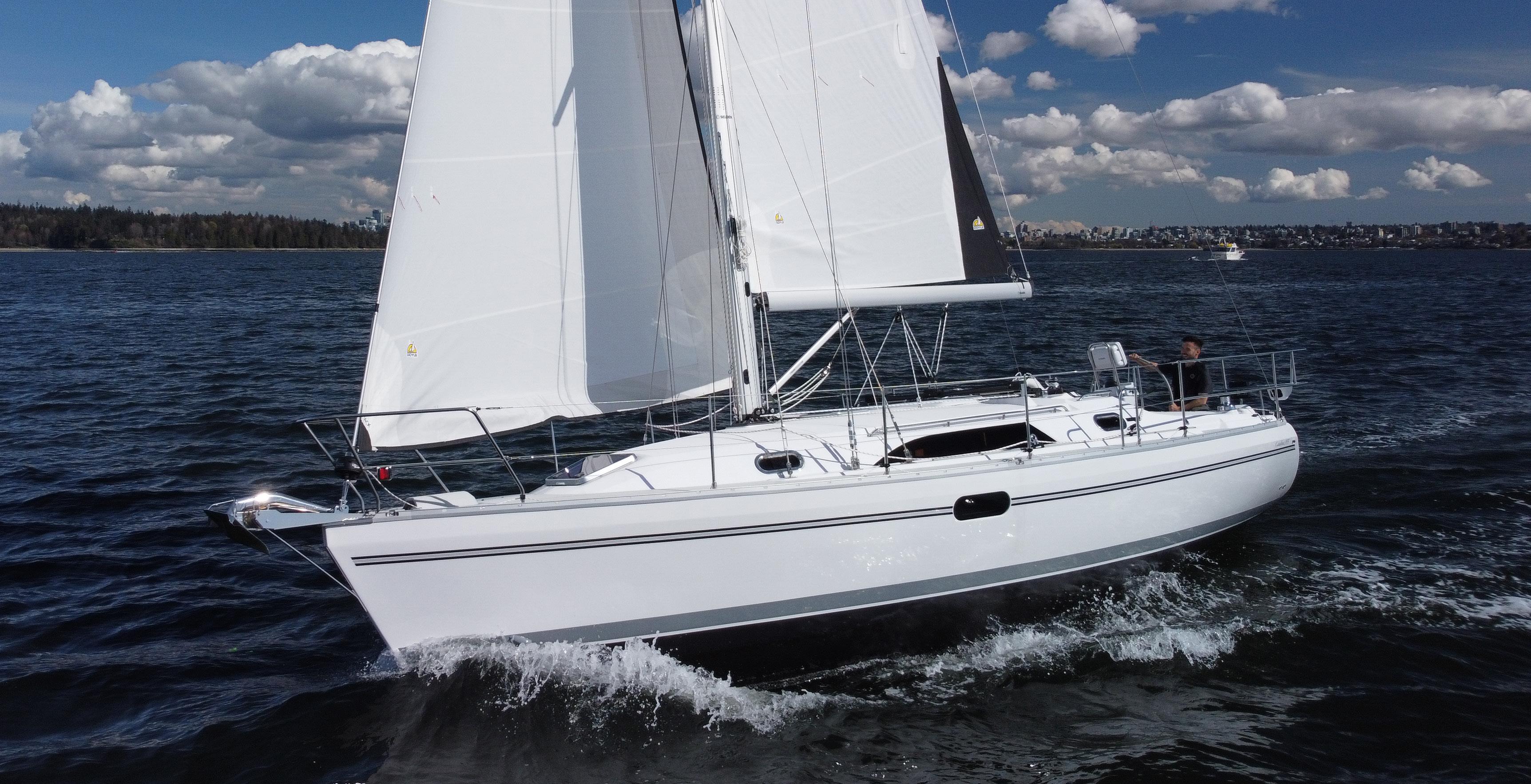
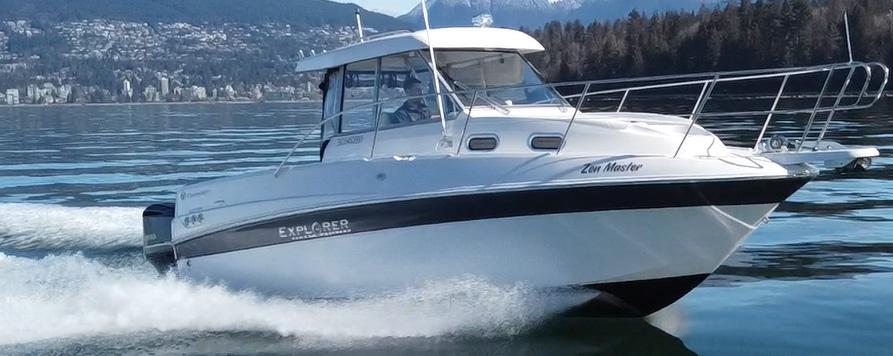



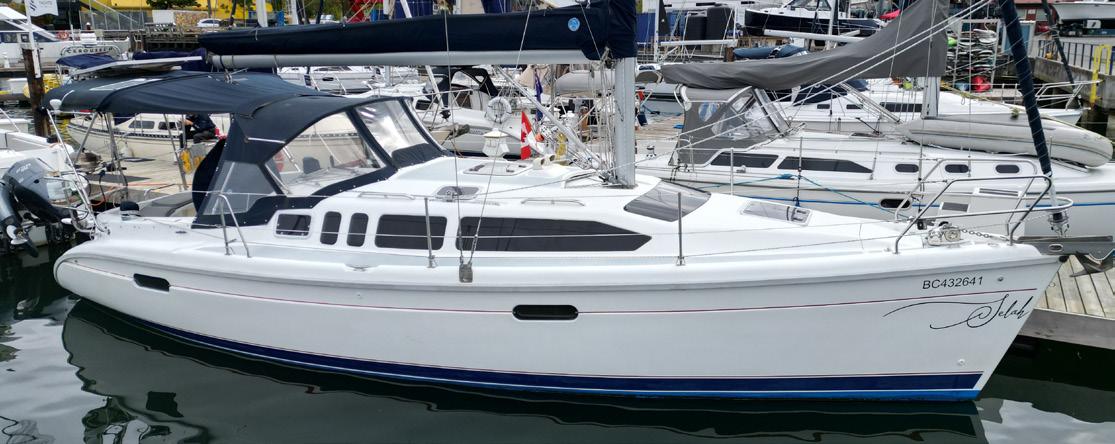
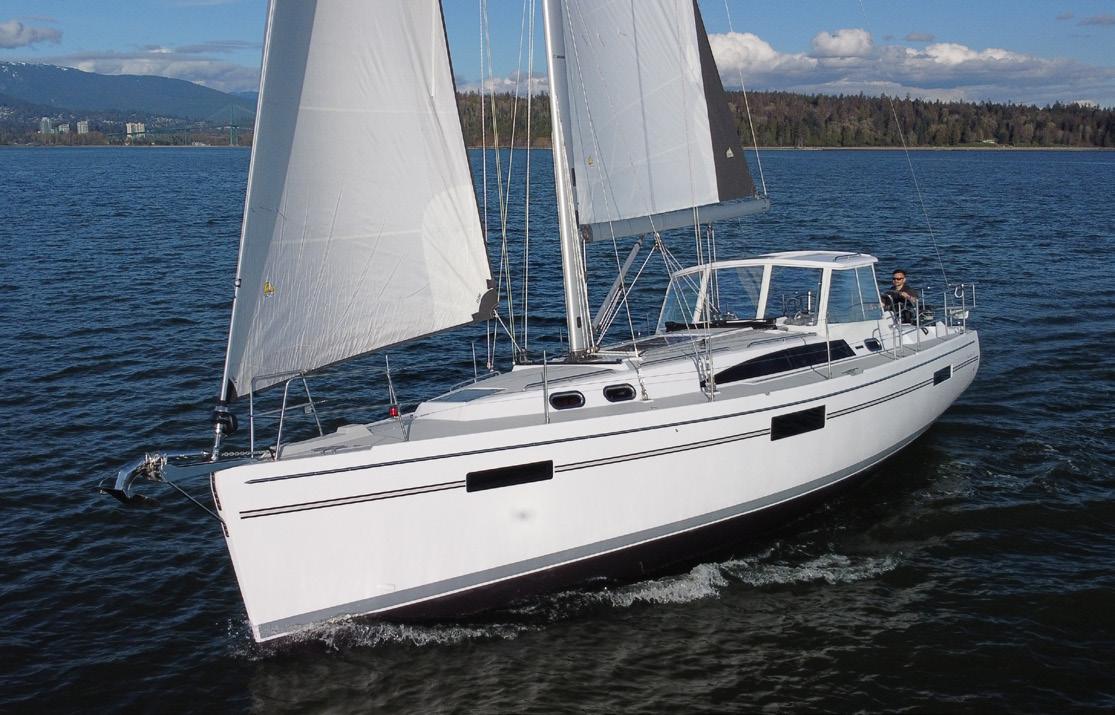


Perfectly suited for Coastal Cruising $465,000 USD
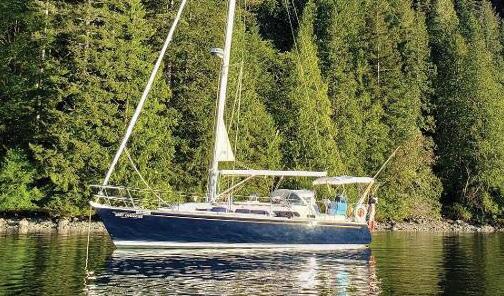
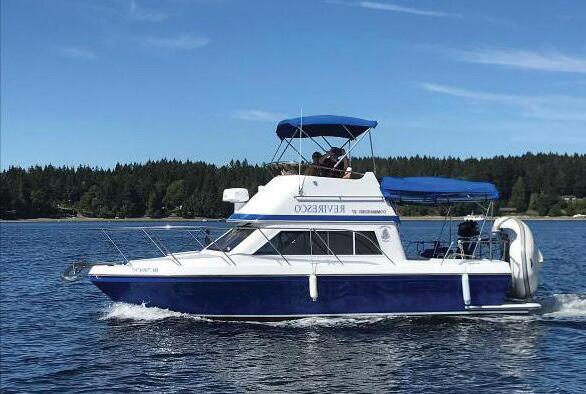
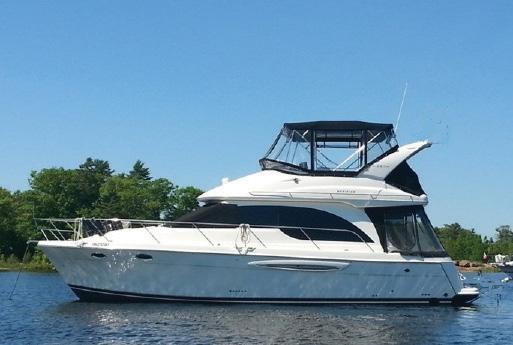
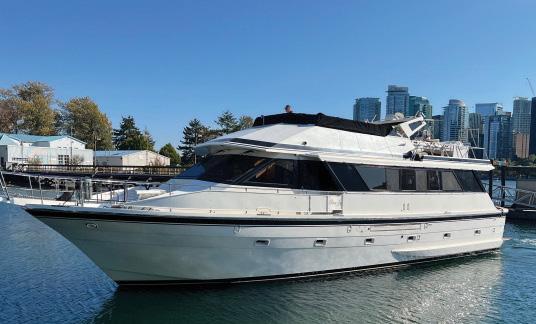
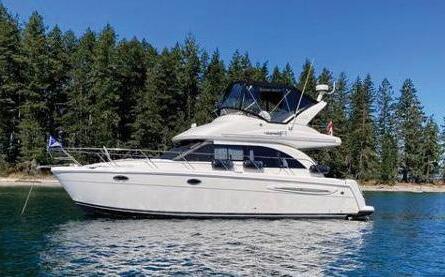








62 KHA SHING
Owner has a custom King size bed in master plus two staterooms
39 O’Day Sail $69,900 SOLD!!! 34 Tollycraft Tri Cabin $69,900 34 BAYLINER 3488 LOW HOURS! $69,900 NEWLISTING MOTIVATED 27 Sea Ray Amberjack $74,900 30 Carver Sedan $49,900 36 Sceptre Sail Sloop $59,900 NEWLISTING NEWLISTING NEWLISTING NEWPRICE 80


COMMANDER Ready to
27
LIST YOUR VESSEL WITH US. WE HAVE TWO HIGH VISIBILITY SALES DOCKS


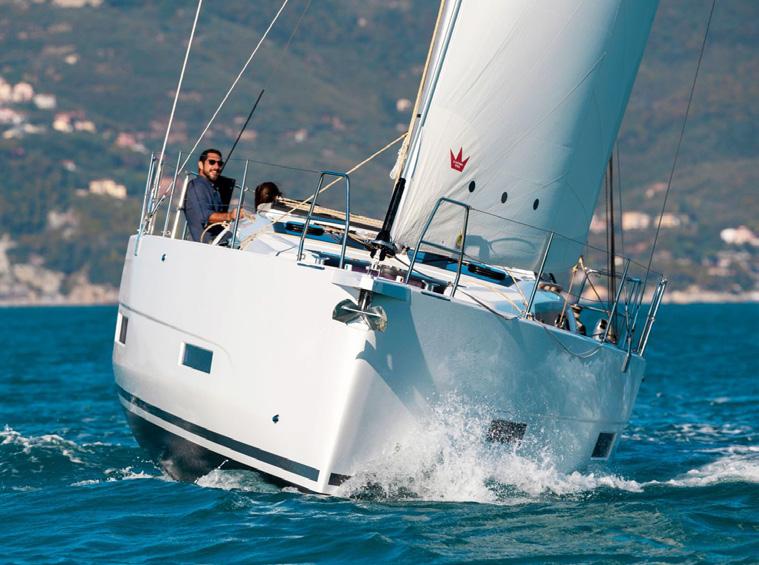



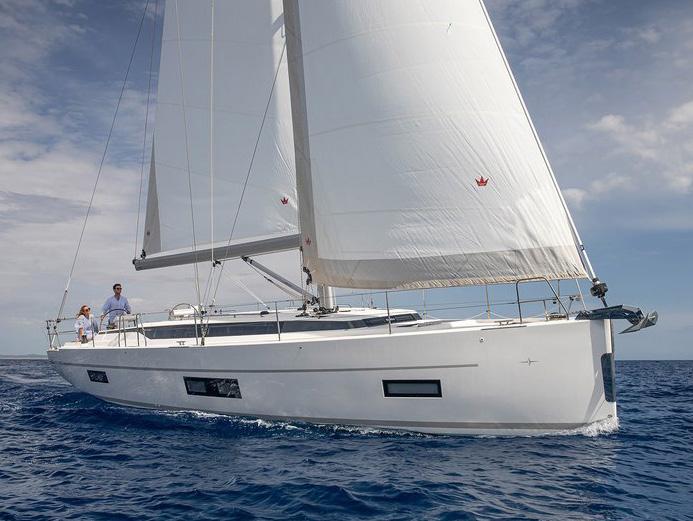


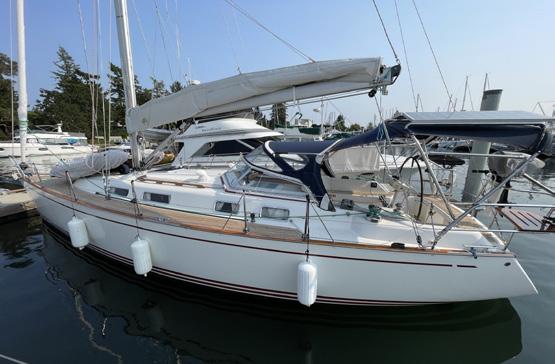
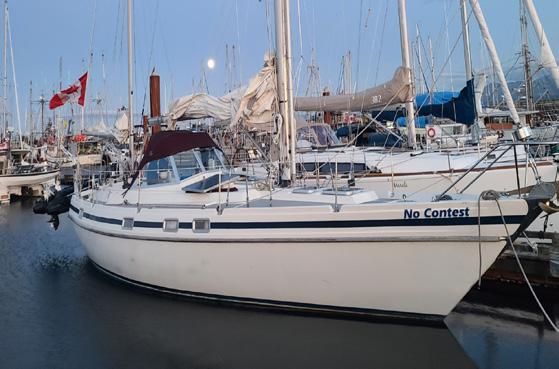


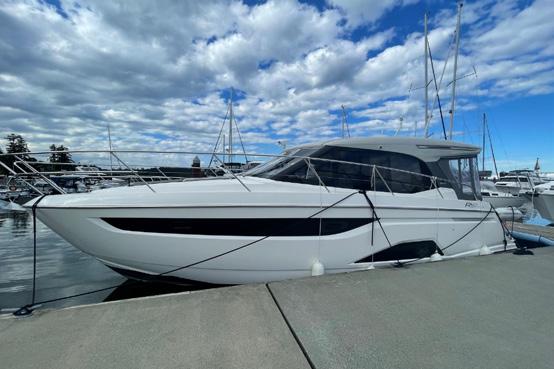



Granville Island
T: 604-488-1202 SIDNEY
Port Sidney Marina

T: 250-656-6644
 1997 FARR 60 PILOTHOUSE ASKING $443,500 USD
2021 BAVARIA R40 COUPE ASKING:$845,000
2002 FORMULA 400SS ASKING $135,000
1980 TOLLYCRAFT SEDAN ASKING: $159,000
1979 CUSTOM VIC CARPENTER 45 ASKING: $250,000 USD
1997 FARR 60 PILOTHOUSE ASKING $443,500 USD
2021 BAVARIA R40 COUPE ASKING:$845,000
2002 FORMULA 400SS ASKING $135,000
1980 TOLLYCRAFT SEDAN ASKING: $159,000
1979 CUSTOM VIC CARPENTER 45 ASKING: $250,000 USD
Greg Andrew, CPYB
Yacht Broker & New Sales gandrew@vanislemarina.com
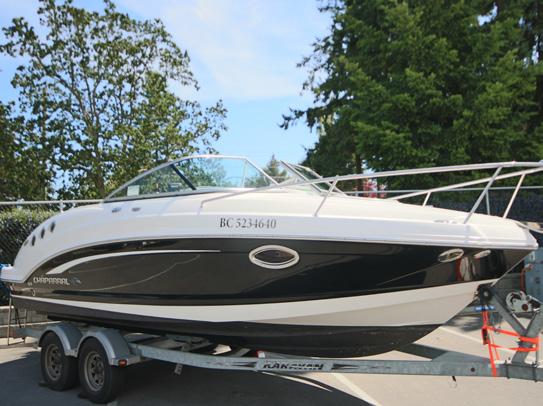

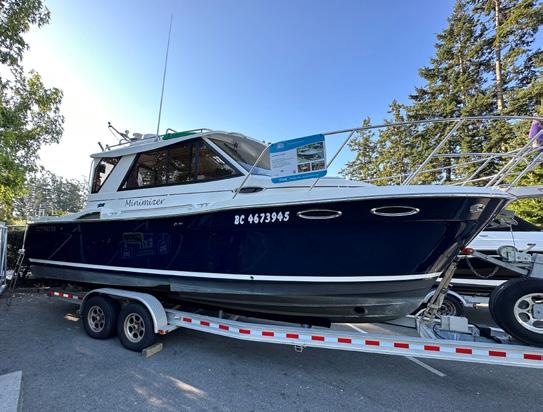

Adam Pedersen
Yacht Broker & New Sales apedersen@vanislemarina.com


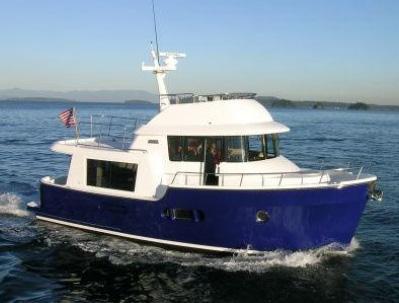







Nynke Plouffe
Yacht Sales Coordinator



nplouffe@vanislemarina.com


Sidney, BC | 250 656 1138
vanislemarina.com







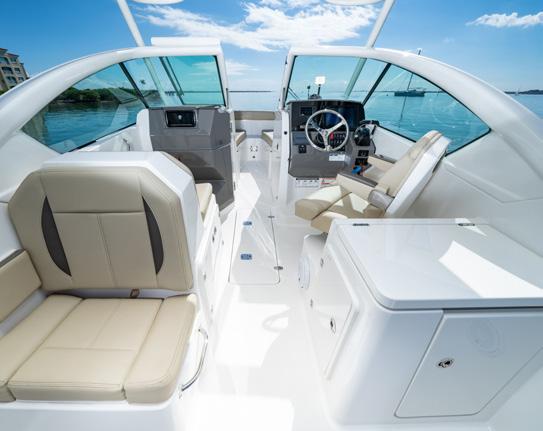

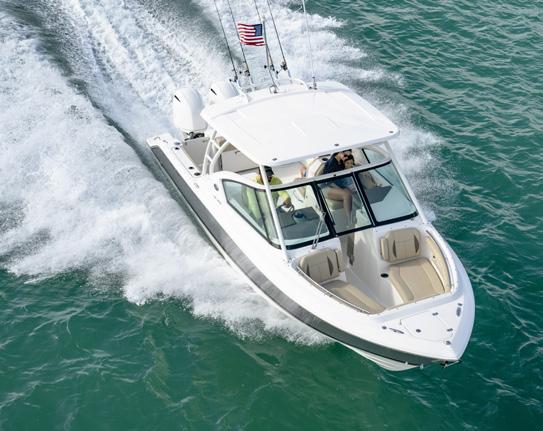

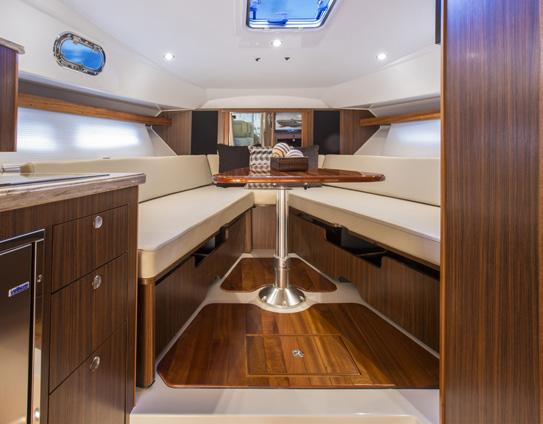
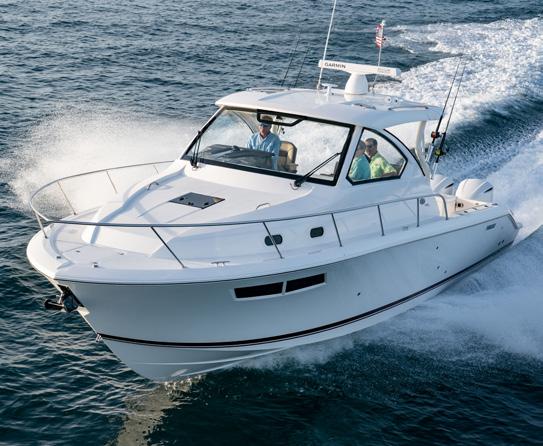



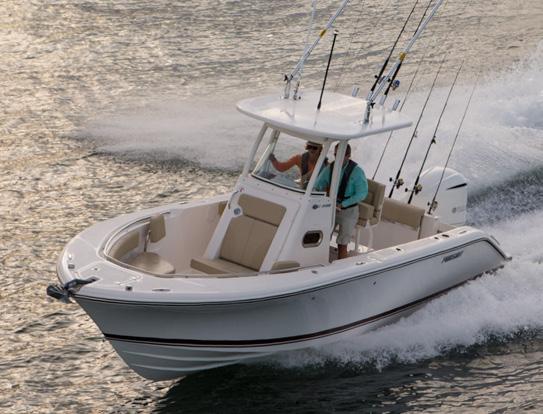

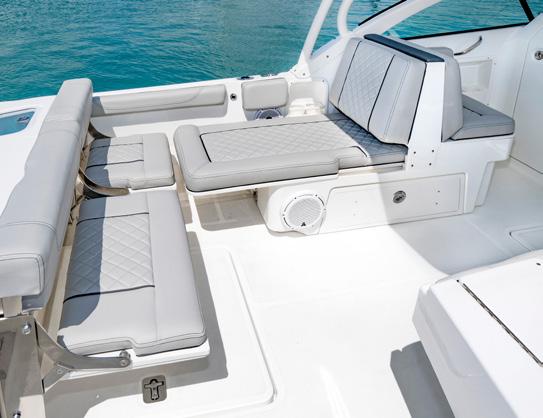
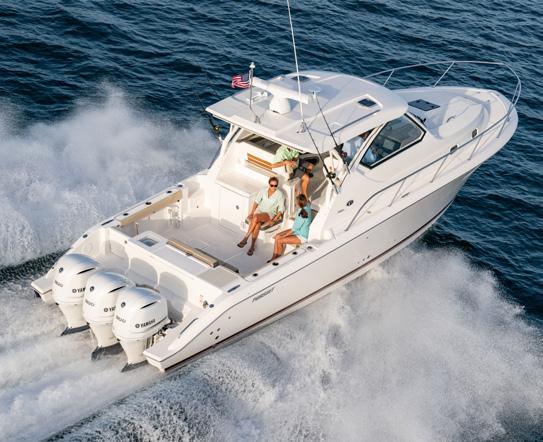


A new direction in the evolution of the Y class exterior design language, focussing on the development of refined, sophisticated surfaces in every area to generate a uniquely clean overall aesthetic. The new Y72 design features are comparable to those of larger Y yachts.

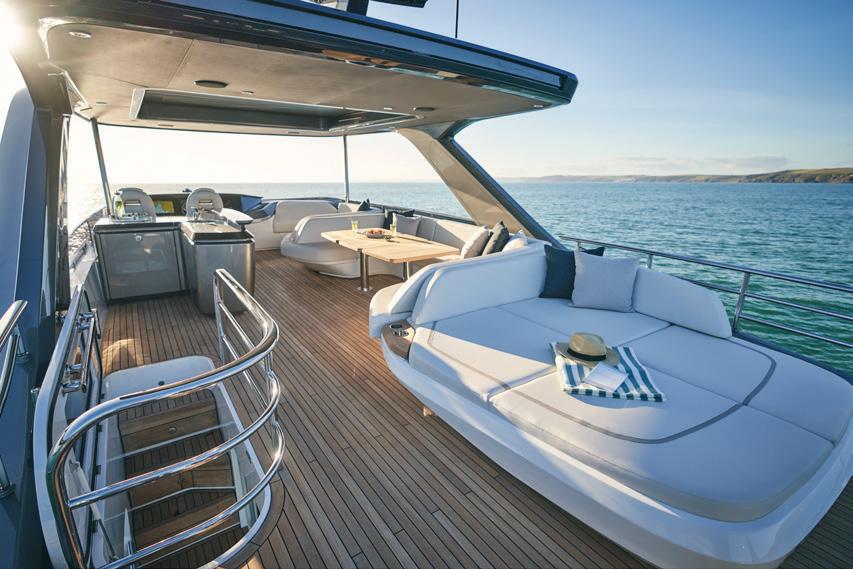

AVAILABLE FOR 2024
 Princess Y72
Princess Range
Princess Y72
Princess Range
EXPERIENCE THE RIDE OF AN AXOPAR


Trades welcome, moorage available, inquire for details!
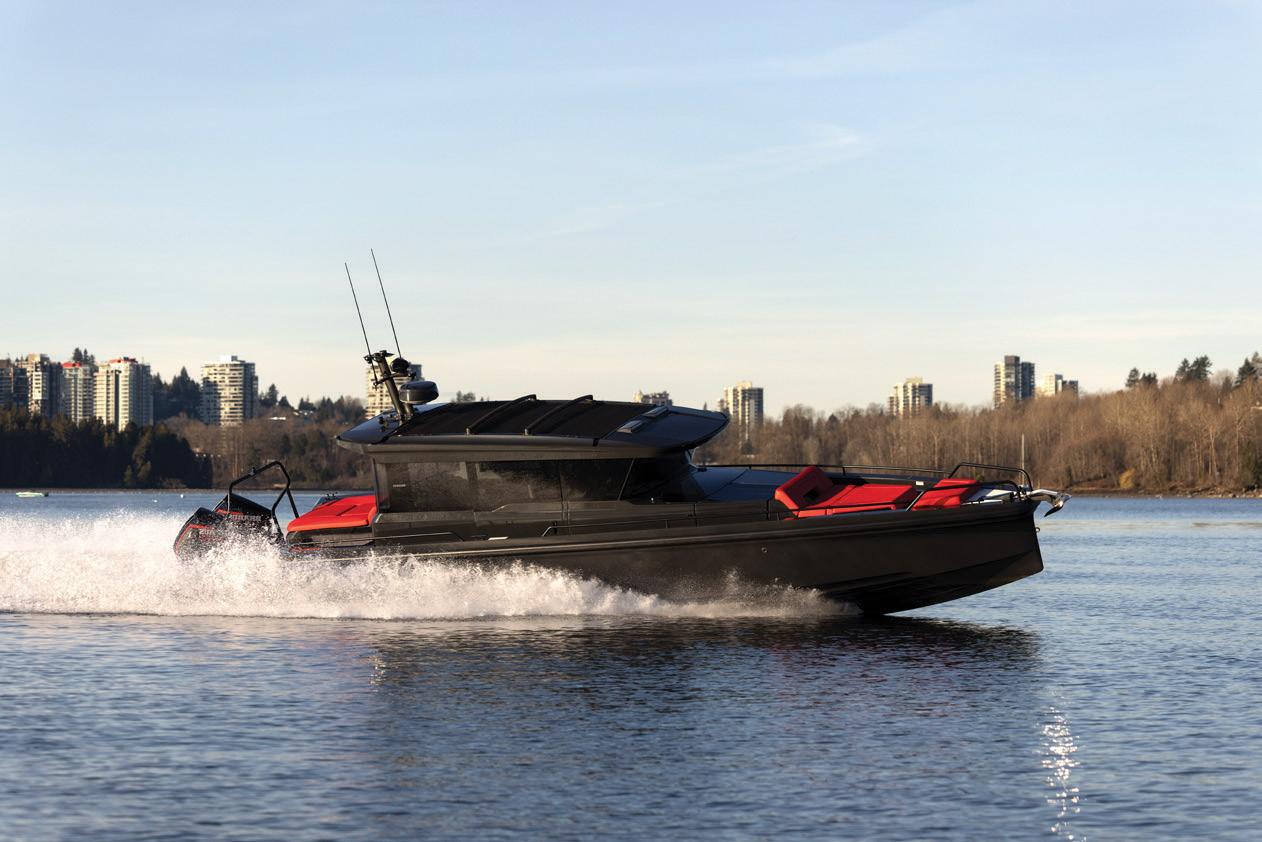







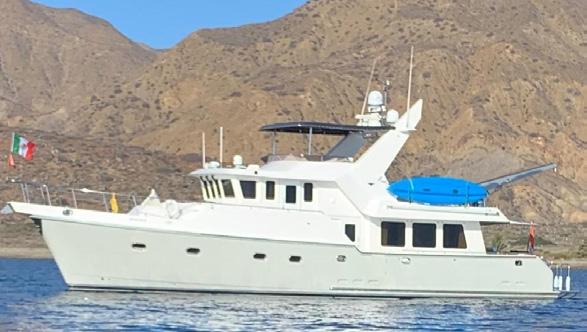














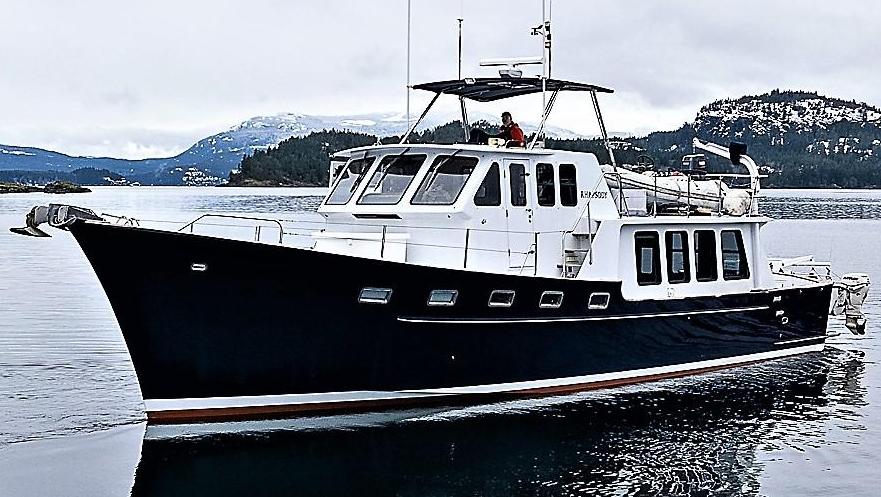


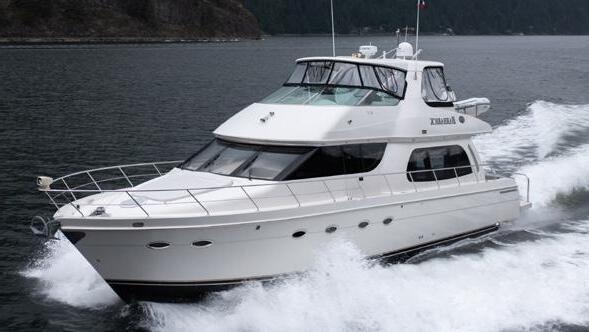
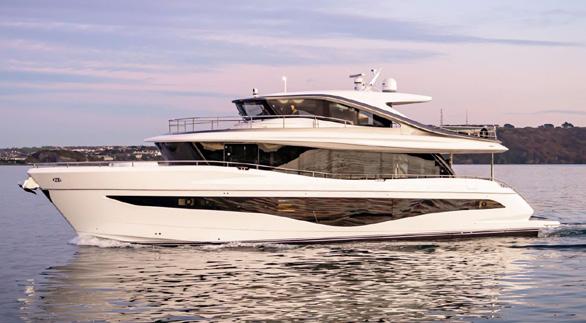



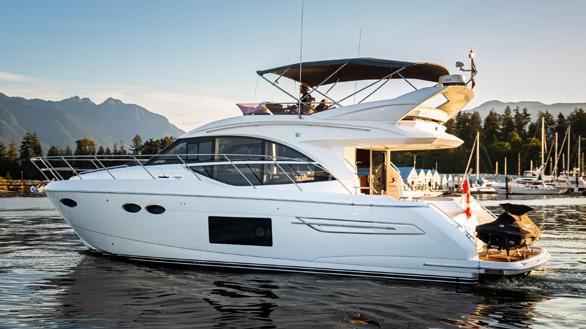
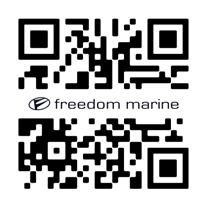

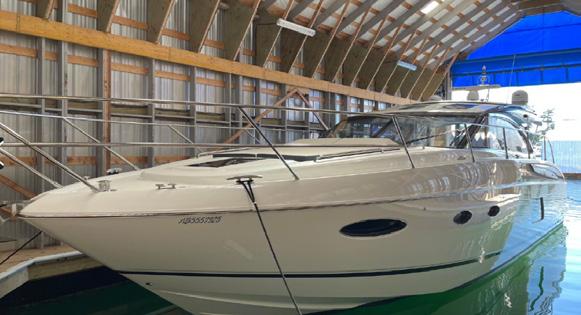




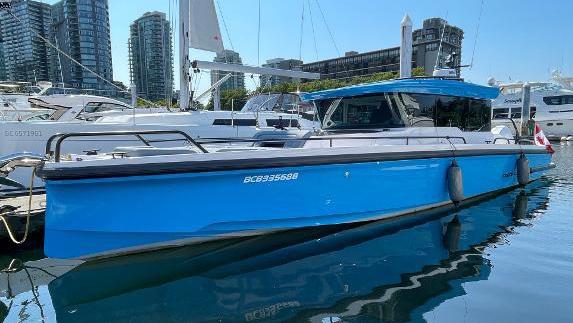








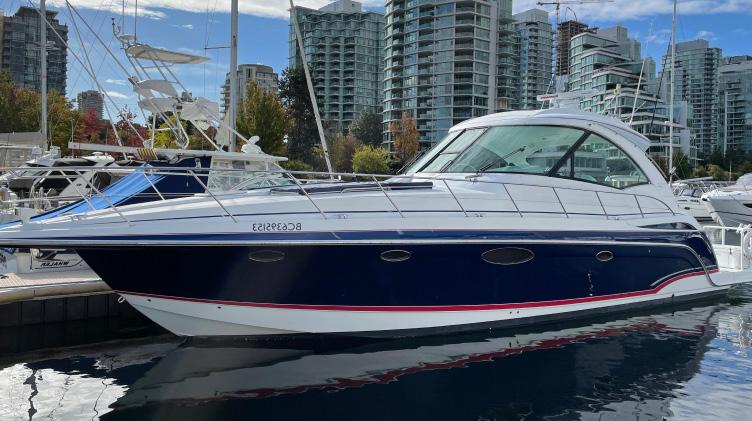



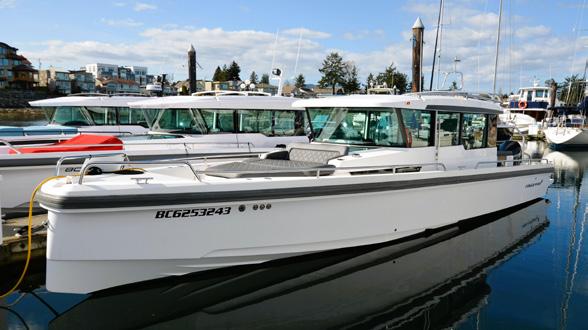
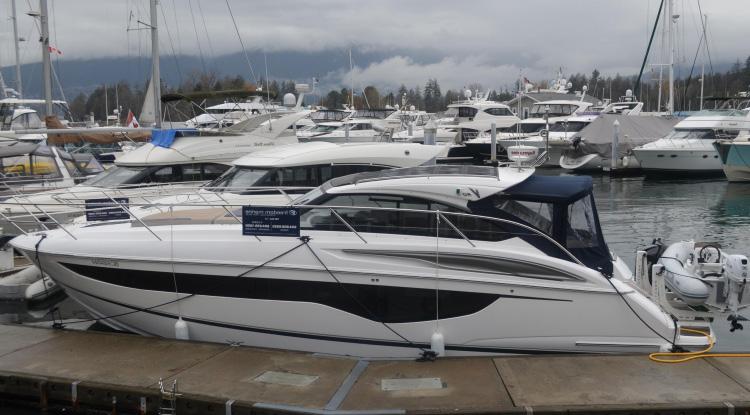








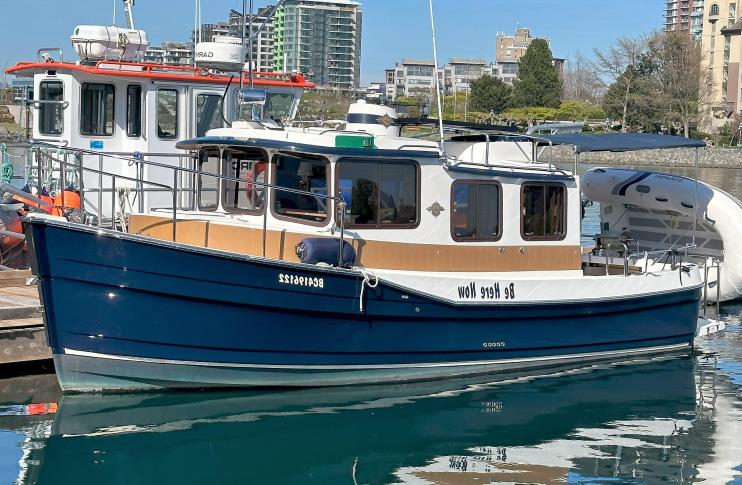





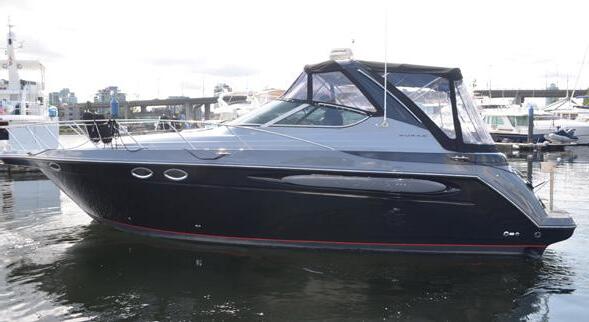



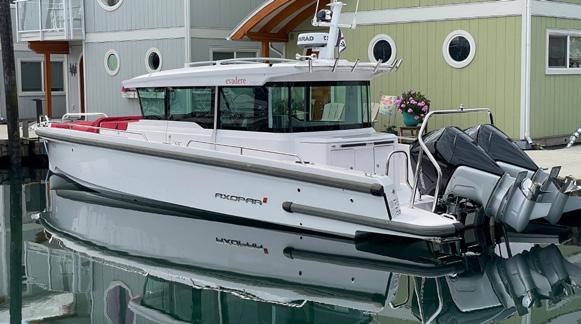


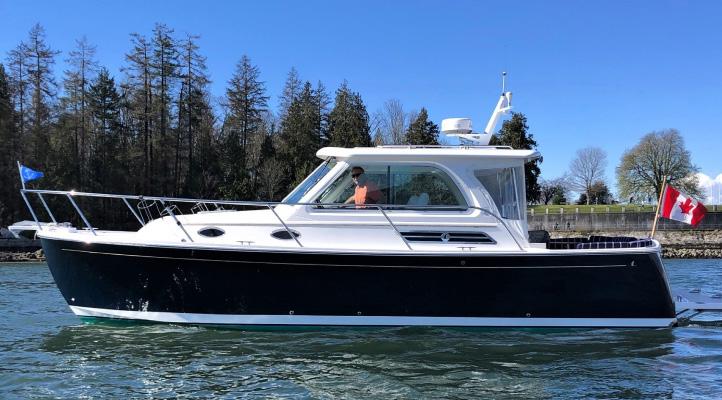



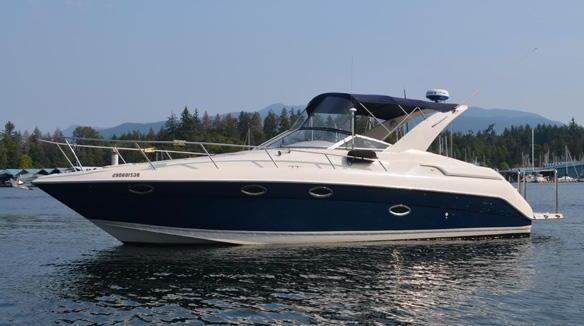



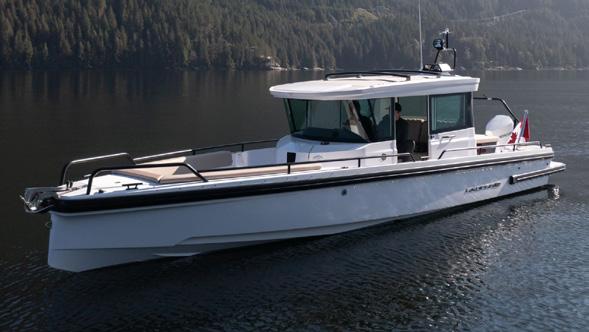
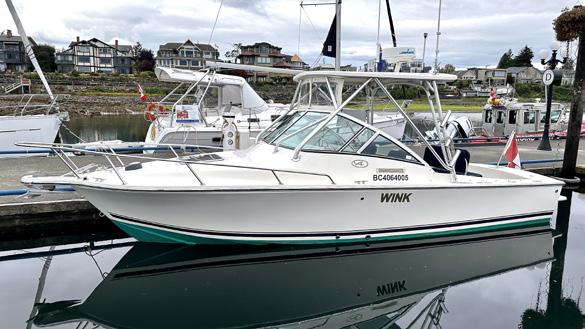










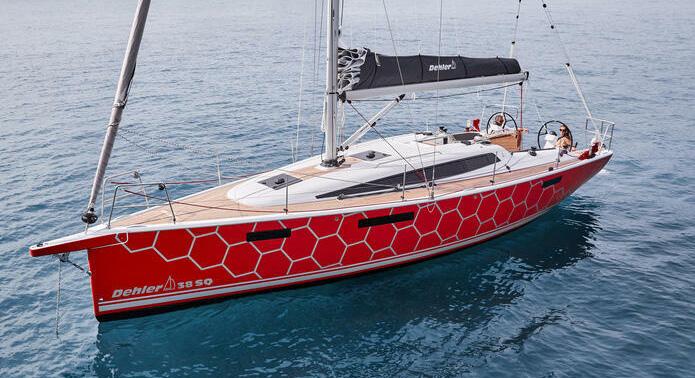



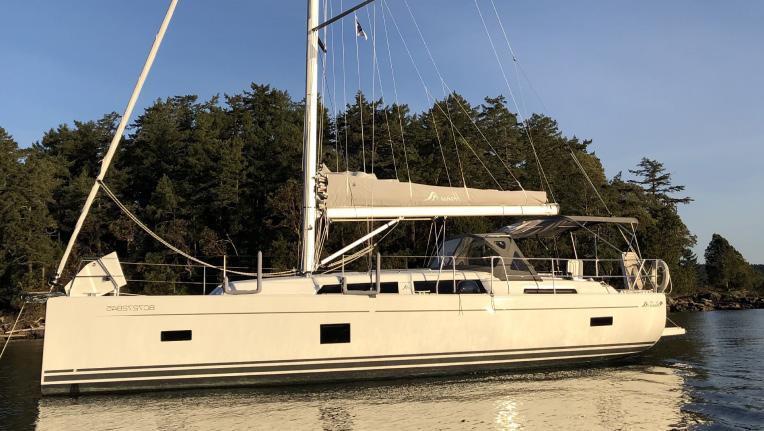
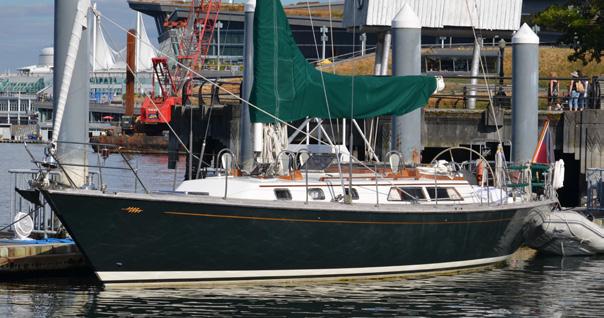

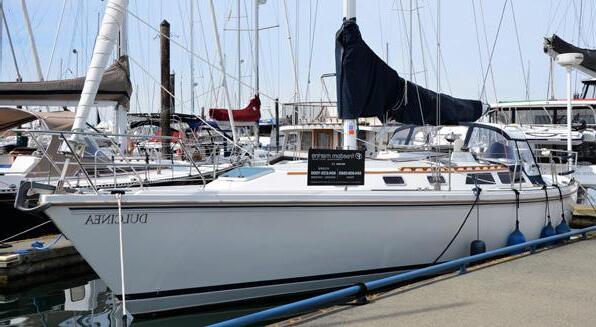

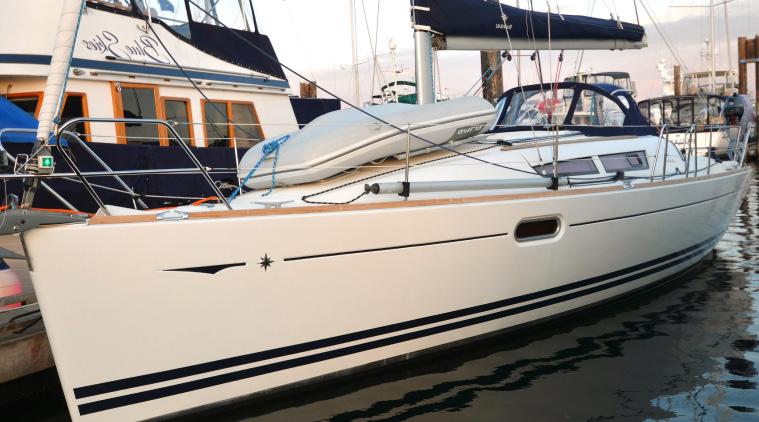



2013 - This high performance cruiser has a comfortable 3-cabin layout with room for your whole family to explore the coast! Highly optioned, this yacht is a must see! $1,499,000
RIVIERA
CAD
Volvo 480hp diesels. $325,000 USD
SEALEGS
Lightly used with very low hours
$ 194,000 CAD
$84,000 CAD

NAVIGATOR 48, 2006 - This Navigator is clean, highly upgraded with new electronics, hurricane heat, water maker, and so much more. Ready to cruise!




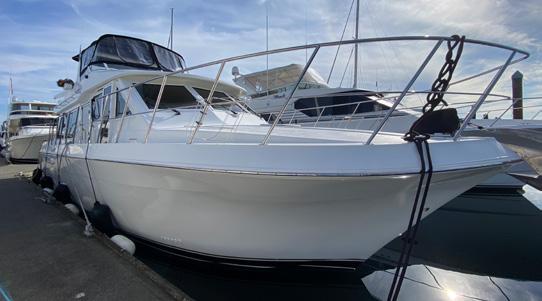


$530,000 CAD
upgraded Raymarine electronics, and electric bow thruster, this
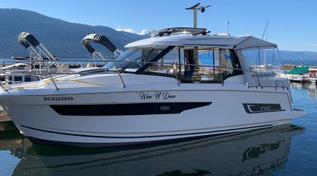



kept vessel is a must see! By appointment. $299,000 CAD

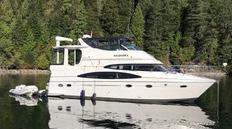

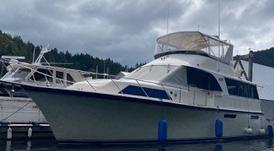
2023 - This is a stunning example of Riviera’s new 46 flybridge model. Twin IPS 950 volvo with D11’s, Hydronic heat, fully loaded electronics and much more. $ 1,849,000 USD


RIVIERA 46
GARTSIDE 37 PILOTHOUSE 2020 - An exquisitely detailed west coast pilothouse, launched in 2020. Finest of materials used throughout inc. double planked red cedar/ epoxy hull. RAIN BEAR is a true gem that must be seen! NOW $329,000 CAD

• Fully equipped
• Lithium ion batteries
• Low hours
• Volvo shaft driven,
• 17” Garmin screens and much more.
• Boathouse kept (available)
• NO Luxury Tax $1,259,000 USD
3025,





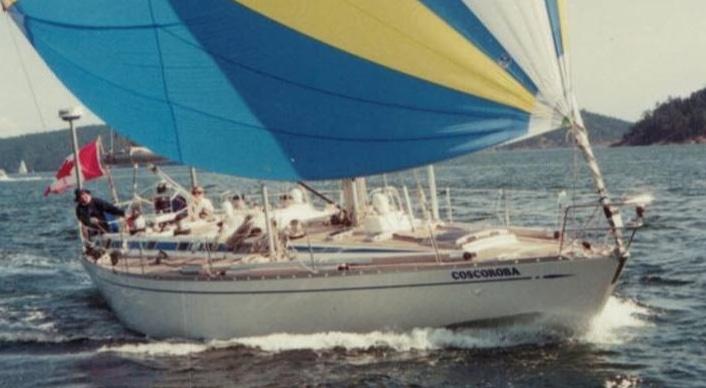
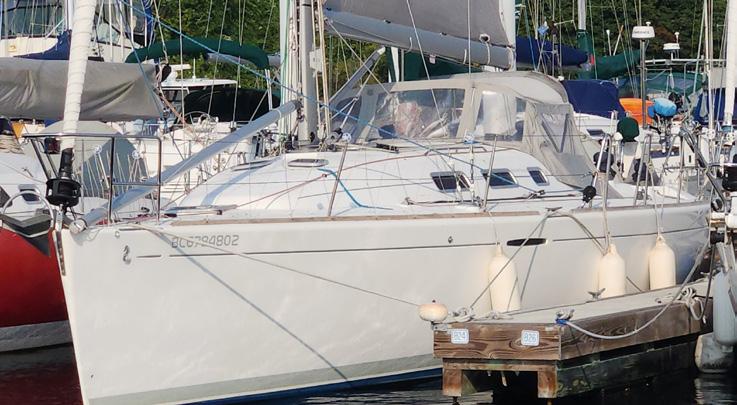













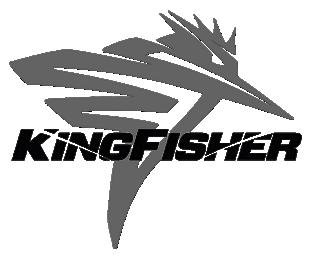






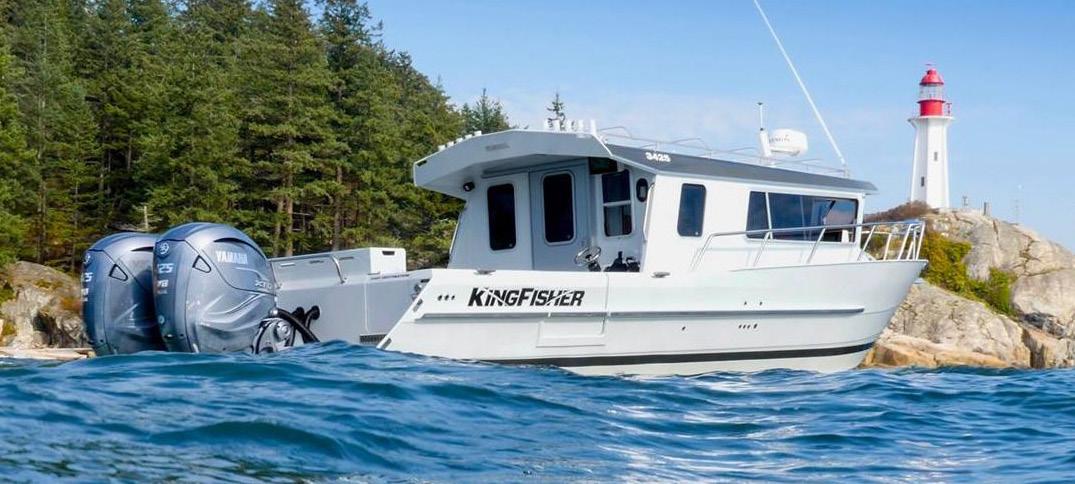
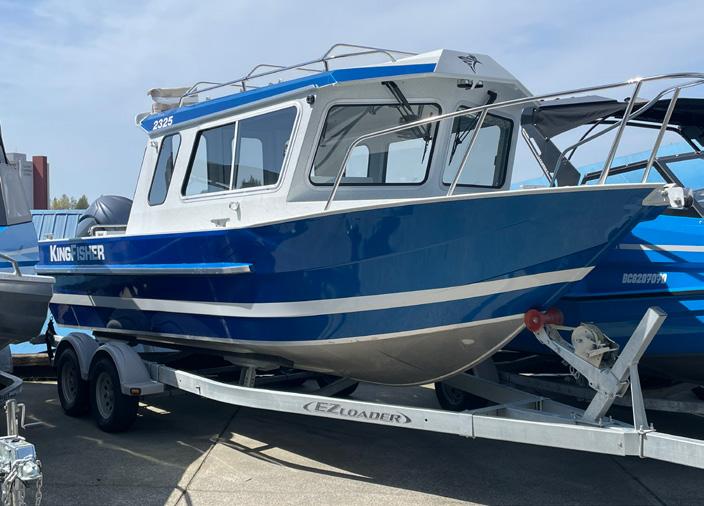

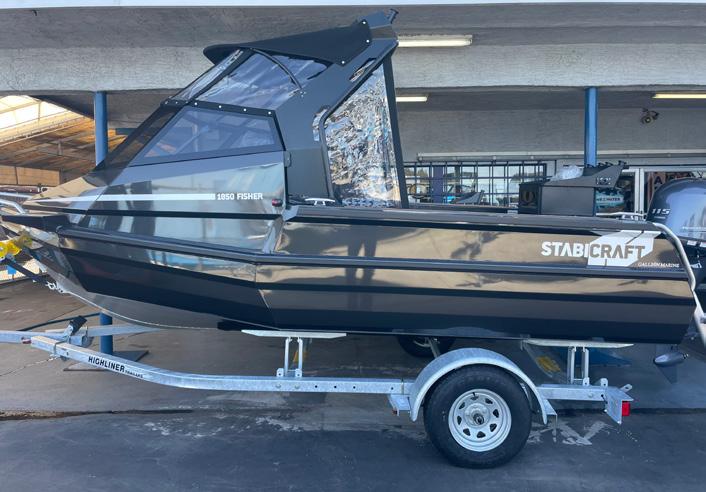




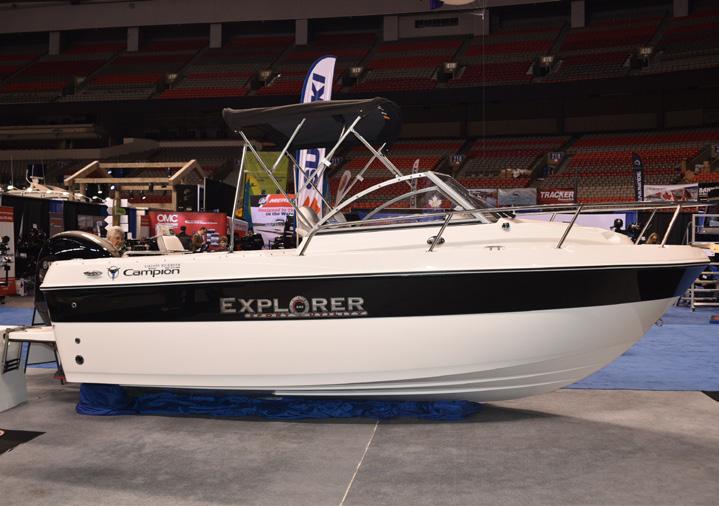

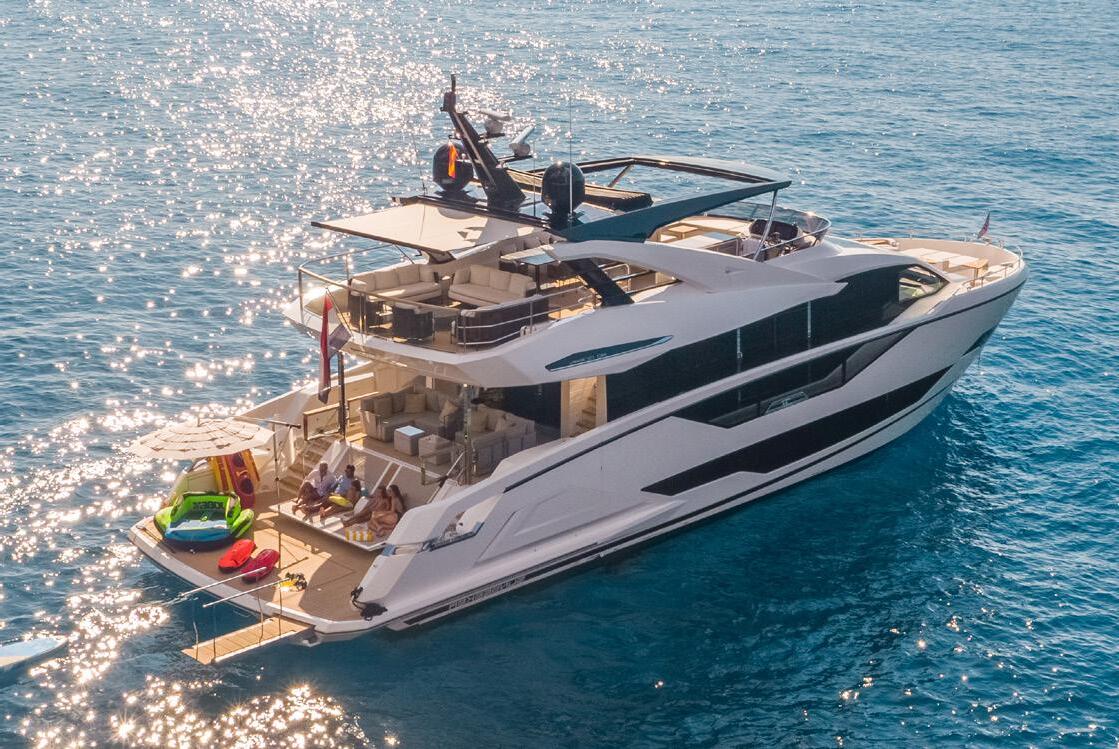

Since







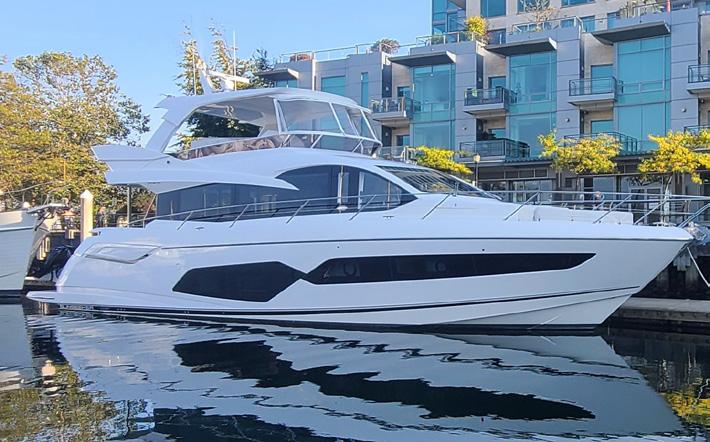



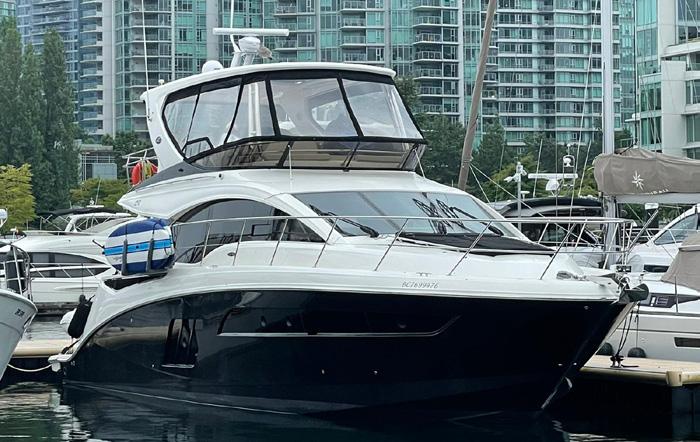

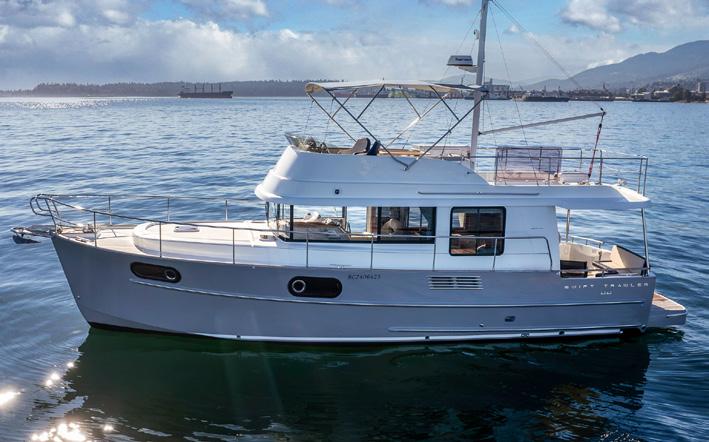








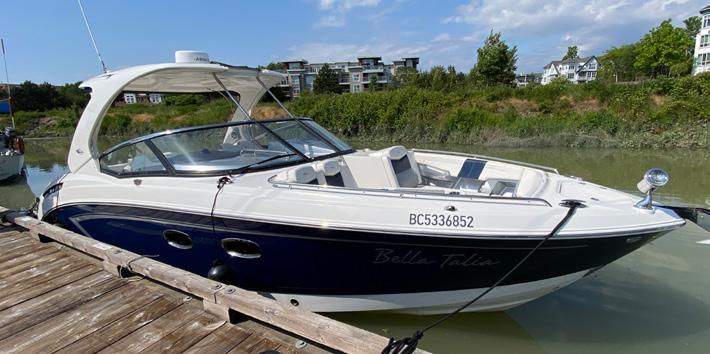
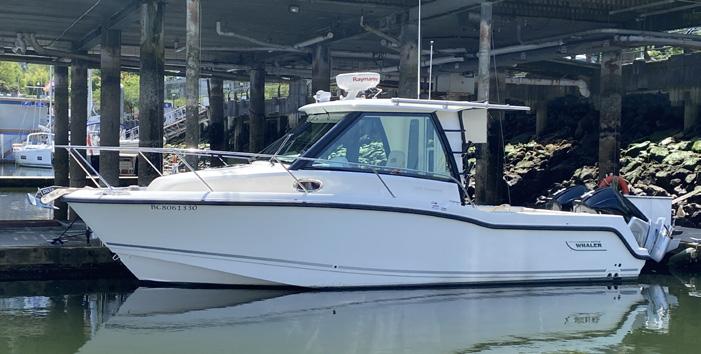







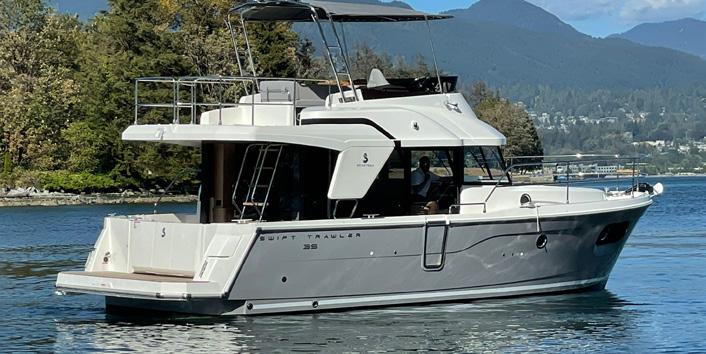









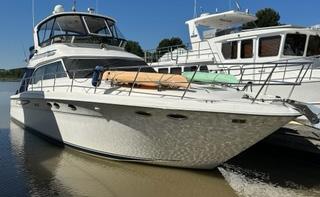


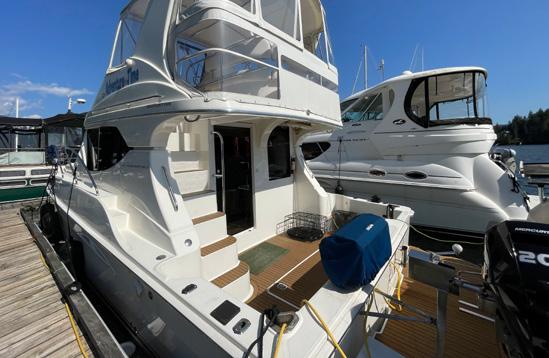












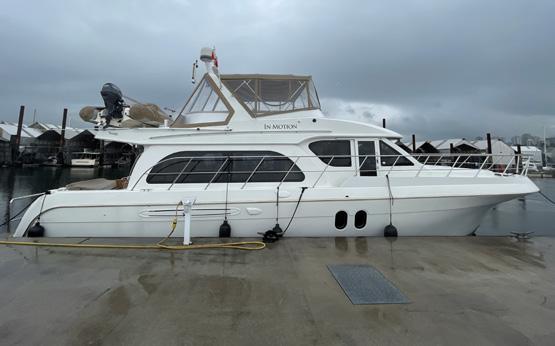


















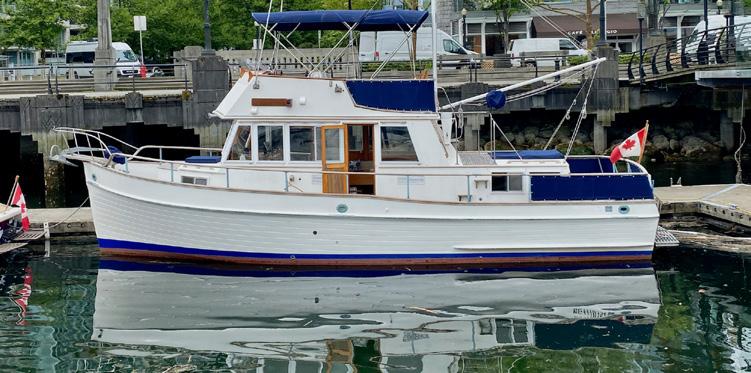




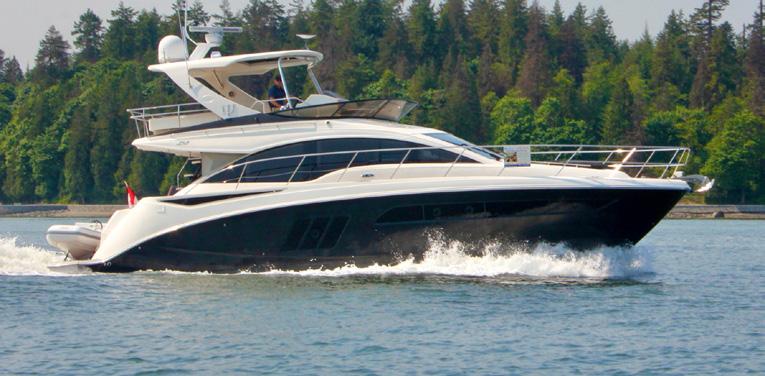



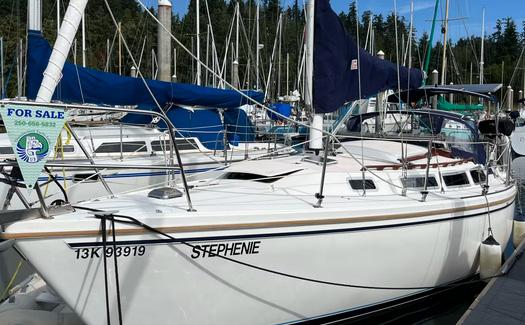
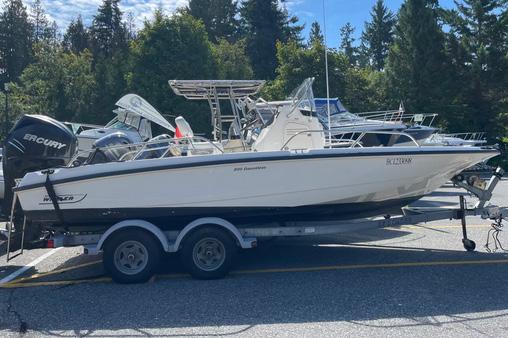



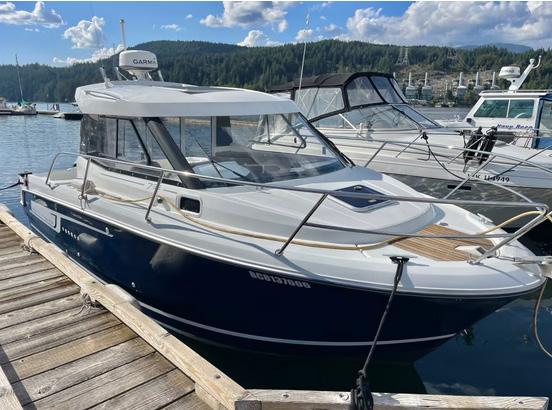
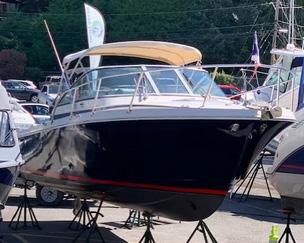



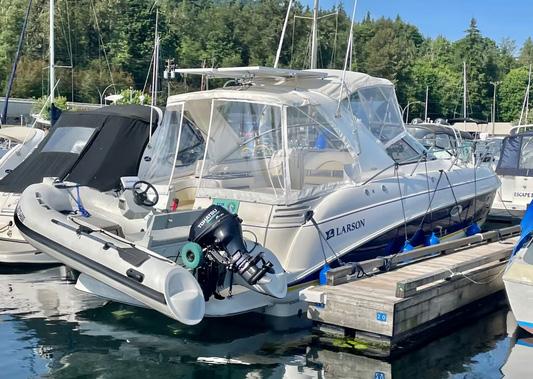


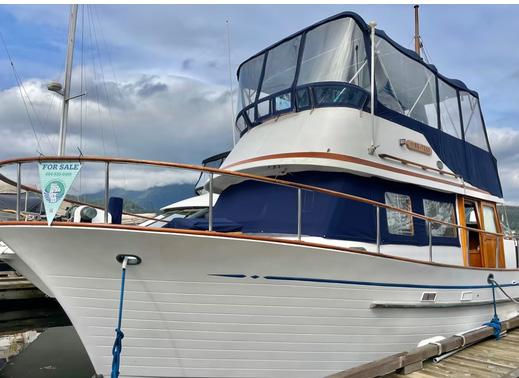


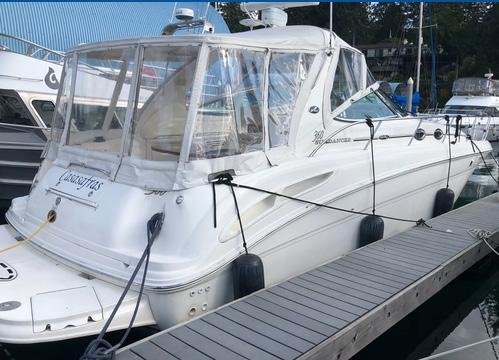





Sellers and buyers both benefit from a BCYCA member’s experience. BCYBA brokers assist buyers to find suitable boats in the local market or further afield in the international market. Similarly, they present locally owned boats for sale to local and international buyers.
Take the stress out of purchasing or selling your boat. A BCYBA broker is your guide through a successful transaction. They help in these ways:


• Identify and evaluate yachts of interest.
• Provide experience in negotiating acceptable sale terms.
• Ensure your deposit stays in Canada.
• Outline vessel documentation, title, importation, insurance and taxation issues.
• Utilize strong working relationships with co-operating brokers, marine surveyors, marine mechanics, boatyards and other key industry contacts.
• Provide local follow up to help you in your boating adventures.





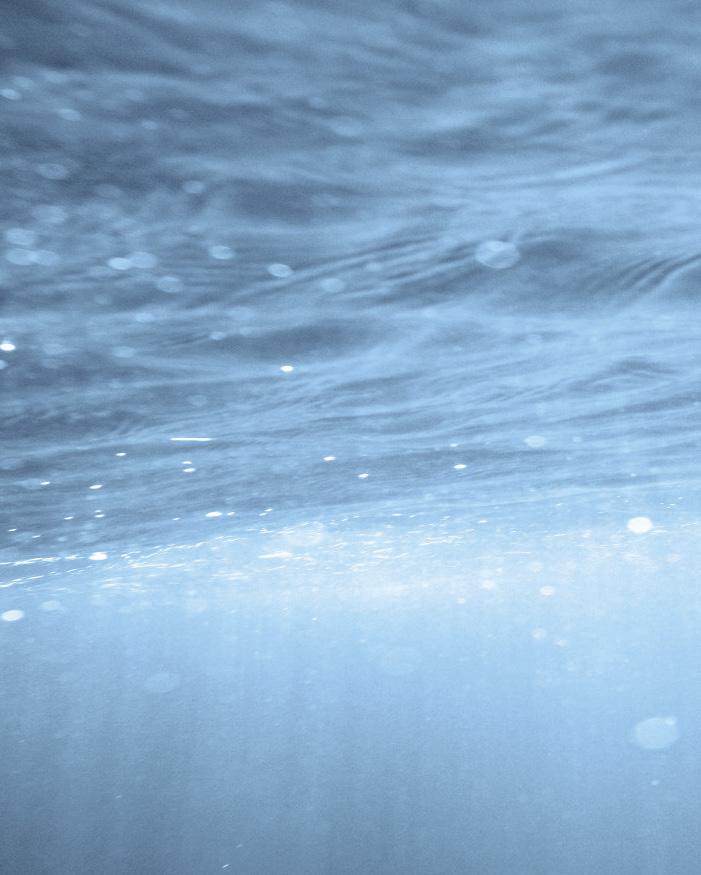
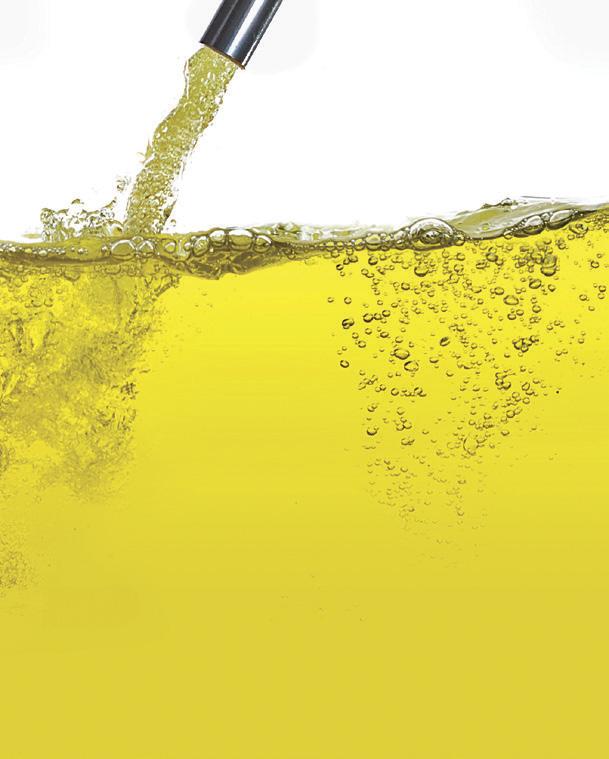




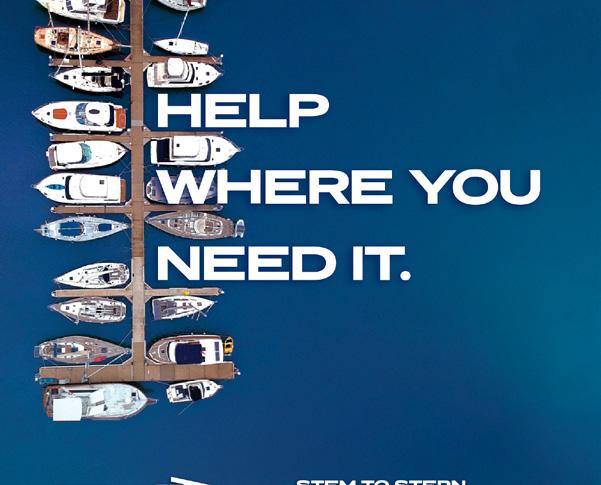


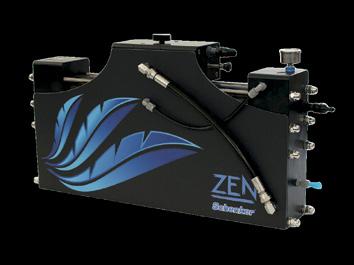


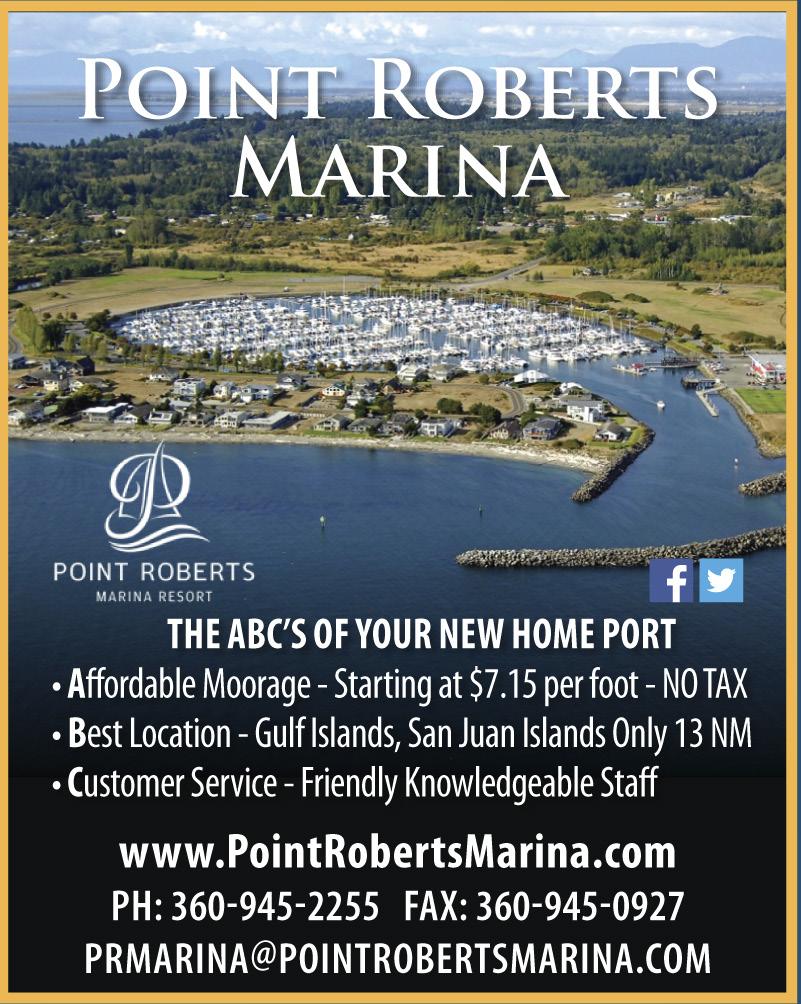








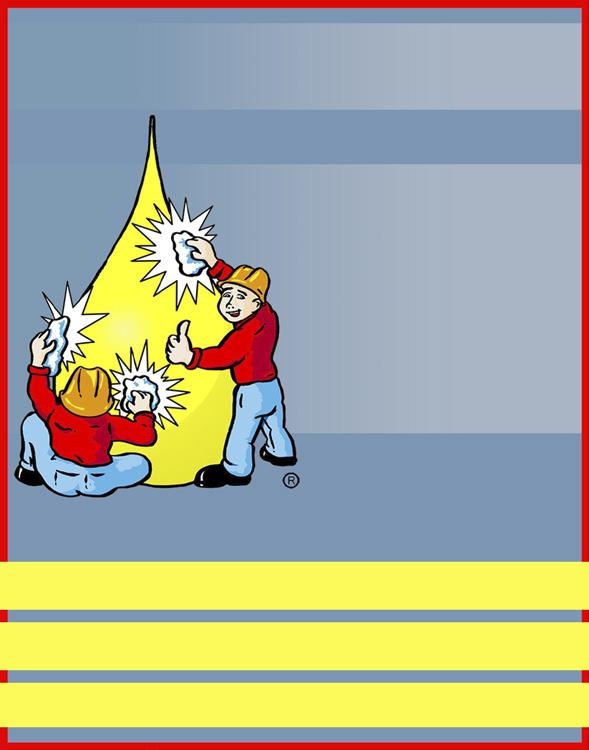






MULTI-FAMILY DEVELOPMENT SITE WITH MARINA - SICAMOUS, BC


Lakefront dev. site in Sicamous, BC. Upland parcel 2.55 acres zoned for multi-unit structure. Original plans and permits were taken out for 67 condo units each with marina slip. Remaining from this unbuilt venture is a 62,000 sq. ft. concrete parking garage with 162 stalls. Foreshore area / marina is on Sicamous Narrows, a popular boating route accessing the Shuswap Lake system. $3,999,000
RICHARD OSBORNE
Personal Real Estate Corporation
604-328-0848 rich@landquest.com
30 ACRES - CACHALOT INLET WEST COAST VANCOUVER ISLAND, BC

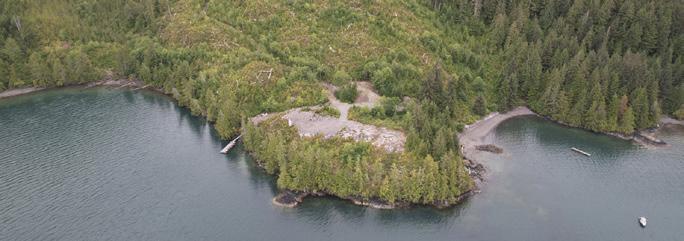
30 acres with 2,000 ft of oceanfront and 300 ft beach in Cachalot Inlet, Kyuquot Sound an awesome West Coast Vancouver Island location for fishing camp or private retreat near BC’s best fishing, surfing, and kayaking, building site and road from beach cleared. $600,000
RICHARD OSBORNE
Personal Real Estate Corporation 604-328-0848 rich@landquest.com
AWESOME SIDNEY ISLAND OCEANFRONT, BC
Very special 2.42 acres, 291 ft east facing oceanfront, incredible sunrises, sunsets bathe the view in splendid light. Beautifully treed with fir, cedar and arbutus, shared well excellent building sites. Communal dock and breakwater, airstrip, swimming pond, miles of roads trails, beaches and island caretaker. $528,000
RICHARD OSBORNE
Personal Real Estate Corporation


604-328-0848 rich@landquest.com
NAPIER HILLS RANCH NICOLA VALLEY, BC
A stunning lakefront ranch less than 3 hours to Vancouver. 264 acres. Property has an exquisite 3,864 sq. ft. log home + garage, quality 1,672 sq. ft. post and beam guest house, 6-stall horse barn and absolutely beautiful views. Very privately situated. $3,495,000
MATT CAMERON 250-200-1199 matt@landquest.com
SLAM BANG LODGE - THE ULTIMATE WEST COAST FISHING LOCATION
World class salmon and bottom fishing within a 10 minute boat ride. This floating lodge is located on Union Island in Kyuquot Sound. Includes 4 guest rooms, 3 bedroom cabin, large dining room, outdoor kitchen area and fish processing facility catering to guests and other lodges. $995,000

JAMIE ZROBACK 1-604-483-1605 jamie@landquest.com
JASON ZROBACK 1-604-414-5577 jason@landquest.com
BC LANDPRO GROUP
QUATSINO 90 ACRE OCEAN AND LAKE FRONT PROPERTY, BC

90 acres, 2 titles 1,150 ft oceanfront in Hecate Cove and 1,850 ft lakefront on Colony Lake in Quatsino on the west coast of Vancouver Island. Road goes through property. May have subdivision potential. Substantial mature timber, some cedar, no estimate of volume. $1,500,000
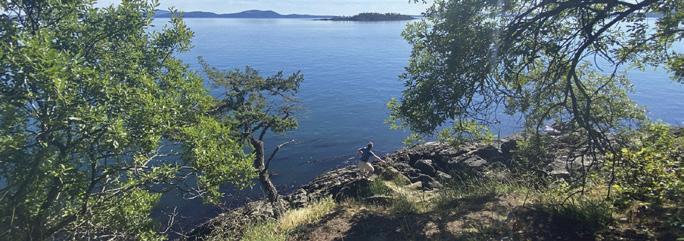
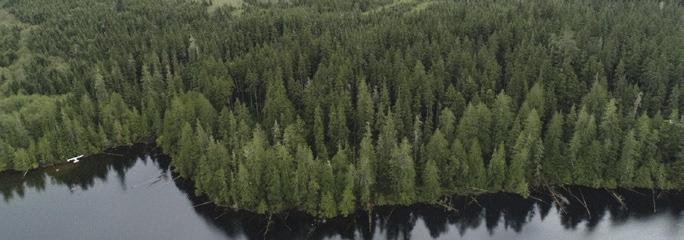
LAKEFRONT ACREAGE AND CUSTOM-BUILT LOG HOME - CANIM LAKE, BC


Must see, custom built, 3 storey log home on 3.99 lakefront acres. 3 bedroom, 3 bath home with large sundecks offering stunning views of Canim Lake. Fully serviced, excellent road access, backing onto Crown land. Ultimate lakefront retreat in a prime location with income potential. $719,000
FAWN GUNDERSON
Personal Real Estate Corporation 250-982-2314 fawn@landquest.com

DAVIS BAY BEACHFRONT ESTATE SECHELT, BC
8.68 acre trophy oceanfront situated on Davis Bay on the Lower Sunshine Coast. Walk on beachfront with approx. 600 ft waterfront. Private estate, family compound or development. Privacy, covered in mature trees, walking distance to amenities. $5,500,000
JASON ZROBACK 1-604-414-5577 jason@landquest.com
JAMIE ZROBACK 1-604-483-1605 jamie@landquest.com
BC LANDPRO GROUP
PRIVATE FLOATING LODGE
TLUPANA INLET - NOOTKA SOUND, BC
Turnkey private floating fishing lodge in secluded, sheltered Critter Cove, Nootka Sound, West Coast of Vancouver Island, one of BC’s best fishing areas. Well maintained, fully equipped, furnished and ready to go. Jump in your boat and go fishing. $950,000
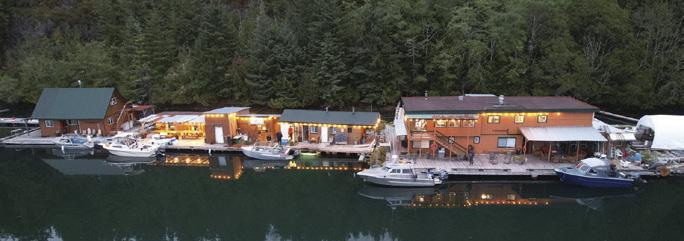
JASON ZROBACK 1-604-414-5577 jason@landquest.com
JAMIE ZROBACK 1-604-483-1605 jamie@landquest.com
BC LANDPRO GROUP
The Nechako Lodge has six guest rooms, a commercial kitchen and large gathering area. There is also a two bedroom residence, four cabins and six RV sites. Solar and wind power the property. Includes a foreshore lease with docks, breakwater and boat launch. $795,000
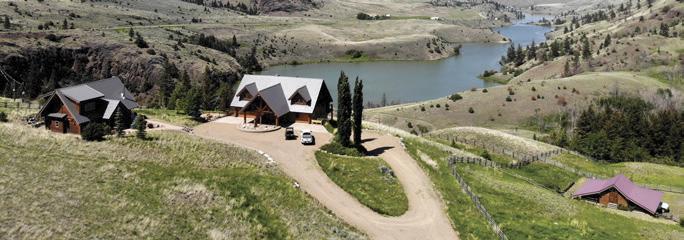
OCEANFRONT PARADISE WITH ENDLESS POSSIBILITIES ON PORCHER ISLAND, BC
114 acres with 1,500± ft of southern exposed oceanfront near Oona River. Includes main house, 6 guest cabins with revenue potential, shop, and boat house all serviced by power, water and septic. Also includes large list of machinery and equipment. $1,500,000
JAMIE ZROBACK 1-604-483-1605 jamie@landquest.com
JASON ZROBACK 1-604-414-5577 jason@landquest.com
BC LANDPRO GROUP
This iconic, well-established and profitable business in the Heart of the Shuswap includes two homes, storage facilities, 112-slip marina, a restaurant and rentals business, and gas pump facilities. Fantastic business opportunity with beautiful lake view home. $4,950,000
West Coast waterfront retreat - 1.77 acres with beautiful ocean views in a lush forested setting with a brand new, contemporary high end cottage. Garden Bay • $1,190,000
Extraordinary Downtown Sechelt 3bed/3bath esplanade waterfront property with some of the most gorgeous, unobstructed ocean views. Completely renovated from top to bottom. Sechelt • $2,500,000

Rare combination of sun drenched South-West facing waterfront with year round, protected deep water moorage. Situated on the prime point in Secret Cove with stunning ocean/island views & sunset. Halfmoon Bay • $2,950,000
One of the most spectacular waterfront properties on the West Coast of B.C. 20 acres, 3,000’ of shoreline, a stunning home & protected deep water moorage at your private dock. Nelson Island • $5,600,000
Beautiful ocean views are featured from this “like new” 3 bedroom/2 bath waterfront modular home. Ideally situated to allow for a primary residence in front, on the oceanfront side.
Halfmoon Bay • $1,099,000
“Quarrybbean” an exceptional lifestyle retreat, 2.5 acres of spectacular waterfront on Nelson Island w/2 solar powered buildings. Nelson Island • $2,198,000
Premier
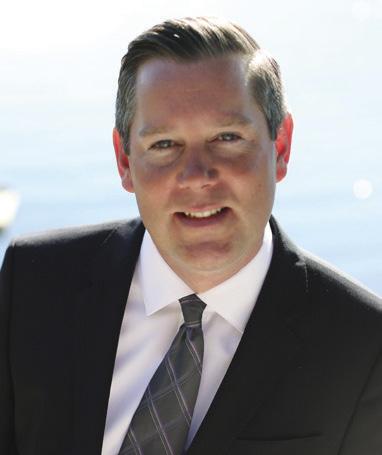
residence
a private & licensed dock. This luxurious home with over 5,000 sq.ft. of living space boasts every imaginable feature. The epitome of comfort & style.
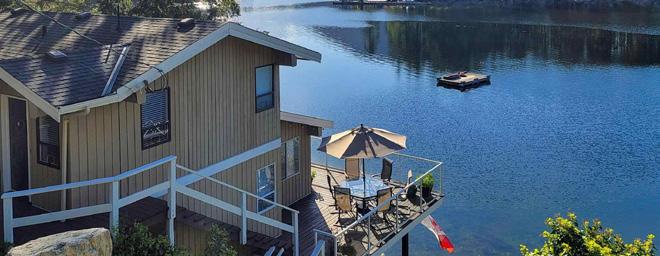
Secret Cove • $5,980,000

Very private low bank waterfront just mins to Sechelt! Easy access to the pristine beach from this 2,800+ sq.ft. recently reno’d Rancher with level entry access.
Gorgeous esplanade waterfront property with unobstructed ocean views. Close to several marinas, the ocean, lakes & hiking. A beautiful building site for your future home!


Garden Bay • $799,000
Sechelt • $2,299,000
Very private low bank waterfront just mins to Sechelt! Easy access to the pristine beach from this 2,800+ sq.ft. recently reno'd Rancher with level entry access.





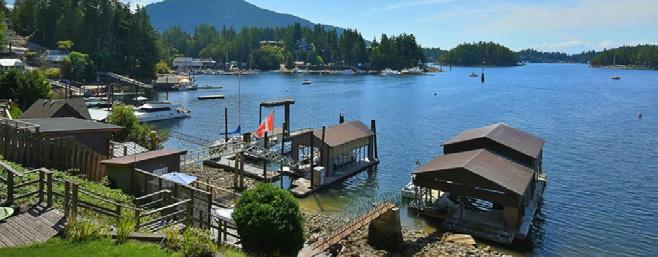
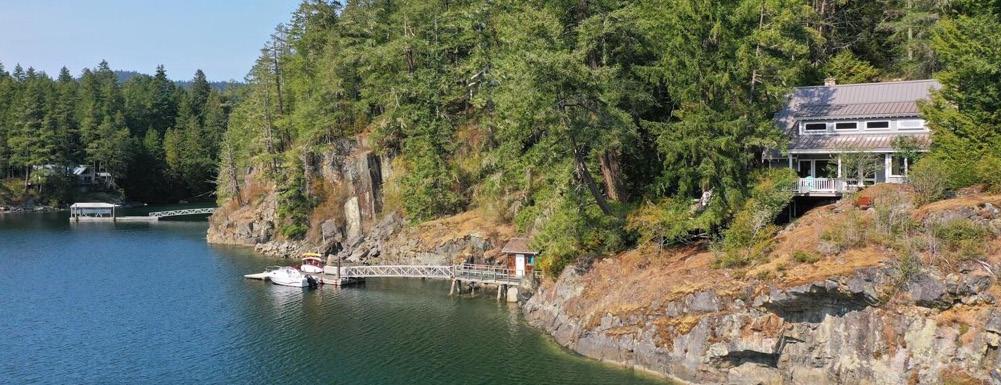
Sechelt • $2,299,000


Custom built, totally renovated 4 bedroom waterfront home in “Farrington Cove,” offering moorage for your boat, tennis court & a quiet, peaceful community. Garden Bay • $2,480,000



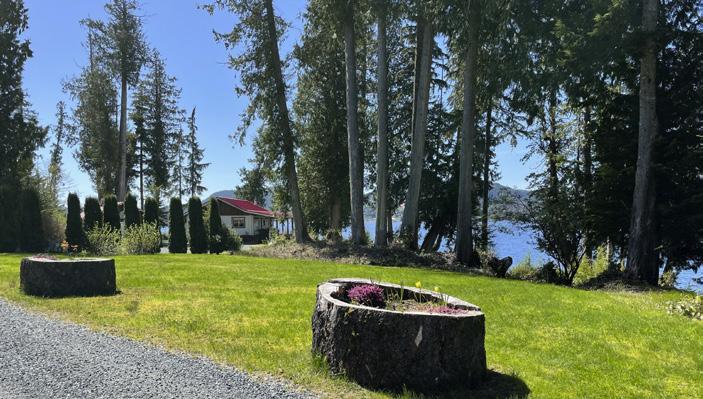
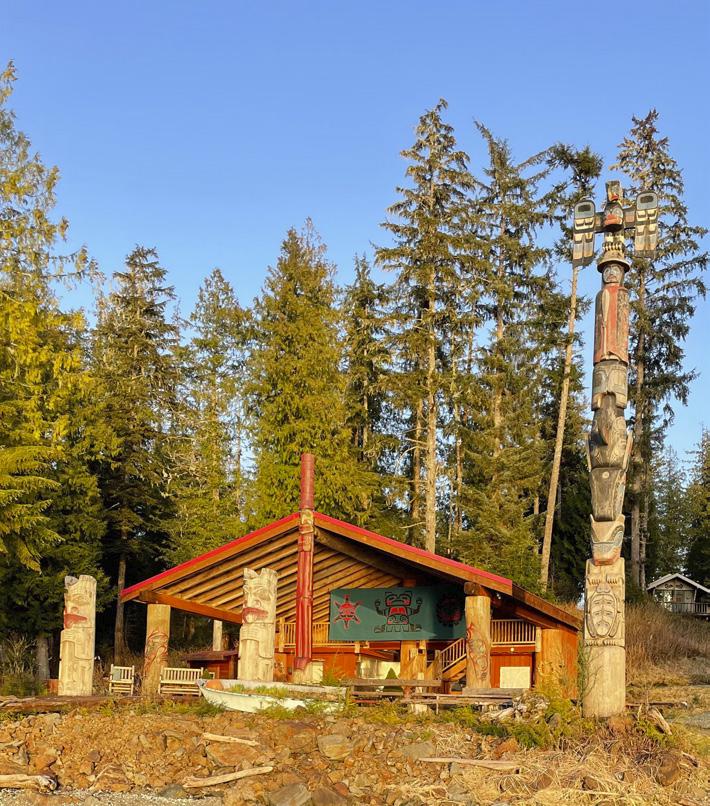




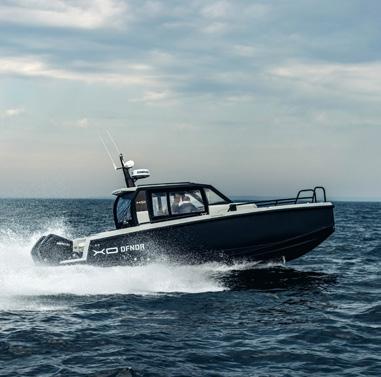




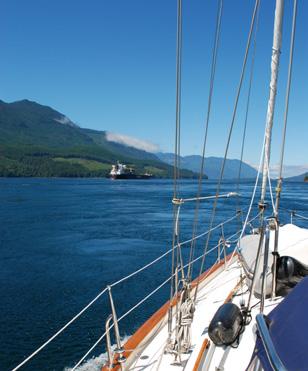

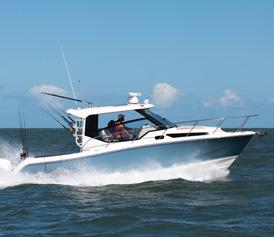





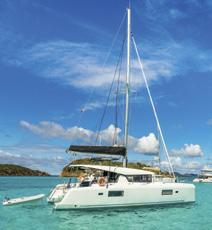

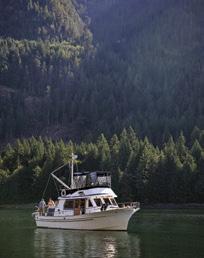
Unique Experiences in Amazing Places
Up to 32 Flights Daily to Nanaimo and the Gulf Islands from Vancouver





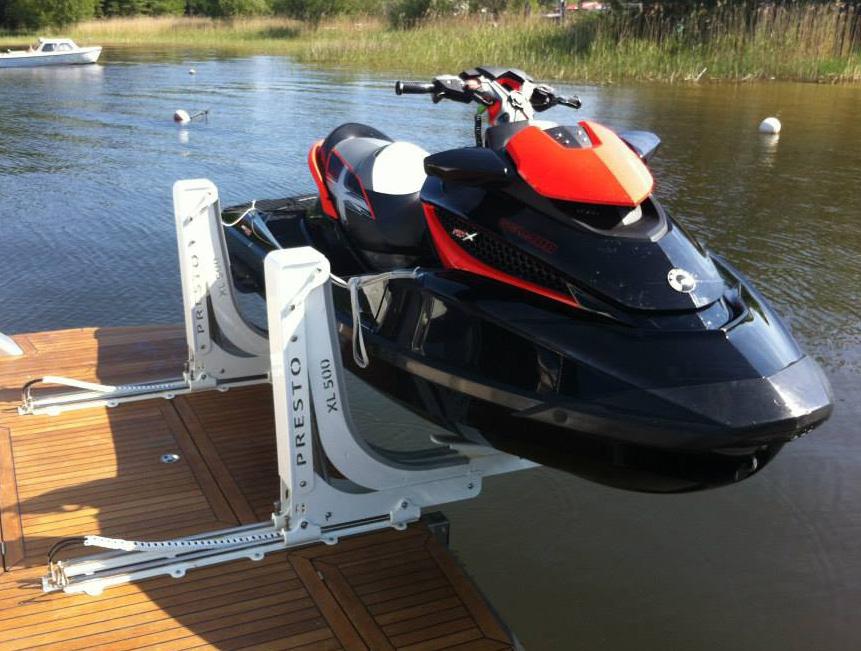



BRING IN YOUR UPHOLSTERY AT THE END OF THIS SEASON AND WE WILL STORE AND HAVE IT READY FOR NEXT SPRING

WE ALSO DO CUSTOM
WE ALSO DO CUSTOM
PRICE: $39,999
This is may be the nicest and most fully outfitted 21’ Monaro you’ll ever find. It underwent a factory refit in 2019 and even included new gel coat. This proven hull dominates big ocean waters and we have recently enjoyed trips on the West Coast of Vancouver Island and an 1100 mile return trip from Vancouver to Ocean Falls and all points in between. This boat has been fully equipped for day trips, watersports, fishing, overnighting and extended cruising. It performs perfectly with the lightweight and efficient 200 Merc Optimax. This motor has been used on Offshore fishing boats for years and is tried and tested. It has variable oil and fuel injection and only has 242 hrs on it. It has been lovingly maintained and looks new. Includes a new, double axel, galvanized trailer.

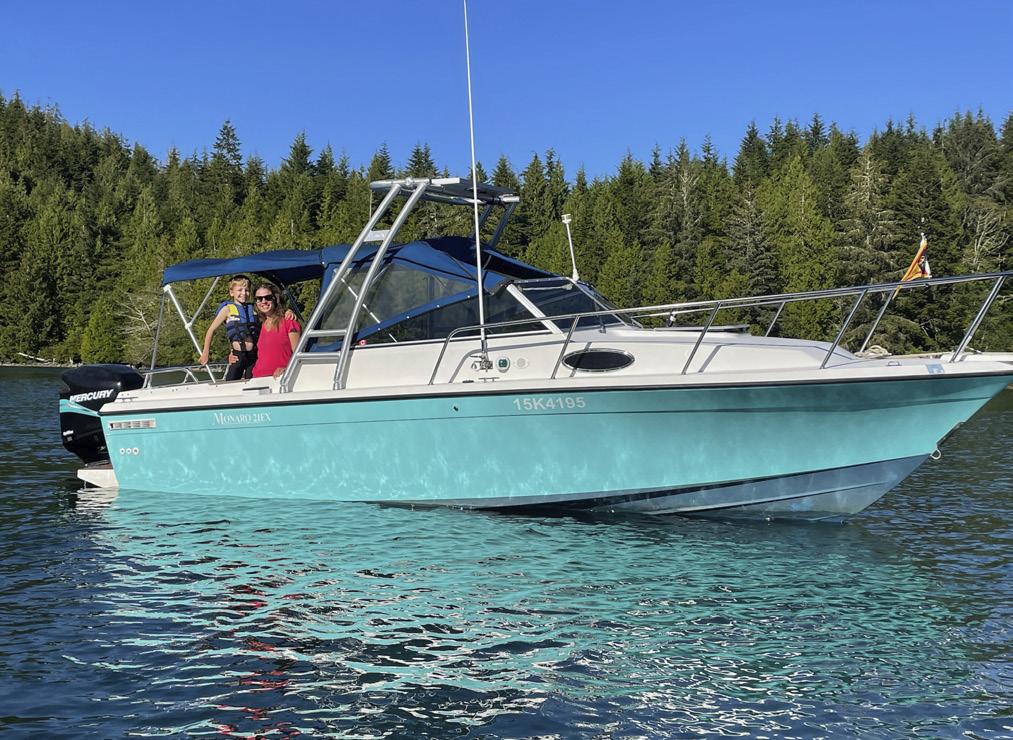

The Basics: Moored in fresh water






• Seasonal winterization (incl. winter wrap)
• Camper back canvas
• Spare stainless steel prop
• Pump out toilet
• Sink and large freshwater tank
• Raw water washdown
• Aerated live well w/ raw water intake
• Endless storage
• Swim ladder
• Downrigger mounts
New Equipment (2020-2021) and Updates Include: Garmin 7000 digital GPS
• VHF
• Chrome Steering Wheel
• Fridge
• 150 watt solar panel
• Dual batteries
• All upholstery

•
Rear convenience table (which holds a 2 burner stove)
• Rear sleeper seat/bench


• Towing/ radar arch
• Protective hull wrap
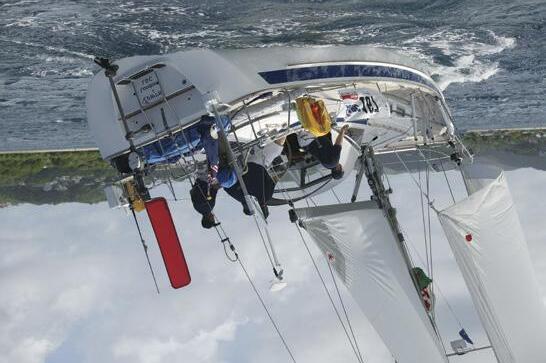
• Anchor & chain
• Paddleboard Rack
• LED cabin lighting
• Slopeback canvas for storage and towing
Contact info and more pictures: text 250-717-6722 email dgilchrist@kelowna.ca
2006 Carver 444 CMY, BOW & STERN THRUSTERS, LOW HOUR
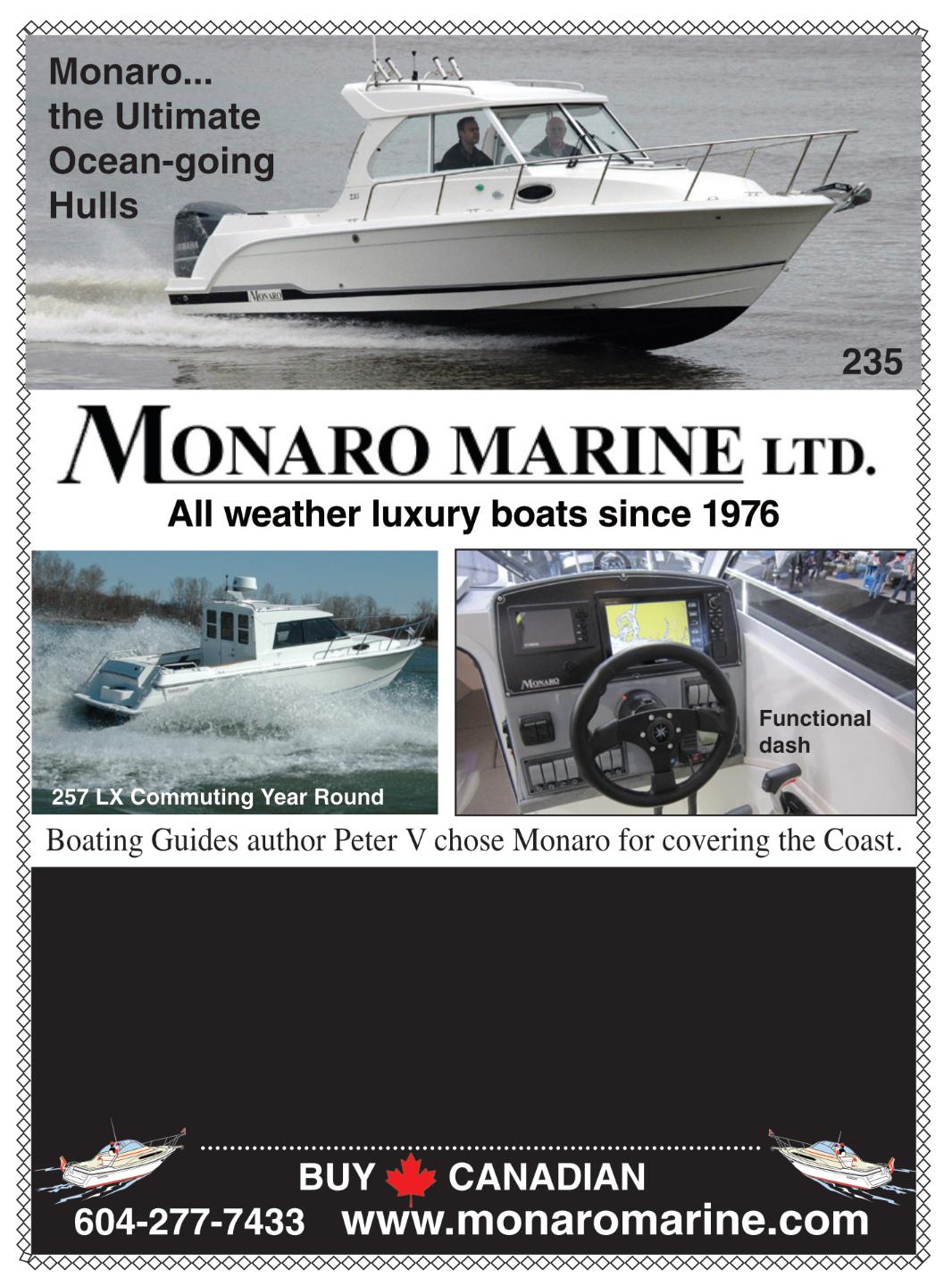

2004

1969 32’ Grand Banks Trawler
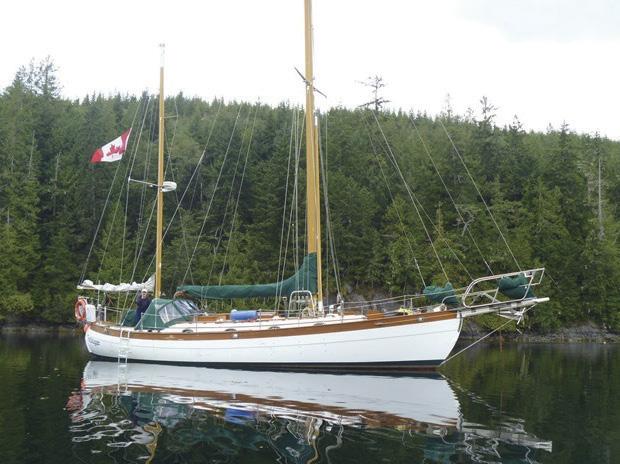
maker, Full Garmin Pack, Downriggers, AC/ Heat, Beautiful “Nautilus’ Interior - Save Over New!




CAD
$192,000 CAD

2005 Hunter 41DS (Deck Salon), WOW! Fantastic layout, HUGE SALON, Two Private cabins with ensuite heads, Yanmar, Deluxe Full Enclosure, Power Main Winch, SS Davits W/ Rib Tender Package - Great Alaska Vessel!

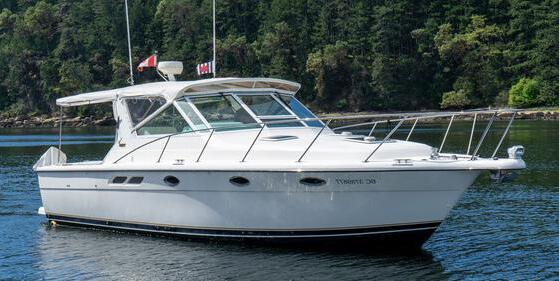



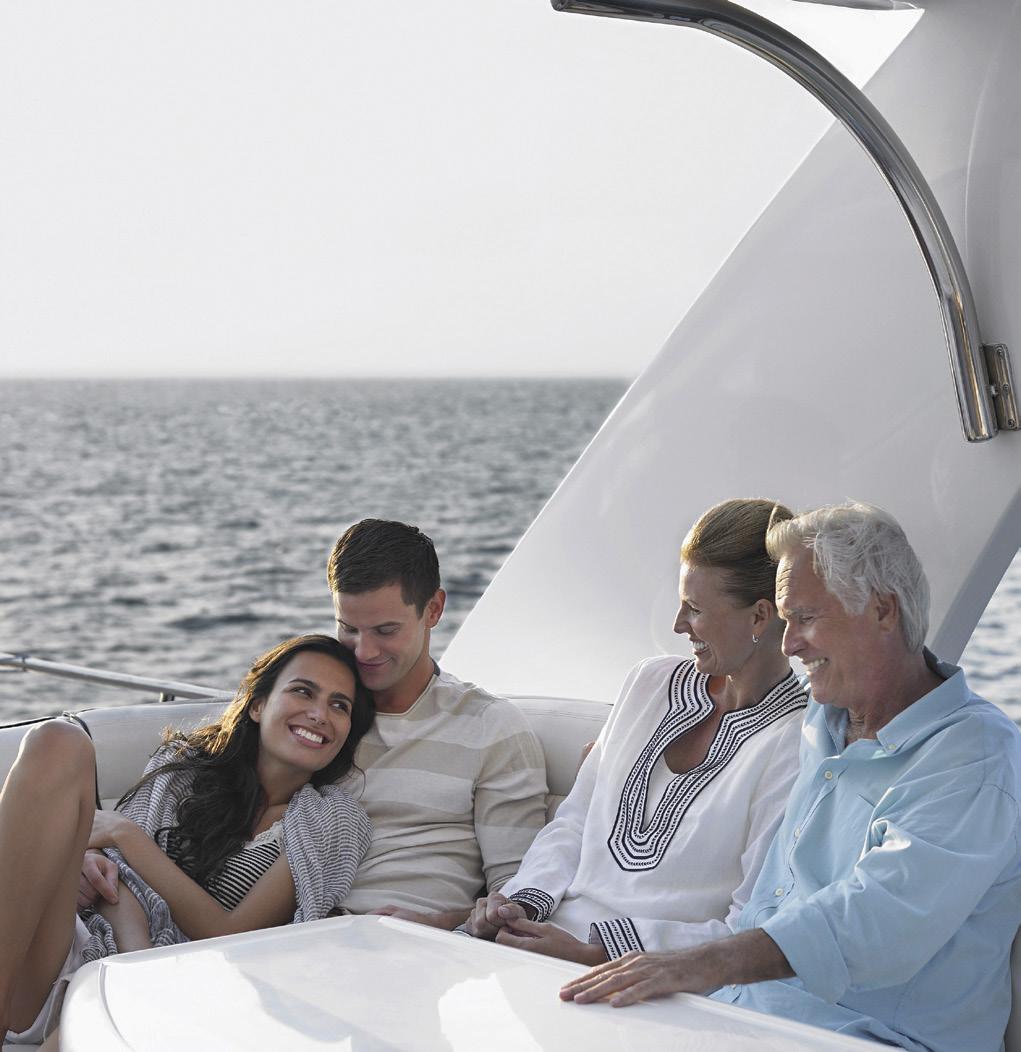

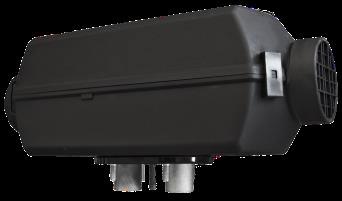




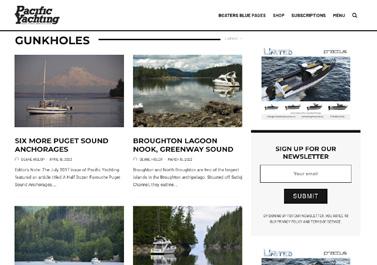




and heavier boat. With stars in our eyes limited only by our budget we were struck by two-footitis more times than we care to admit. Finally we acquired a proper little yacht, a made in Canada Tanzer 26, which featured a small cabin suitable for longer adventures. It wasn’t long before there were three similar Tanzers on the lake and the race was always on whether declared or not.
But the call of the ocean was deafening and in 1985 we trailered Great Expectations to Semiahmoo, Washington and never looked back. The ocean was alive, endless and bountiful. We never crossed vast seas or went very fast but we explored the San Juans and Gulf Islands and much of the BC coastal waters for the next 30 years and still have yet to see it all. We have sailed and boated in many corners of the world from the Mekong Delta in Vietnam to the Lakes District in the UK and agree there is nothing comparable to home.
In 2002, after six sailboats we bought our first powerboat, a Canoe Cove 42, and this time had it trailered from Toronto to Vancouver Island. It was like learning to boat all over again and even though we had years of basic boating experience the captain and crew were once again properly challenged. The “captain” always said that docking the Margoletta was like coming into dock with all sails up. We are armchair boaters these days and look back on a lifetime of nautical adventures and mishaps with few regrets about slowly going nowhere at great expense in one of the most beautiful spots in the world.


Have a funny or interesting story? Cockpit Confession is a readersubmitted column and we are always looking for another good yarn. Send your 600-word story to editor@pacificyachting.com. We’ll send you a T-shirt!

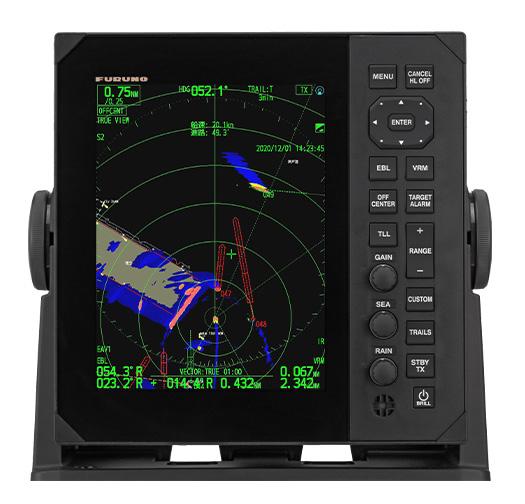



Ifoot Albacore sailing dinghy. We had to dig it out of a snow bank in Quyon, Quebec but soon had it shipshape and Bristol fashion for spring boating on the Ottawa River just a block from our home in Aylmer, Quebec.
I suspected boating would be in the cards and I married him anyway. From sailing a rented dinghy on Dows Lake in Ottawa during early courtship years to canoeing in Jasper during our honeymoon in August, 1973, boating quickly became a central theme in our lives. We had been married less than a year before we found our first boat, a sturdy 15-
Our first sail was wild, the captain and crew clearly out of their depth. After a wild and wet sail across the river in which we could do little but hold on and stay the course we approached calmer waters on the Ontario side. I hollered at the captain to “do something!” and he hollered back to cast out the anchor which would allow for a brief respite and regroup before heading back. The anchor was quickly dispatched only to realize we had forgotten to fasten the bitter end.
Gone was our brand-new, orange Canadian Tire anchor! As luck would have it, we had used bright yellow polypropylene floating anchor rode so we were able to paddle to rescue and retrieve the anchor. Incidentally that would not be last anchor we would lose over the years, but our anchoring did improve.
Our next sailing playground was on beautiful Harrison Lake in BC. With an exciting move west we trailered a newly purchased Siren 17 across Canada to a new home and new jobs in BC. The lake scenery was breathtaking and the winds strong and predictable, so naturally we soon required a bigger
Continued on page 113
 Mike Mockford
Mike Mockford

EMBRACE OPEN-AIR FREEDOM
The iconic Azimut Fly Series was forged out of tradition with the idea of offering a contemporary and sea-immersive experience, while inspiring the unique feeling of open-air freedom. Sleek and unexpectedly spacious Italian-made interiors are conceived to create a sensational atmosphere, filling days and nights with charming comfort and well-being.
AZIMUT. DARE TO AMAZE.
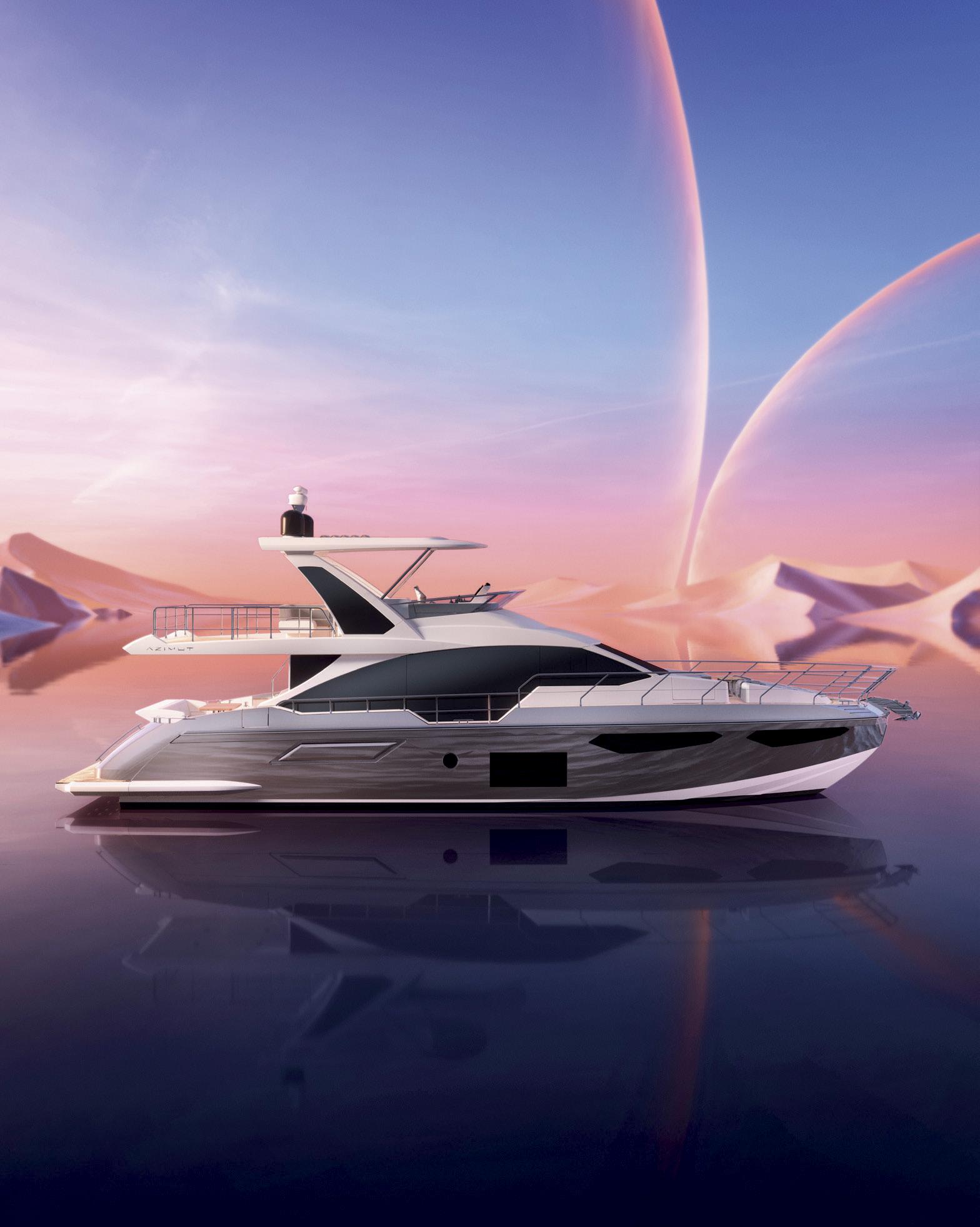
OFFICIAL DEALERS
USA: Alexander Marine USA, alexandermarineusa.com
Canada: Fraser Yacht Sales, fraseryachtsales.com